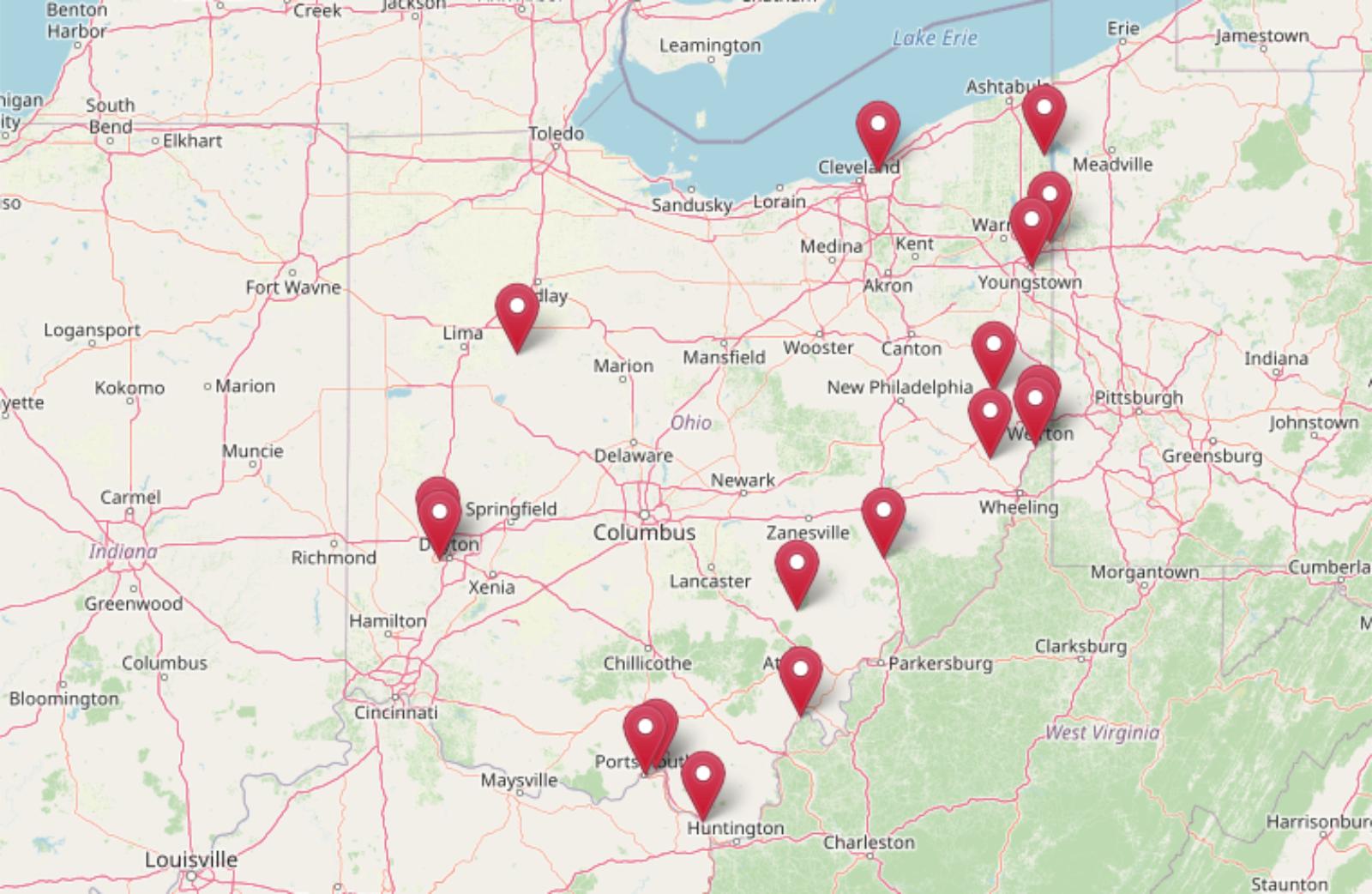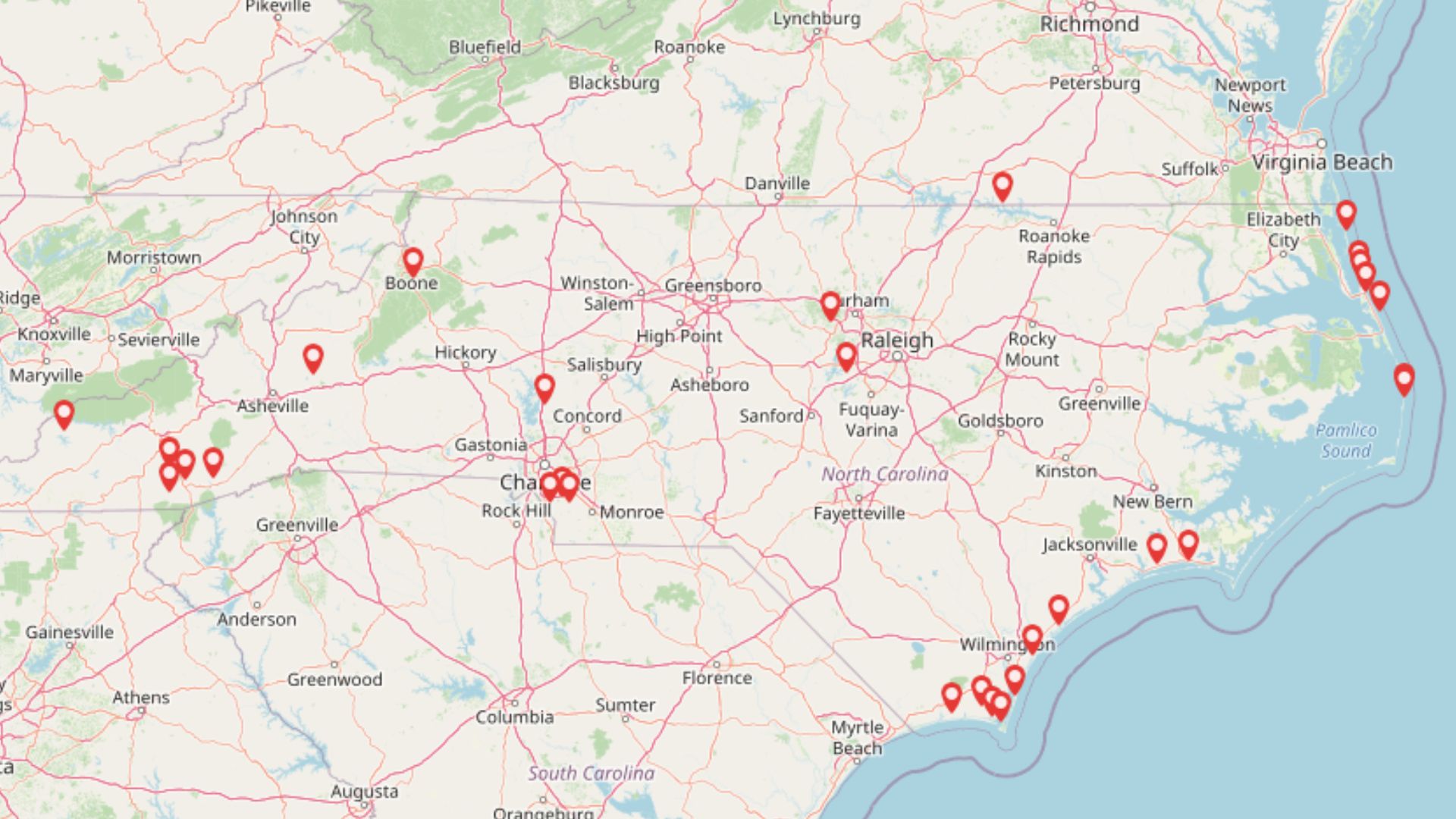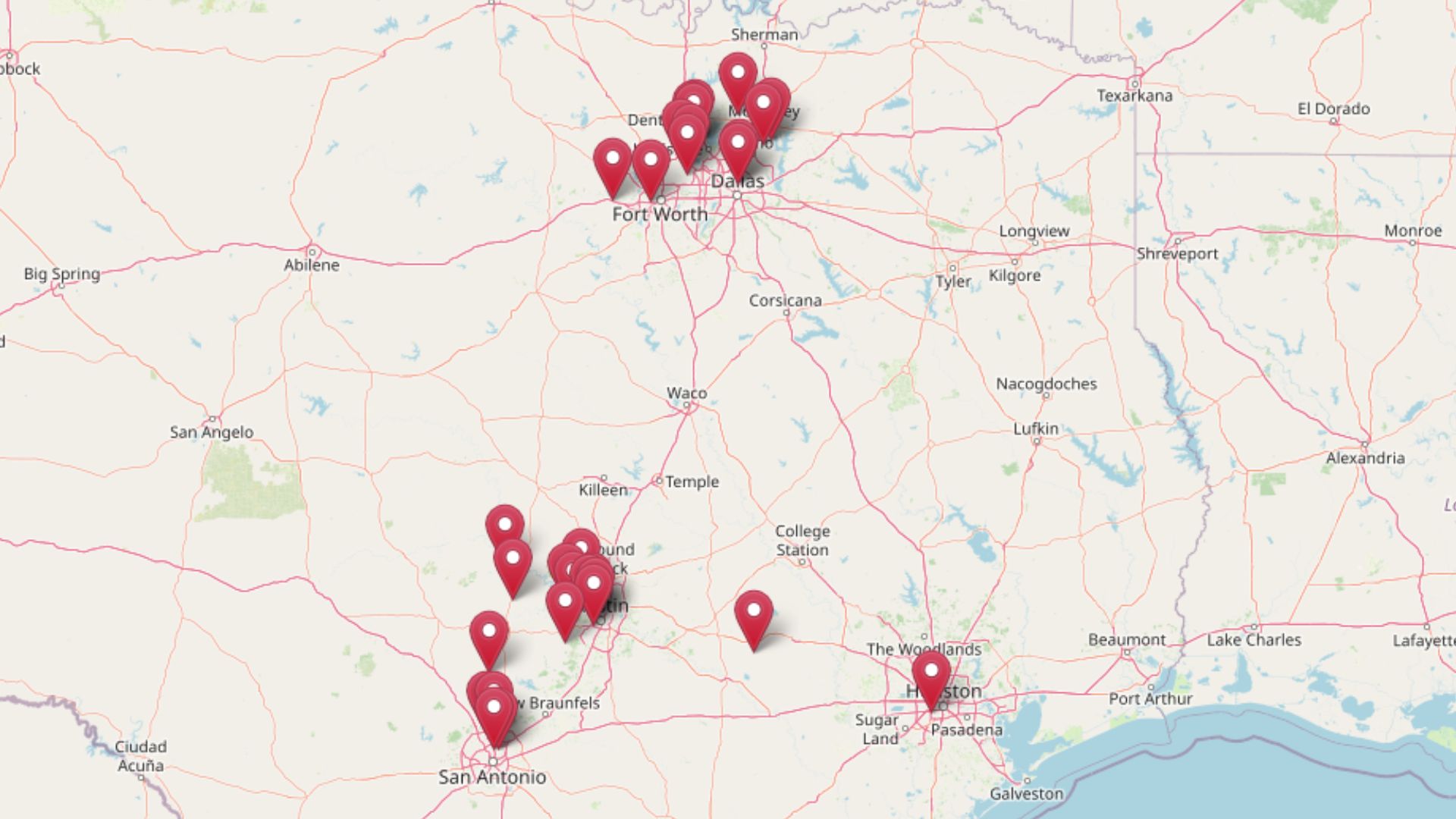
Using the latest Zillow Home Value Index data from July 2025, we’ve ranked the 30 most expensive towns in Texas based on current home prices. These communities represent the pinnacle of luxury living in the Lone Star State. From Dallas-area enclaves to Austin suburbs and San Antonio gems, each town has carved out its place among Texas’s most exclusive addresses.
The data reveals striking patterns in how wealth concentrates across Texas’s major metropolitan areas. Home values in these top-tier communities have seen extraordinary growth over the past decade and a half. Whether you’re considering a luxury home purchase, tracking investment opportunities, or simply curious about where Texas’s most expensive real estate sits, this ranking provides insight into the state’s premier housing markets.
30. Annetta North – -3% Home Price Increase Since 2024
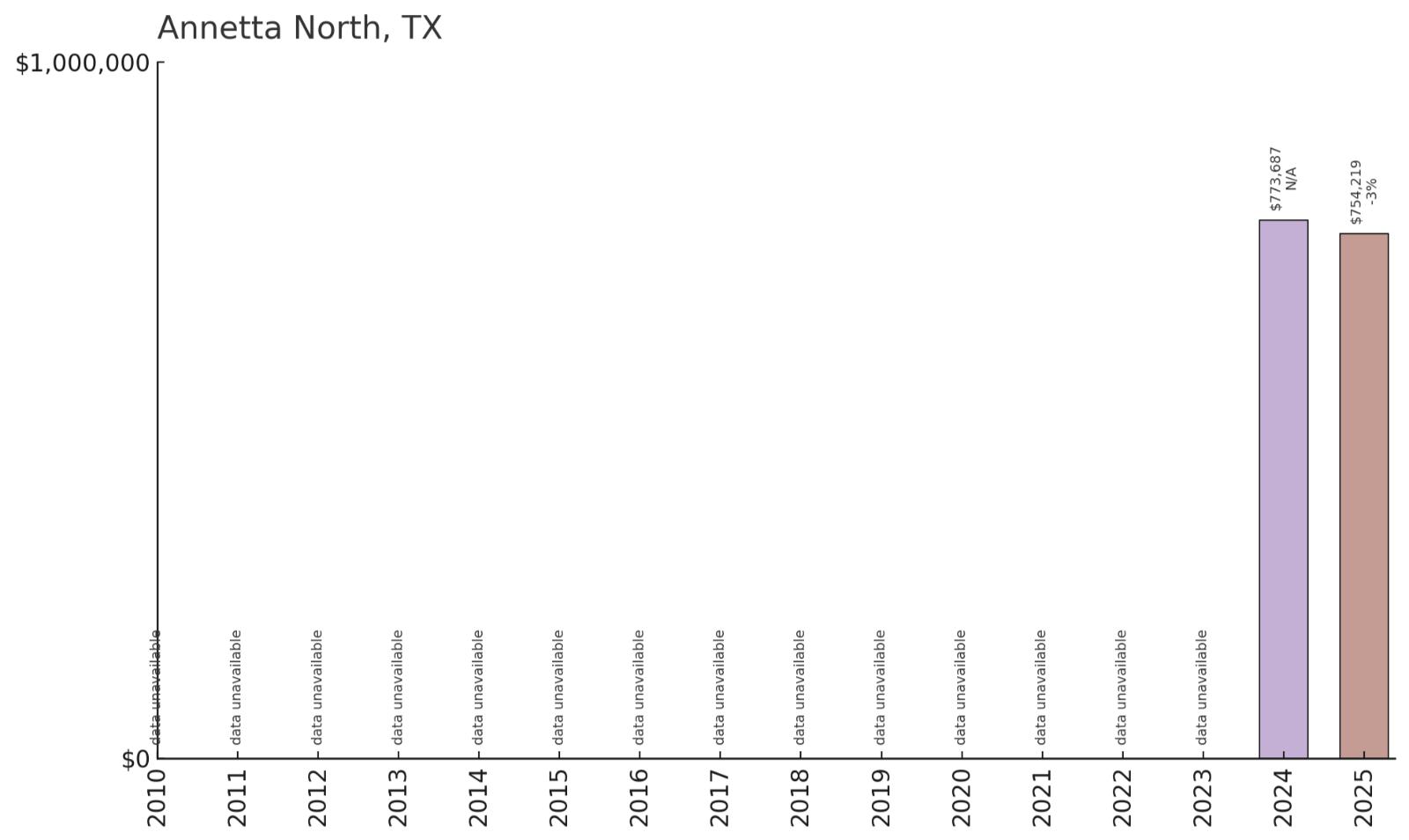
- 2010: N/A
- 2011:N/A
- 2012:N/A
- 2013: N/A
- 2014:N/A
- 2015:N/A
- 2016: N/A
- 2017:N/A
- 2018: N/A
- 2019: N/A
- 2020: N/A
- 2021: N/A
- 2022: N/A
- 2023:N/A
- 2024: $773,687
- 2025: $754,219
Annetta North shows a recent decline from 2024 to 2025, dropping by 3%. This small Parker County community has limited data history, with values only available from 2024 onward. Despite the recent dip, home prices remain well above $750,000, reflecting the area’s appeal to affluent buyers seeking rural luxury near Fort Worth.
Why Annetta North?
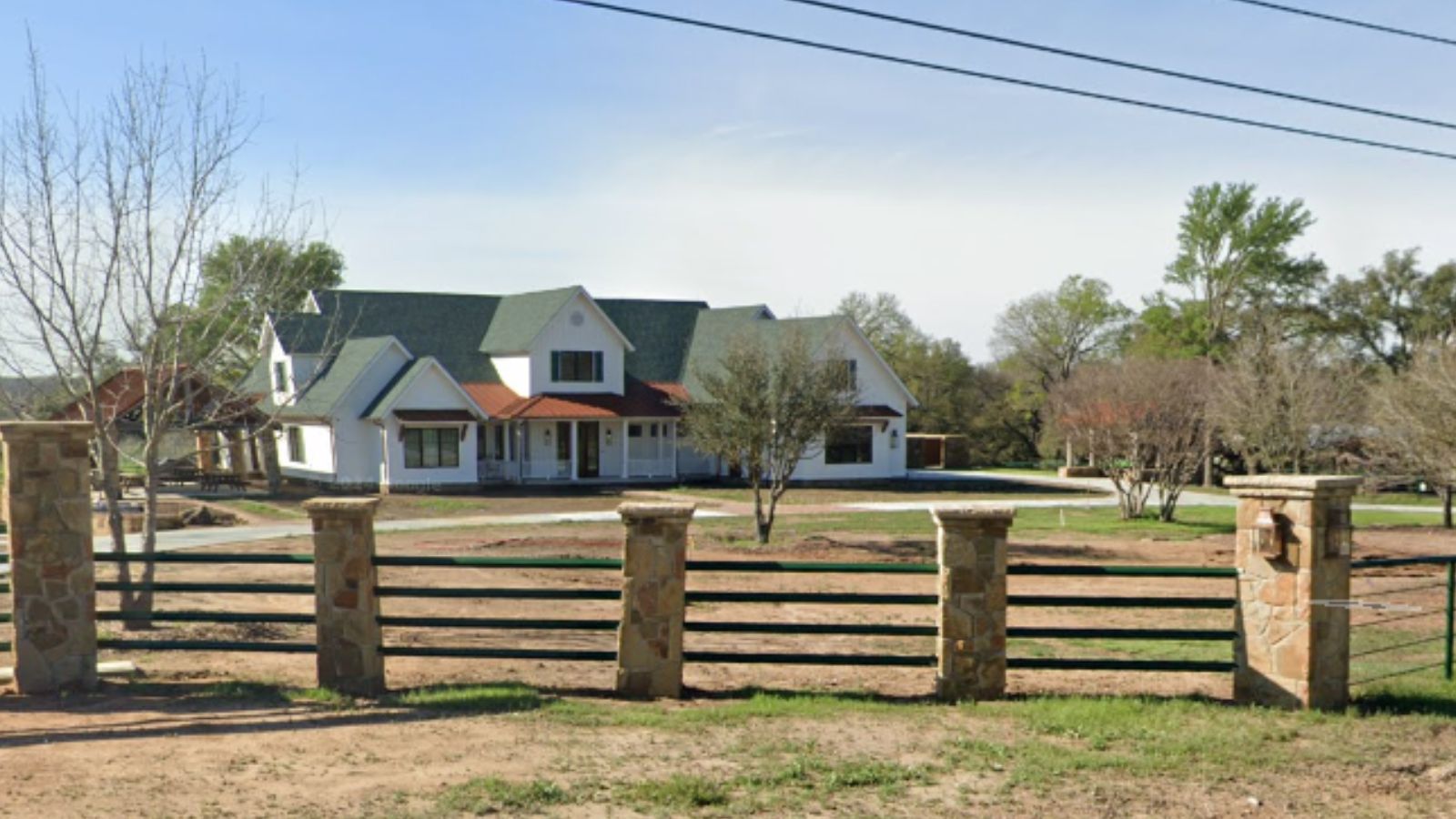
Why are people willing to pay so much to live here? What’s special about it?
Annetta North offers residents large lots and rural charm while staying within commuting distance of Fort Worth. The community attracts families seeking privacy and space without sacrificing access to urban amenities. Many properties feature horse facilities and custom homes on multi-acre sites.
The area provides a retreat-like atmosphere with excellent schools through Aledo ISD. Limited commercial development preserves the quiet, residential character that draws high-income buyers. Low crime rates and strong property maintenance standards help sustain premium home values.
How Annetta North Rose to Prominence
Annetta North developed as part of the greater Parker County growth boom during the late 20th century. Originally agricultural land, the area transformed as Dallas-Fort Worth expanded westward. The community incorporated to maintain local control over development and zoning.
Proximity to major employment centers in Fort Worth and access to quality schools attracted affluent families seeking larger properties. The area benefits from Texas’s no state income tax policy, making it attractive to high earners. Strategic location between Fort Worth and Weatherford provides both urban access and rural benefits.
3 Interesting Tidbits
1. Horse Country – Many properties include equestrian facilities, reflecting the area’s agricultural heritage and current residents’ lifestyle preferences.
2. Small Scale – As a newer community, Annetta North maintains intimate, neighborhood-focused development patterns.
3. School District Draw – Access to highly-rated Aledo ISD serves as a major attraction for families with school-age children.
29. The Hills – 108% Home Price Increase Since 2010
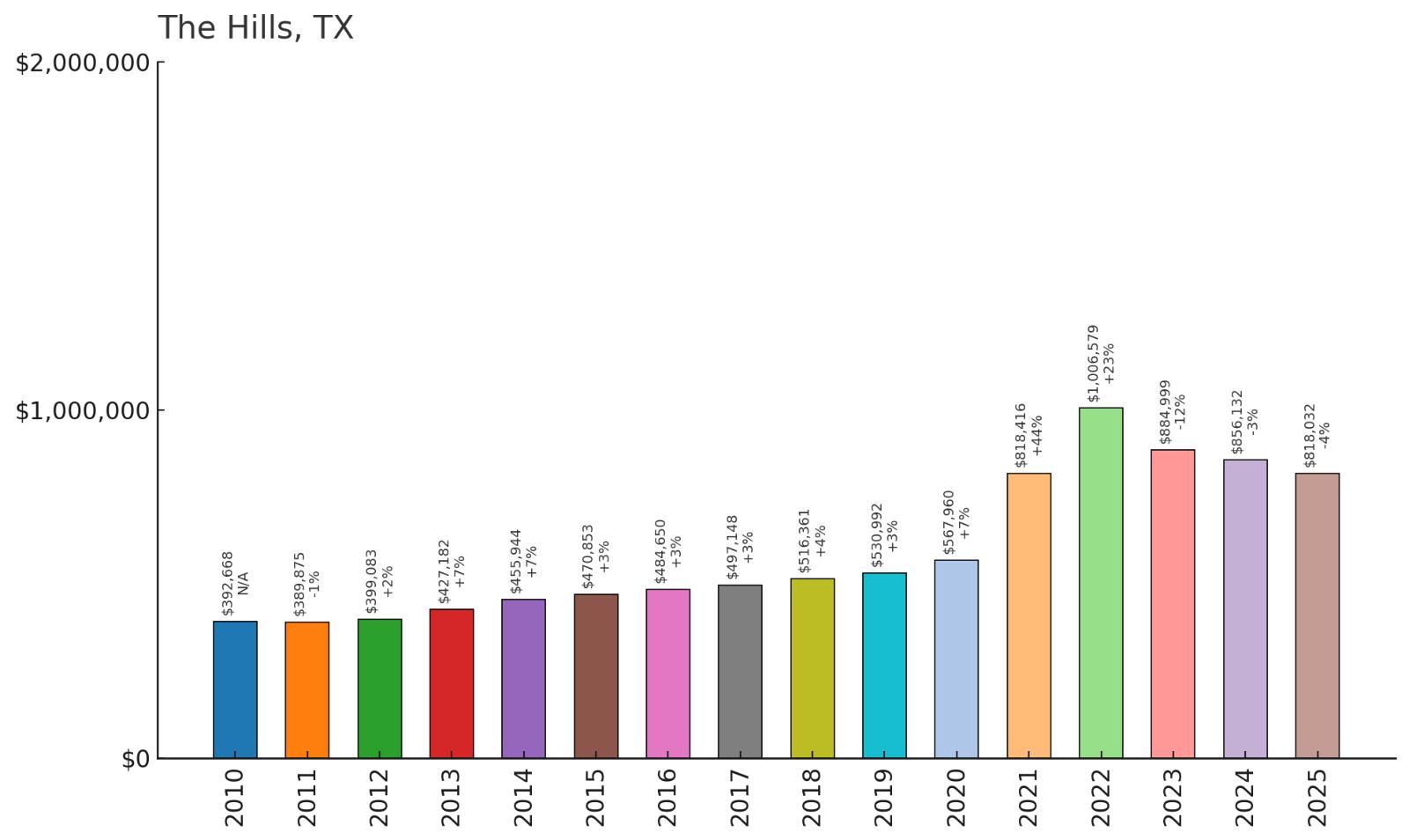
- 2010: $392,668
- 2011: $389,875
- 2012: $399,083
- 2013: $427,182
- 2014: $455,944
- 2015: $470,853
- 2016: $484,650
- 2017: $497,148
- 2018: $516,361
- 2019: $530,992
- 2020: $567,960
- 2021: $818,416
- 2022: $1,006,579
- 2023: $884,999
- 2024: $856,132
- 2025: $818,032
The Hills has more than doubled in value since 2010, with dramatic spikes in 2021 and 2022 pushing prices over $1 million. The community has seen some cooling since its 2022 peak, settling at just over $818,000 in 2025. This Travis County location benefits from Austin’s tech boom while offering suburban tranquility.
Why The Hills?

Why are people willing to pay so much to live here? What’s special about it?
The Hills provides residents with a master-planned community experience featuring golf courses, trails, and resort-style amenities. Families value the excellent schools and safe neighborhoods with easy access to Austin’s job market. The community offers both luxury homes and more modest options within the same development.
Located in the desirable Lake Travis area, residents enjoy water recreation and scenic Hill Country views. The community’s planned nature ensures consistent property maintenance and aesthetic standards. Strong homeowner association governance helps preserve property values and community character.
How The Hills Rose to Prominence
The Hills was developed in the 1980s as Austin began expanding westward into the Hill Country. Originally ranch land, the area was transformed into a master-planned community designed to take advantage of the natural terrain and lake access. The development attracted families seeking suburban amenities with Hill Country charm.
Austin’s growth as a tech hub, particularly after companies like Dell established headquarters nearby, drove demand for quality housing in the area. The community’s golf course and amenities package appealed to professionals seeking an active lifestyle. Strategic marketing and development phases allowed for steady growth and value appreciation.
3 Interesting Tidbits
1. Golf Legacy – The community’s Jack Nicklaus-designed golf course serves as a centerpiece and major amenity for residents.
2. Lake Access – Proximity to Lake Travis provides recreational opportunities and adds to the area’s desirability.
3. Phased Development – The community was built in multiple phases over several decades, allowing for diverse housing options and price points.
28. Prosper – 152% Home Price Increase Since 2010
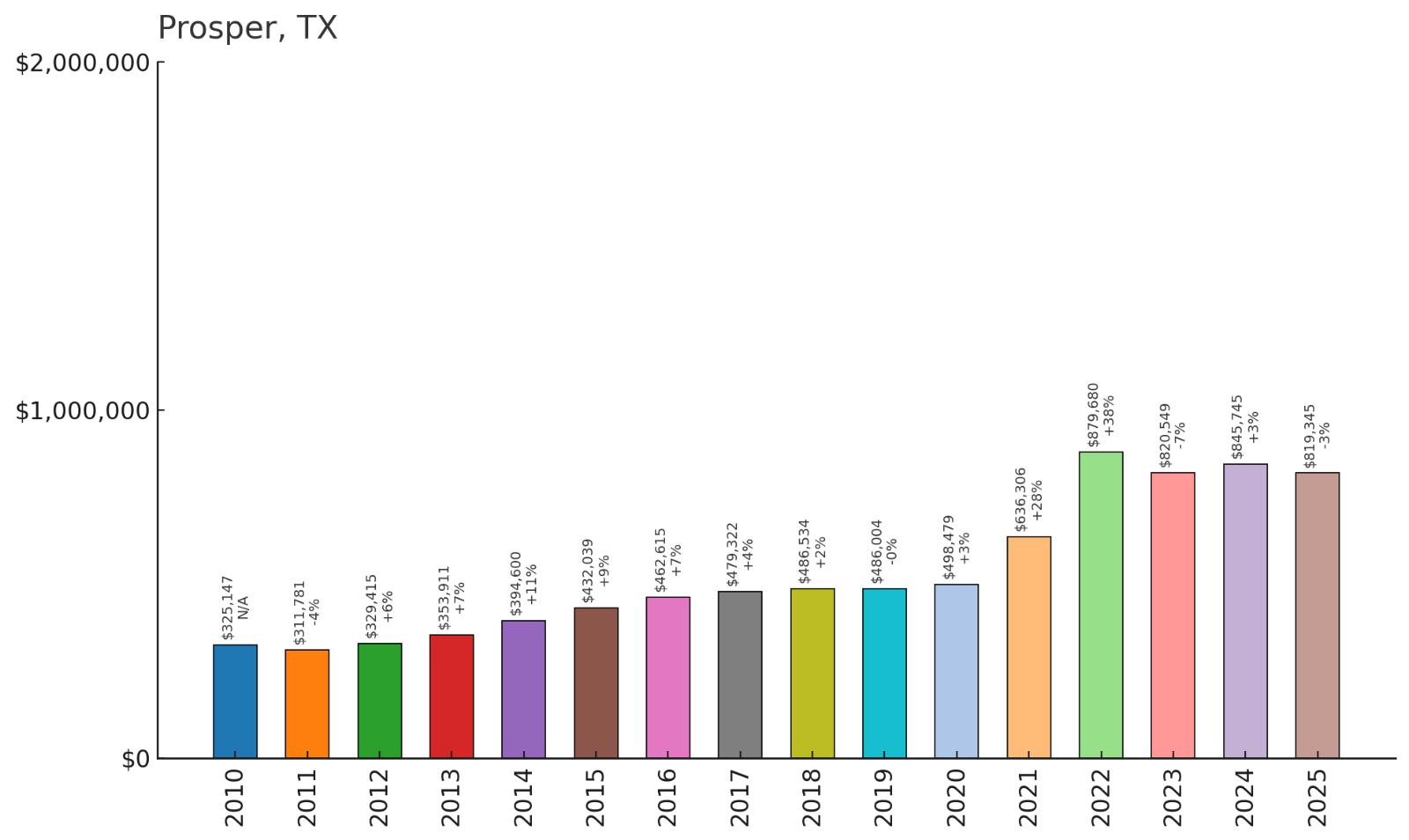
- 2010: $325,147
- 2011: $311,781
- 2012: $329,415
- 2013: $353,911
- 2014: $394,600
- 2015: $432,039
- 2016: $462,615
- 2017: $479,322
- 2018: $486,534
- 2019: $486,004
- 2020: $498,479
- 2021: $636,306
- 2022: $879,680
- 2023: $820,549
- 2024: $845,745
- 2025: $819,345
Prosper has achieved remarkable growth of 152% since 2010, with the most dramatic gains occurring between 2021 and 2022. The community experienced a significant jump of nearly $250,000 in 2022 alone before moderating in recent years. Current values around $819,000 reflect Prosper’s position as a premier North Texas suburb.
Why Prosper?
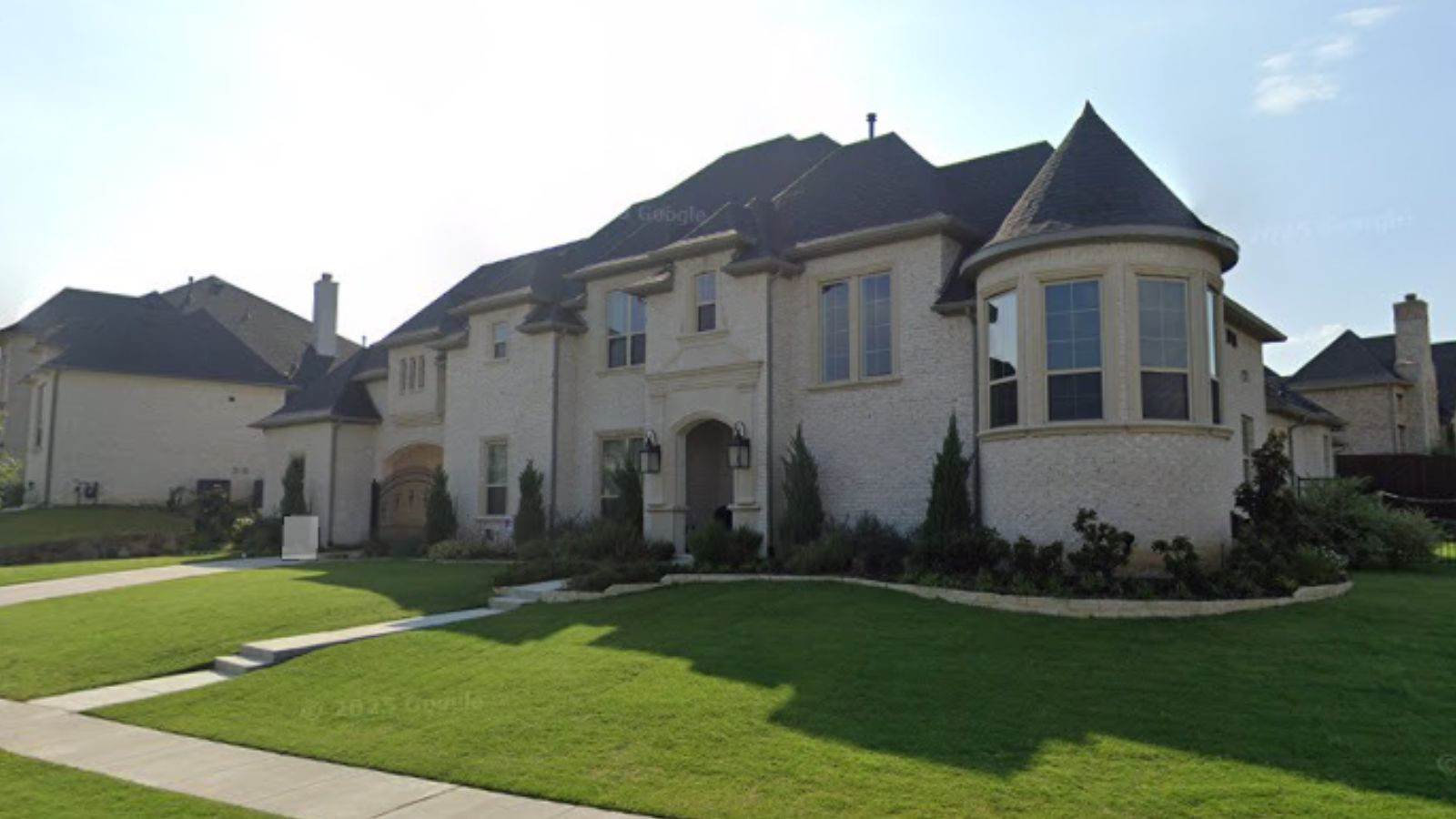
Why are people willing to pay so much to live here? What’s special about it?
Prosper attracts families with its combination of excellent schools, new construction homes, and small-town atmosphere within the Dallas metroplex. The community offers large lots and modern amenities while maintaining a family-friendly environment. Residents value the balance between suburban convenience and small-town charm.
The town’s strategic location provides easy access to major employment centers in Dallas and Plano. High-quality municipal services and low crime rates add to the community’s appeal. Strong economic development policies have attracted businesses while preserving residential character.
How Prosper Rose to Prominence
Prosper began as a small farming community in the late 1800s, centered around cotton and wheat production. The town remained largely agricultural until the Dallas-Fort Worth metroplex began expanding northward in the 1990s. Prosper’s location along major transportation corridors made it attractive for residential development.
The community’s incorporation in 1914 and subsequent growth management allowed for controlled development that preserved small-town character while accommodating new residents. The arrival of corporate relocations and technology companies in nearby Plano and Frisco increased demand for quality housing in Prosper.
3 Interesting Tidbits
1. School District Excellence – Prosper ISD consistently ranks among the top school districts in Texas, drawing families from across the region.
2. Sports Complex – The community is home to a state-of-the-art sports complex that serves regional competitions and events.
3. Small Town Feel – Despite growth, Prosper maintains its small-town character with community events and local traditions.
27. Kendalia – 124% Home Price Increase Since 2012
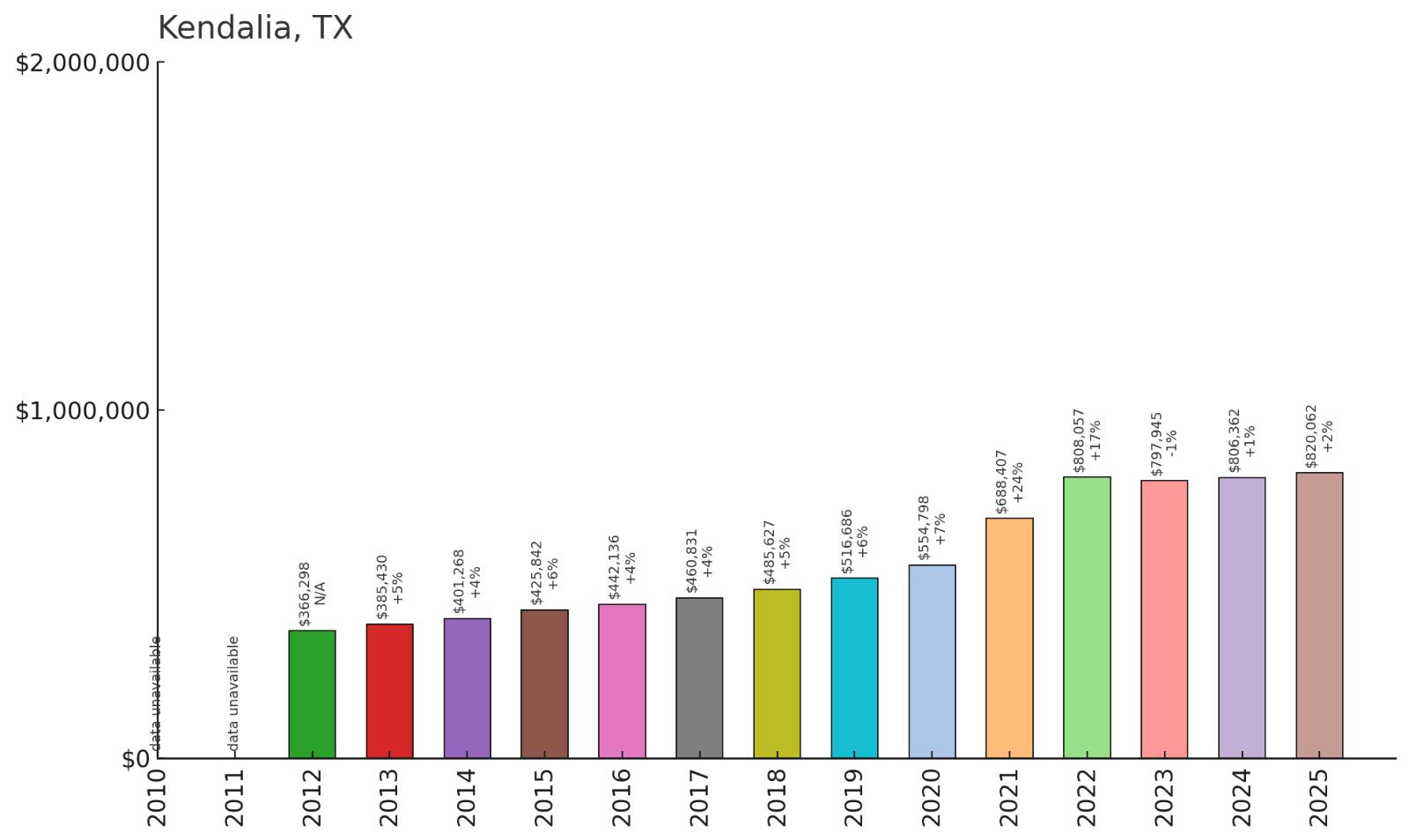
- 2010: N/A
- 2011:N/A
- 2012: $366,298
- 2013: $385,430
- 2014: $401,268
- 2015: $425,842
- 2016: $442,136
- 2017: $460,831
- 2018: $485,627
- 2019: $516,686
- 2020: $554,798
- 2021: $688,407
- 2022: $808,057
- 2023: $797,945
- 2024: $806,362
- 2025: $820,062
Kendalia shows steady appreciation of 124% since data became available in 2012. The community experienced consistent growth through the 2010s, with acceleration during the pandemic housing boom. Values have stabilized around $820,000, reflecting strong demand for this Kendall County location.
Why Kendalia?
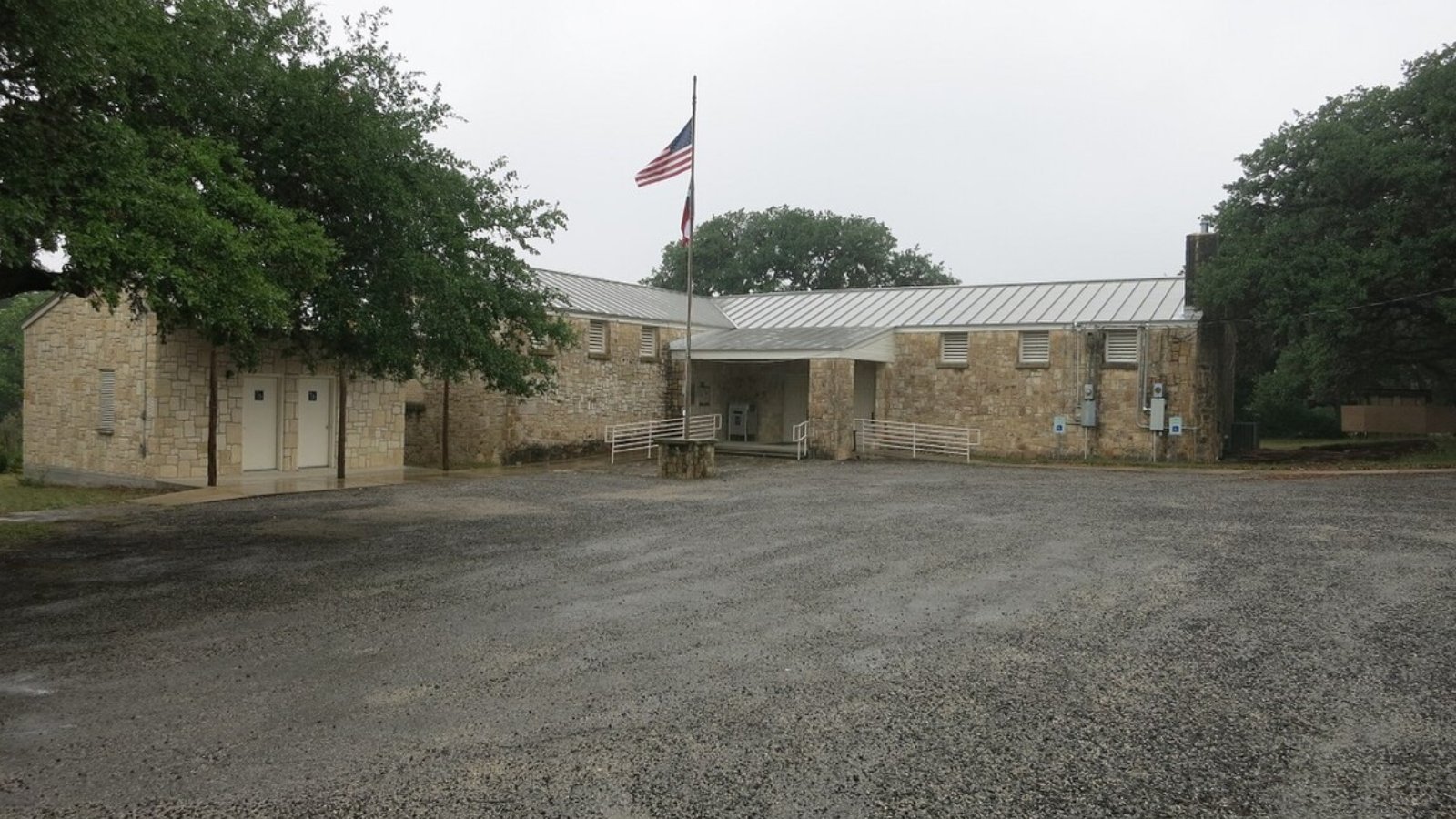
Why are people willing to pay so much to live here? What’s special about it?
Kendalia offers residents a rural lifestyle with proximity to both San Antonio and Austin. The community features large lots, custom homes, and Hill Country scenery that appeals to buyers seeking privacy and natural beauty. Many properties include agricultural exemptions and recreational opportunities.
The area attracts retirees and professionals who can work remotely while enjoying a quieter pace of life. Low population density and minimal commercial development preserve the rural character. Access to outdoor recreation and scenic drives adds to the community’s lifestyle appeal.
How Kendalia Rose to Prominence
Kendalia was established in the late 1800s as a German settlement in the Texas Hill Country. The community remained primarily agricultural for over a century, with ranching and farming as the main economic activities. The town’s remote location helped preserve its rural character even as nearby areas developed.
Growth accelerated in the 1990s and 2000s as Austin and San Antonio expanded outward. The community’s location between these major cities made it attractive for those seeking a rural lifestyle with urban access. Development remained low-density, focusing on custom homes and ranch properties.
3 Interesting Tidbits
1. German Heritage – The community maintains its German roots through local traditions and historical preservation efforts.
2. Hill Country Location – Scenic beauty and outdoor recreation opportunities draw residents seeking a connection to nature.
3. Agricultural Legacy – Many properties maintain agricultural uses, preserving the area’s farming and ranching heritage.
26. Sunrise Beach – 139% Home Price Increase Since 2010
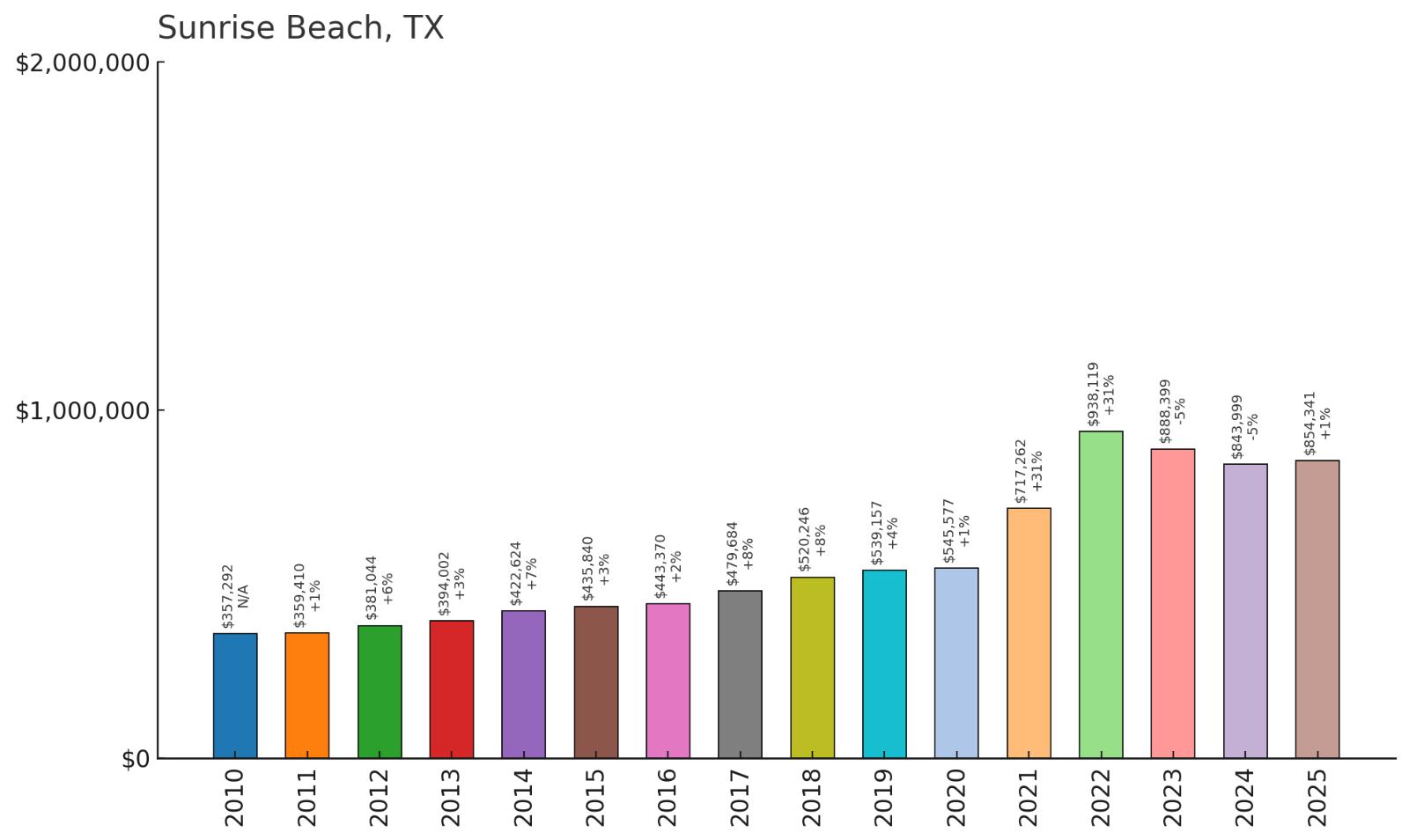
- 2010: $357,292
- 2011: $359,410
- 2012: $381,044
- 2013: $394,002
- 2014: $422,624
- 2015: $435,840
- 2016: $443,370
- 2017: $479,684
- 2018: $520,246
- 2019: $539,157
- 2020: $545,577
- 2021: $717,262
- 2022: $938,119
- 2023: $888,399
- 2024: $843,999
- 2025: $854,341
Sunrise Beach has delivered impressive gains of 139% since 2010, with the most dramatic growth occurring in 2021 and 2022. The lakefront community peaked near $938,000 in 2022 before settling to current levels around $854,000. This Lake LBJ location capitalizes on waterfront living and Hill Country appeal.
Why Sunrise Beach?
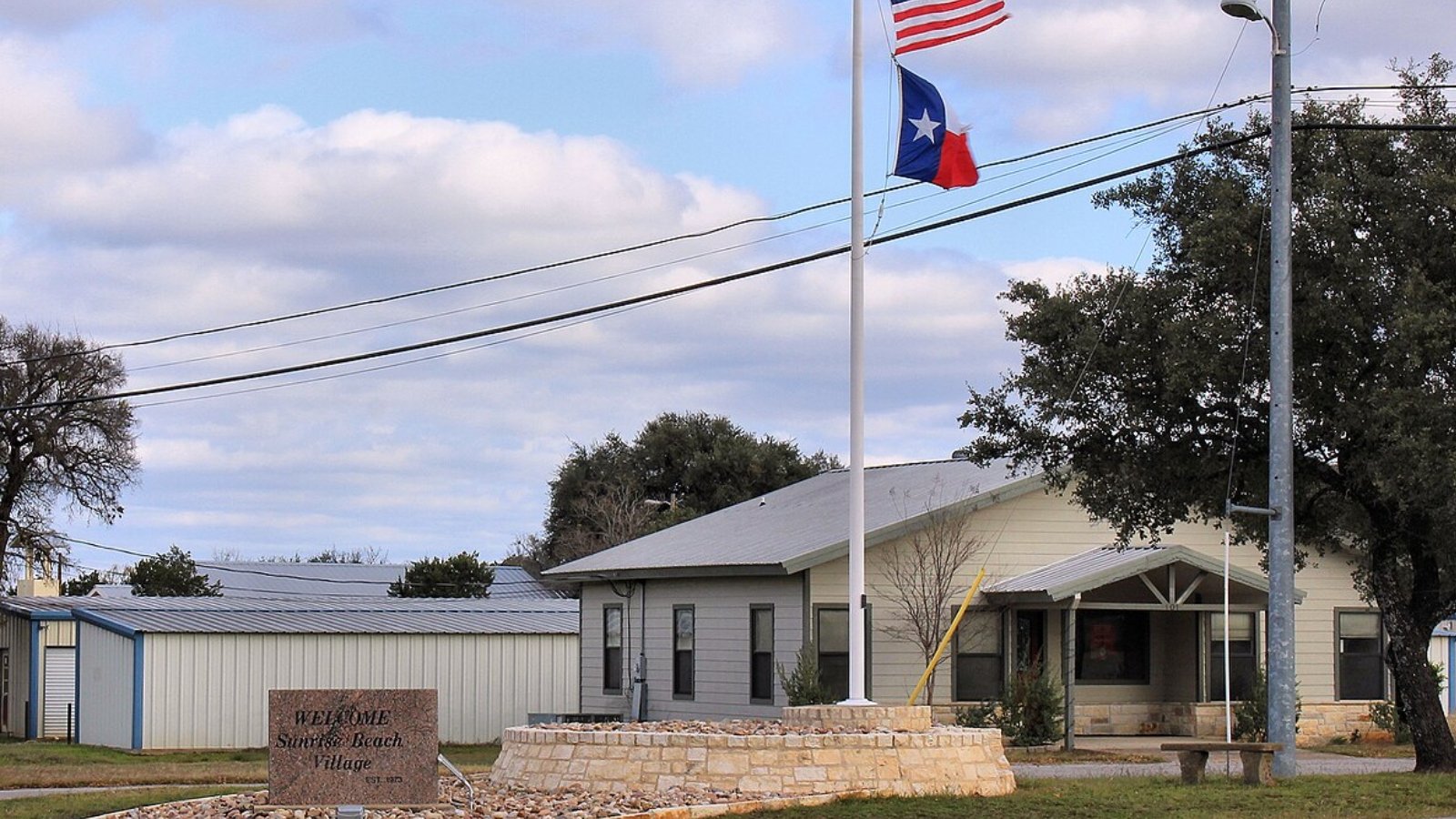
Why are people willing to pay so much to live here? What’s special about it?
Sunrise Beach provides direct access to Lake LBJ with many properties featuring private docks and waterfront views. The community attracts buyers seeking vacation homes, retirement properties, and primary residences with resort-style amenities. Water recreation and scenic beauty drive much of the area’s appeal.
The location offers a retreat atmosphere while maintaining reasonable access to Austin and San Antonio. Many homes feature custom designs that take advantage of lakefront lots and Hill Country settings. The community’s focus on water-oriented living creates a unique lifestyle proposition.
How Sunrise Beach Rose to Prominence
Sunrise Beach developed in the mid-20th century as Lake LBJ was created as part of the Lower Colorado River Authority’s Highland Lakes system. The community was designed specifically to take advantage of the new lake’s recreational opportunities. Early development focused on vacation homes and weekend retreats.
As Austin’s economy grew and remote work became more common, many vacation properties transitioned to primary residences. The area’s appeal to retirees and affluent professionals seeking lakefront living drove demand and property values. Limited developable waterfront land helped sustain price appreciation.
3 Interesting Tidbits
1. Lake LBJ Access – The community offers some of the best recreational boating and water sports access in the Texas Hill Country.
2. Resort Lifestyle – Many residents enjoy a permanent vacation atmosphere with waterfront dining and recreational amenities.
3. Highland Lakes – Part of a chain of lakes that provides reliable water levels and recreational opportunities year-round.
25. Double Oak – 146% Home Price Increase Since 2010
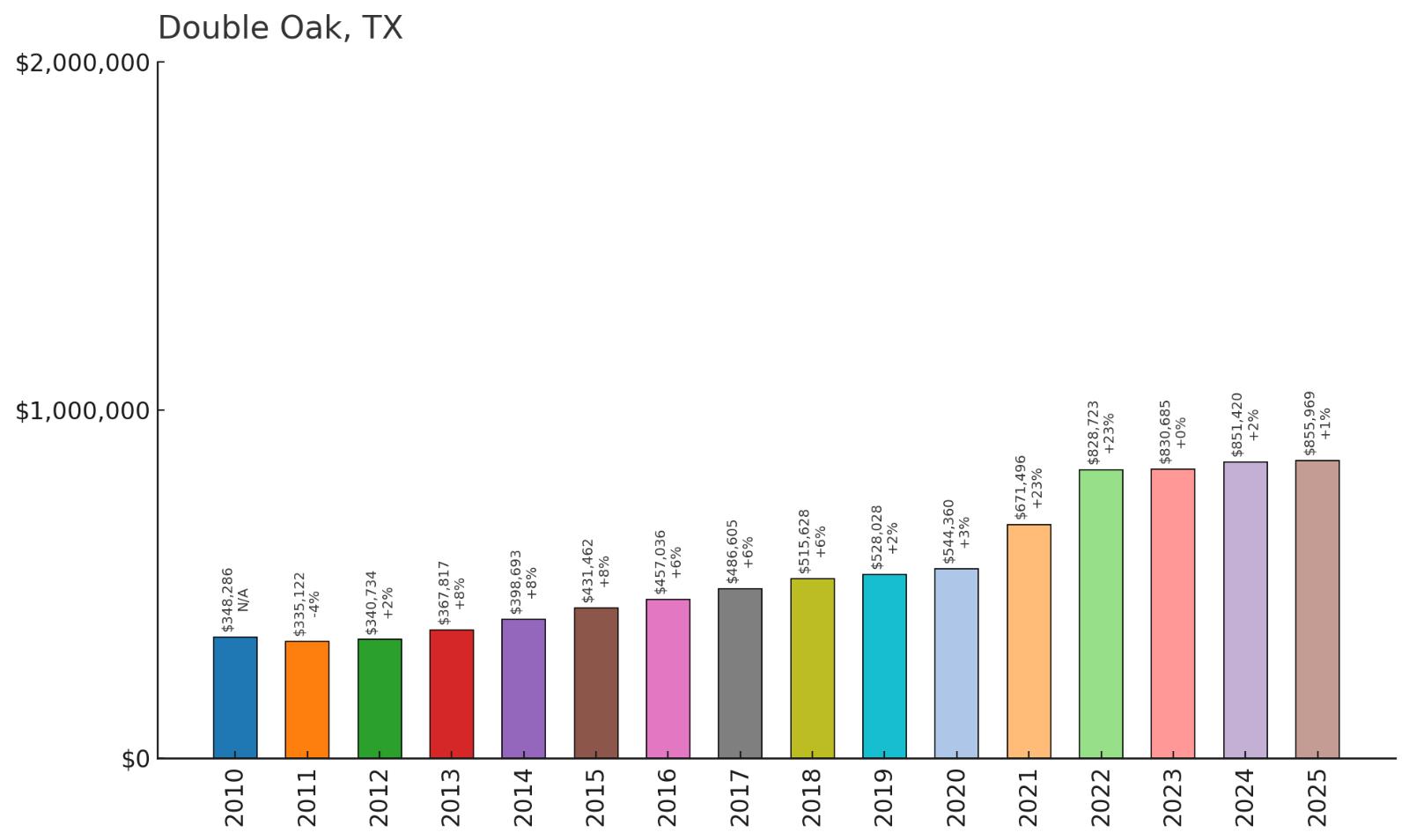
- 2010: $348,286
- 2011: $335,122
- 2012: $340,734
- 2013: $367,817
- 2014: $398,693
- 2015: $431,462
- 2016: $457,036
- 2017: $486,605
- 2018: $515,628
- 2019: $528,028
- 2020: $544,360
- 2021: $671,496
- 2022: $828,723
- 2023: $830,685
- 2024: $851,420
- 2025: $855,969
Double Oak has achieved steady growth of 146% since 2010, with consistent appreciation throughout the period. The community saw significant gains during 2021-2022, adding over $280,000 in value across those two years. Current values around $856,000 reflect the area’s appeal as a Dallas-area suburb with rural character.
Why Double Oak?
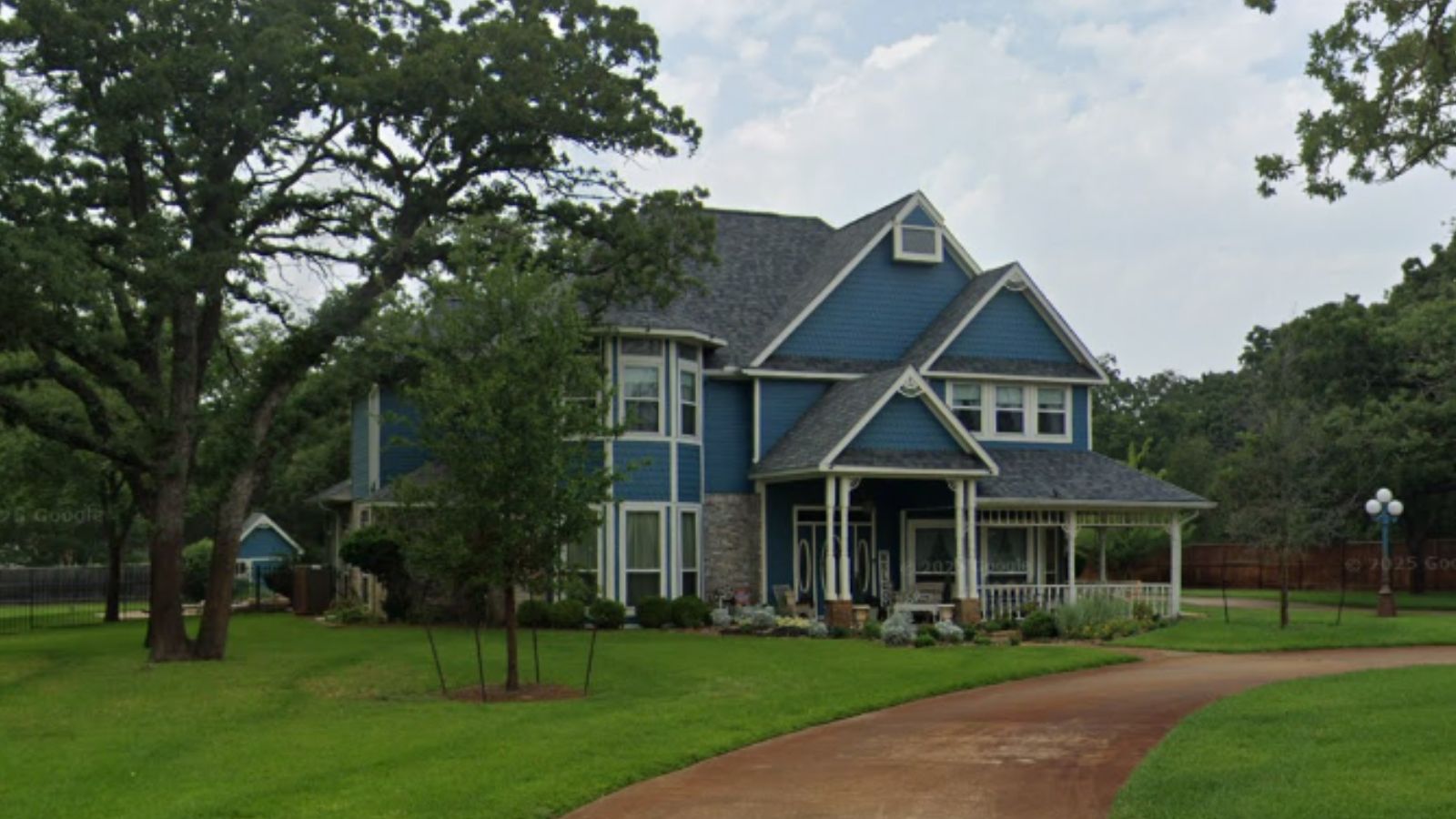
Why are people willing to pay so much to live here? What’s special about it?
Double Oak offers residents large lots and a rural atmosphere while maintaining convenient access to Dallas-Fort Worth employment centers. The community features tree-lined streets, custom homes, and minimal commercial development. Families value the excellent schools and safe neighborhoods with a small-town feel.
The area attracts professionals seeking space and privacy without sacrificing urban accessibility. Many properties feature horse facilities and agricultural exemptions. Strong local governance and community involvement help maintain high standards and property values.
How Double Oak Rose to Prominence
Double Oak was incorporated in 1977 as residents sought to maintain local control over development in this formerly rural area of Denton County. The community’s founders wanted to preserve large lots and rural character while accommodating growth pressure from the expanding Dallas metroplex.
The town’s strategic location between Dallas and Fort Worth, combined with excellent schools and low crime rates, attracted affluent families. Careful zoning and development standards helped maintain the community’s character while property values appreciated. The area benefited from broader North Texas economic growth.
3 Interesting Tidbits
1. Rural Heritage – Many properties maintain agricultural uses, including horse facilities and small farms within the suburban setting.
2. Local Control – The community’s incorporation was specifically designed to maintain local control over development and zoning.
3. Commuter Friendly – Strategic location provides access to major employment centers while preserving a rural lifestyle.
24. Round Mountain – 21% Home Price Increase Since 2021
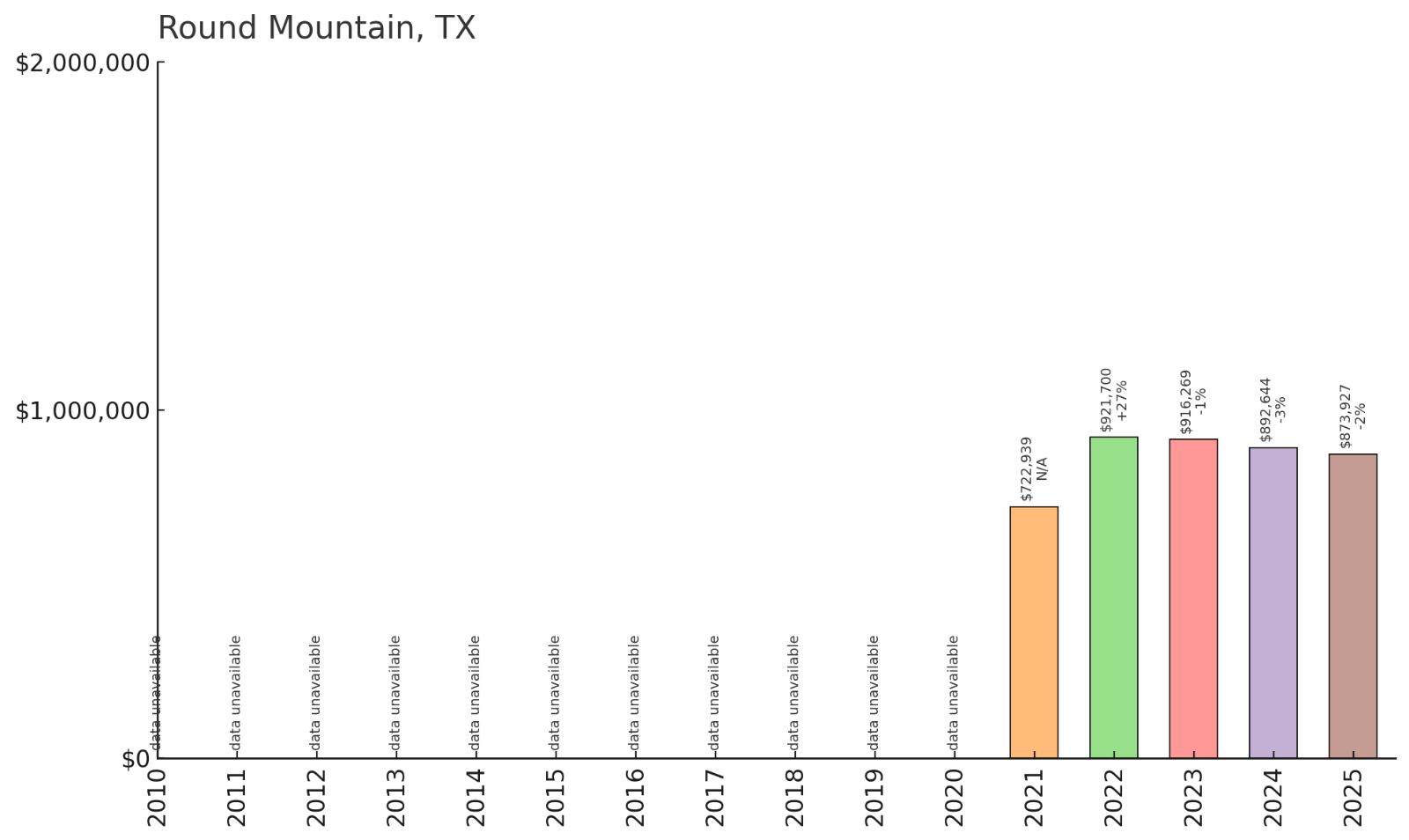
- 2010: N/A
- 2011: N/A
- 2012: N/A
- 2013: N/A
- 2014: N/A
- 2015: N/A
- 2016: N/A
- 2017: N/A
- 2018: N/A
- 2019: N/A
- 2020: N/A
- 2021: $722,939
- 2022: $921,700
- 2023: $916,269
- 2024: $892,644
- 2025: $873,927
Round Mountain shows modest growth of 21% since data became available in 2021. The community peaked at over $921,000 in 2022 before gradually declining to current levels near $874,000. This Blanco County location offers Hill Country living with access to Austin-area amenities.
Why Round Mountain?
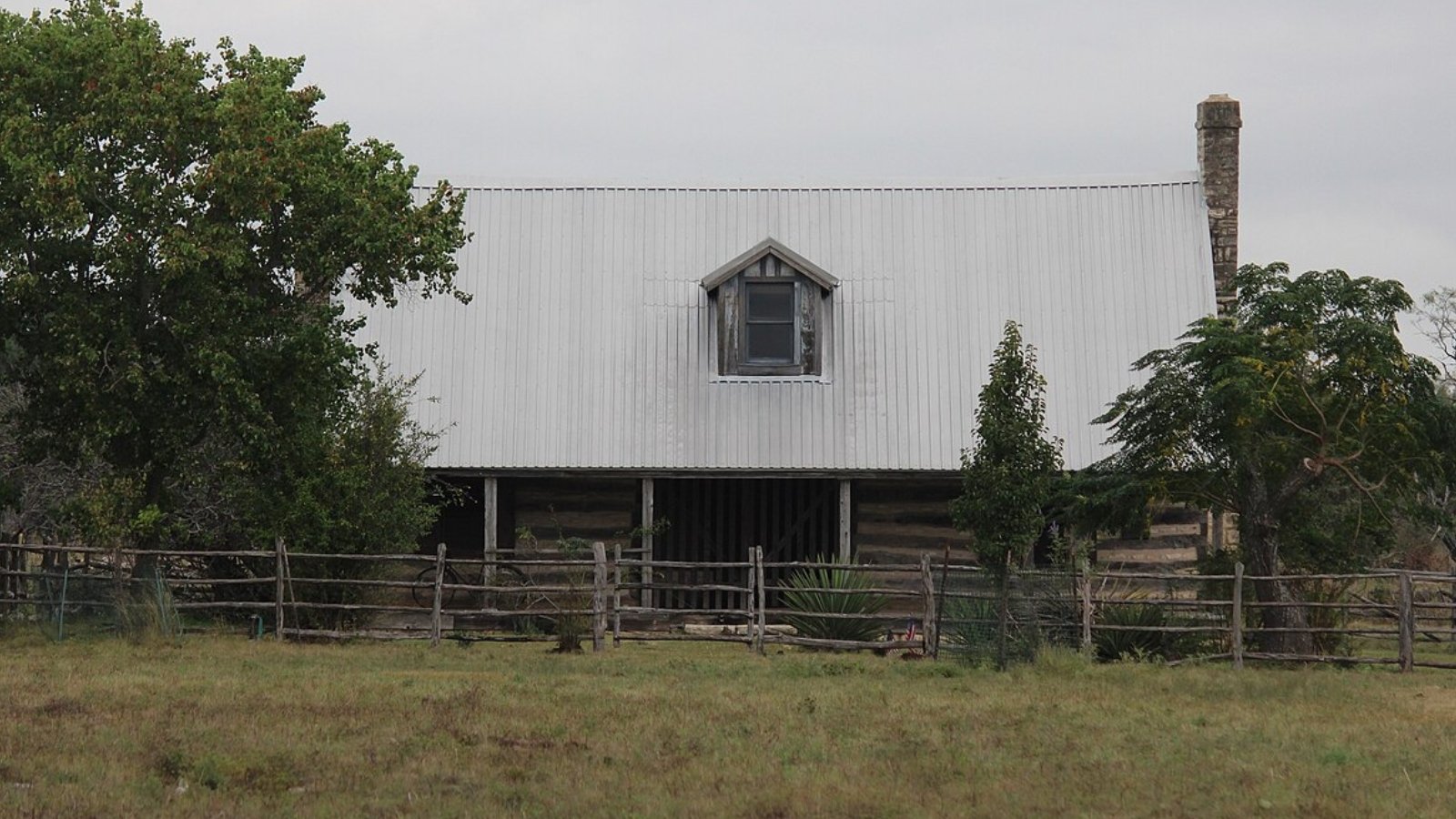
Why are people willing to pay so much to live here? What’s special about it?
Round Mountain provides residents with Hill Country scenery and rural tranquility while remaining accessible to Austin’s job market. The community attracts buyers seeking custom homes on large lots with natural settings. Many properties feature scenic views and outdoor recreation opportunities.
The area appeals to those who value privacy and space without complete isolation from urban amenities. Low population density and minimal commercial development preserve the rural character. Access to outdoor activities and scenic beauty drives much of the community’s appeal.
How Round Mountain Rose to Prominence
Round Mountain developed slowly as a rural community in the Texas Hill Country, maintaining its agricultural character for over a century. The area began attracting attention in the 1990s as Austin’s growth pushed development westward into previously rural areas.
The community’s appeal grew as technology professionals and retirees sought rural properties with reasonable access to urban amenities. Custom home construction on large lots became the norm, attracting affluent buyers. The area’s natural beauty and recreational opportunities helped sustain demand and property values.
3 Interesting Tidbits
1. Hill Country Beauty – The community offers some of the most scenic rural properties within reasonable commuting distance of Austin.
2. Custom Homes – Most properties feature custom-built homes designed to take advantage of natural settings and views.
3. Outdoor Recreation – Proximity to state parks and recreational areas adds to the community’s lifestyle appeal.
23. Bee Cave – 108% Home Price Increase Since 2010
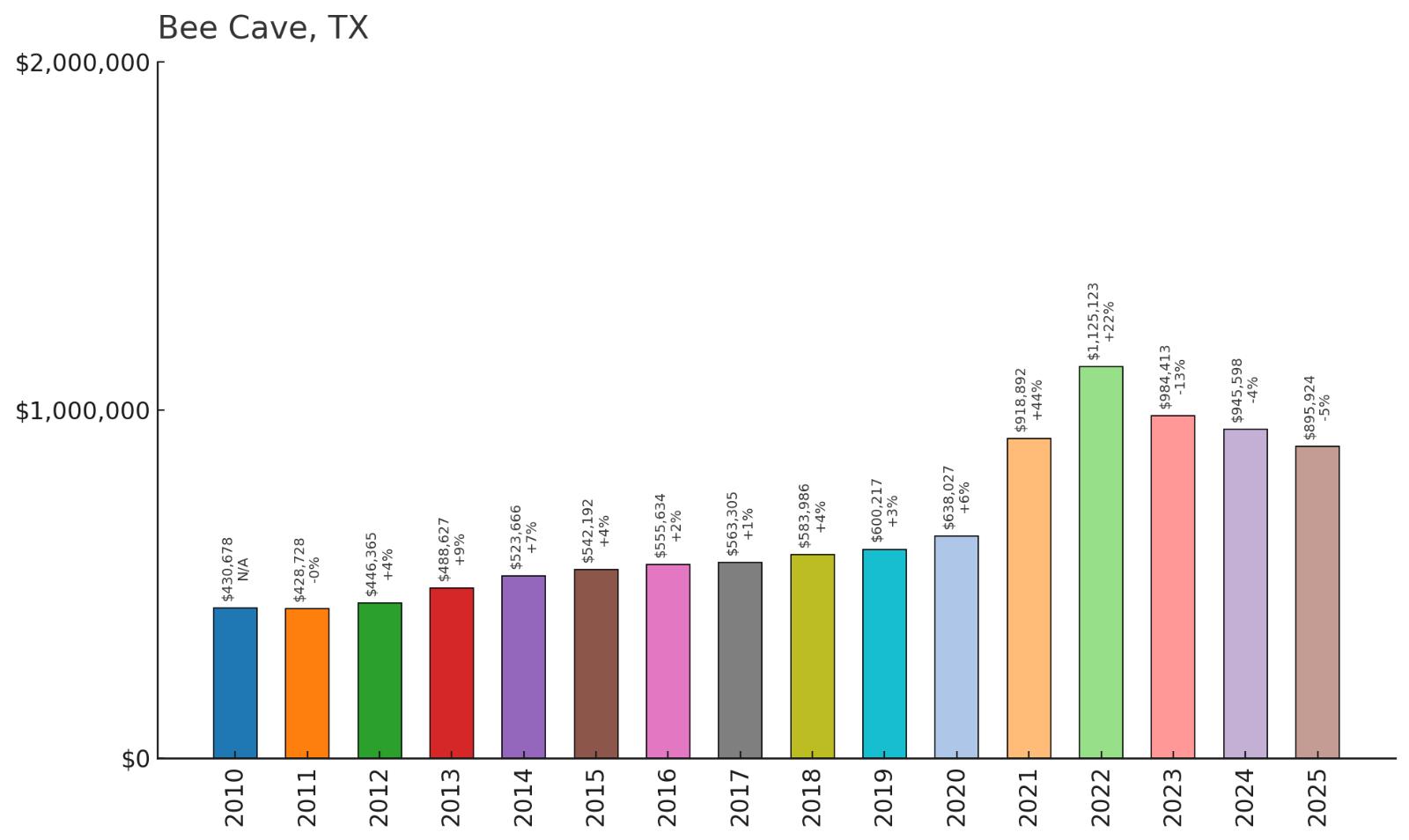
- 2010: $430,678
- 2011: $428,728
- 2012: $446,365
- 2013: $488,627
- 2014: $523,666
- 2015: $542,192
- 2016: $555,634
- 2017: $563,305
- 2018: $583,986
- 2019: $600,217
- 2020: $638,027
- 2021: $918,892
- 2022: $1,125,123
- 2023: $984,413
- 2024: $945,598
- 2025: $895,924
Bee Cave has doubled in value since 2010, with explosive growth in 2021 and 2022 pushing prices above $1.1 million. The community has experienced some cooling since its 2022 peak, settling near $896,000 in 2025. This Travis County location benefits from Austin’s tech boom and Lake Travis proximity.
Why Bee Cave?
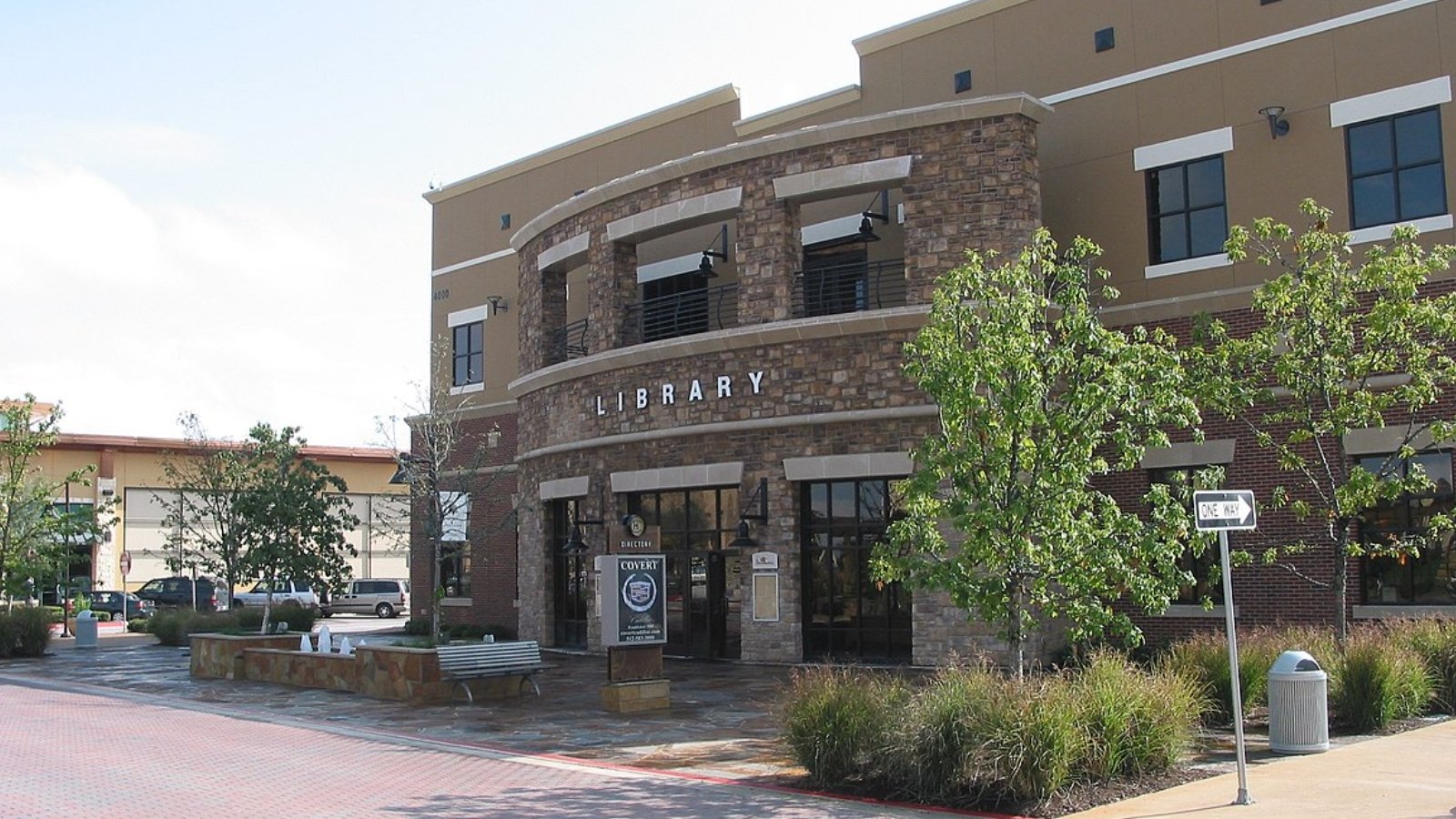
Why are people willing to pay so much to live here? What’s special about it?
Bee Cave offers residents a combination of suburban amenities and Hill Country charm with excellent Lake Travis access. The community features upscale shopping, dining, and entertainment options alongside high-quality schools. Families value the balance of convenience and natural beauty.
The area attracts professionals working in Austin’s tech industry who want luxury amenities without urban density. Many neighborhoods offer resort-style amenities including golf courses and waterfront access. Strong economic growth and limited developable land help sustain property values.
How Bee Cave Rose to Prominence
Bee Cave was incorporated in 1987 as this area of Travis County experienced rapid growth from Austin’s expansion westward. The community was developed around the concept of maintaining Hill Country character while providing upscale suburban amenities. Early development focused on golf course communities and lakefront properties.
Austin’s emergence as a technology hub drove demand for high-quality housing in desirable locations like Bee Cave. The area’s proximity to Lake Travis and the Hill Country, combined with excellent schools and shopping, made it attractive to affluent families. Strategic development and annexation policies helped shape the community’s character.
3 Interesting Tidbits
1. Shopping Destination – The Hill Country Galleria serves as a major retail and entertainment hub for the Lake Travis area.
2. Lake Travis Access – Many residents enjoy easy access to one of Texas’s premier recreational lakes.
3. Tech Hub Proximity – Strategic location provides access to Austin’s major technology employers and business districts.
22. Colleyville – 121% Home Price Increase Since 2010
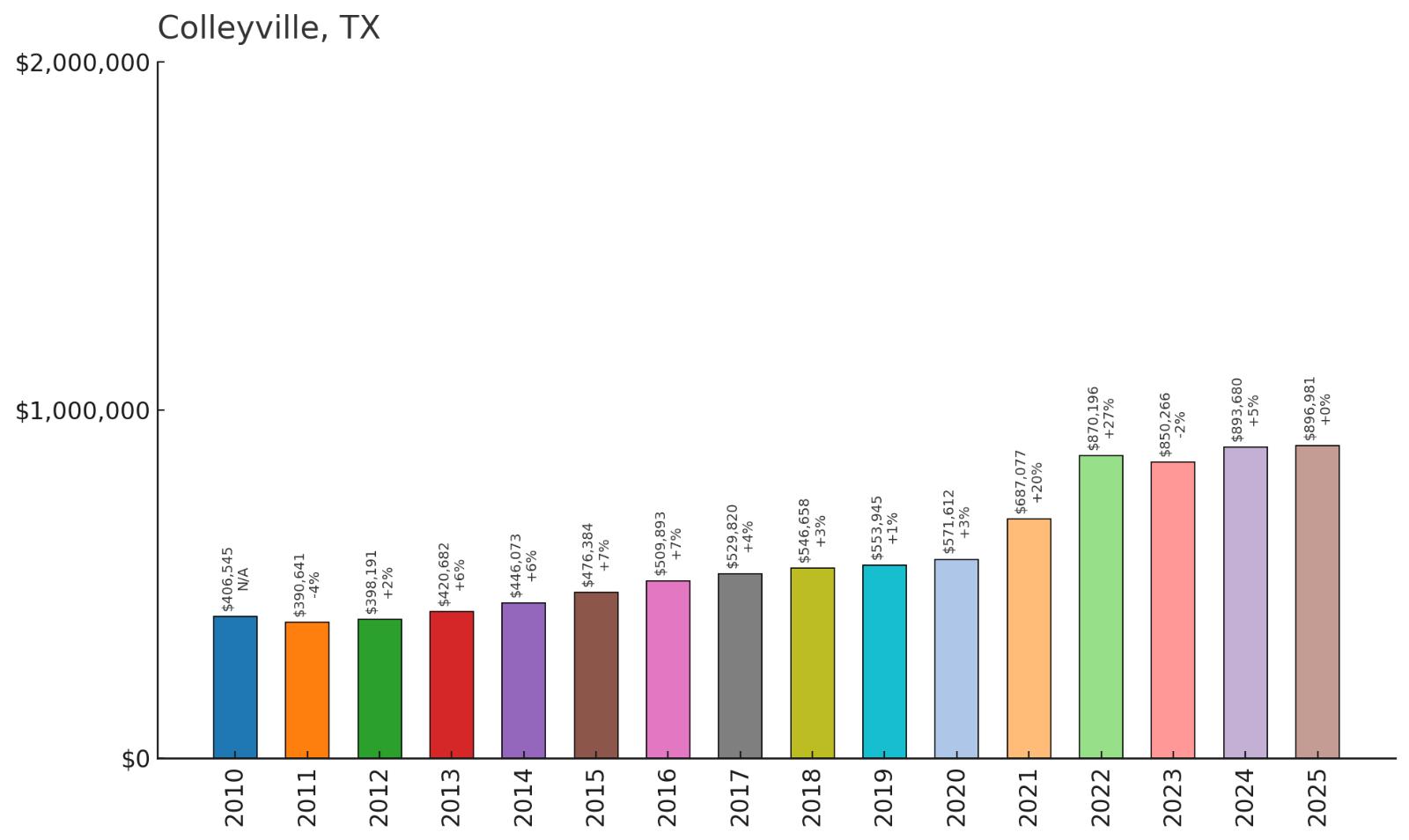
- 2010: $406,545
- 2011: $390,641
- 2012: $398,191
- 2013: $420,682
- 2014: $446,073
- 2015: $476,384
- 2016: $509,893
- 2017: $529,820
- 2018: $546,658
- 2019: $553,945
- 2020: $571,612
- 2021: $687,077
- 2022: $870,196
- 2023: $850,266
- 2024: $893,680
- 2025: $896,981
Colleyville has achieved solid growth of 121% since 2010, with steady appreciation throughout the period. The community experienced significant gains during 2021-2022, jumping from around $572,000 to over $870,000. Current values near $897,000 reflect Colleyville’s position as a premier Dallas-Fort Worth suburb.
Why Colleyville?

Why are people willing to pay so much to live here? What’s special about it?
Colleyville attracts families with its excellent schools, safe neighborhoods, and upscale suburban amenities. The community offers tree-lined streets, well-maintained properties, and a strong sense of community. Residents value the balance of suburban convenience and family-friendly atmosphere.
The area provides easy access to DFW Airport and major employment centers while maintaining a distinct identity. High-quality municipal services and active community involvement help preserve property values. The community’s reputation for excellence in education and safety drives continued demand.
How Colleyville Rose to Prominence
Colleyville was incorporated in 1956 as a small farming community that gradually transformed into an upscale suburb as the Dallas-Fort Worth metroplex expanded. The community’s development accelerated in the 1970s and 1980s as major corporations relocated to the area and DFW Airport opened nearby.
The town’s strategic location between Dallas and Fort Worth, combined with excellent schools and careful development planning, attracted affluent families. The community’s commitment to maintaining high standards through zoning and architectural controls helped establish its reputation for quality.
3 Interesting Tidbits
1. Aviation Access – Proximity to DFW Airport makes the community attractive to business executives and frequent travelers.
2. School Excellence – Grapevine-Colleyville ISD consistently ranks among the top school districts in Texas.
3. Community Events – The annual Founders Day celebration and other community events foster strong neighborhood connections.
21. Terrell Hills – 87% Home Price Increase Since 2010
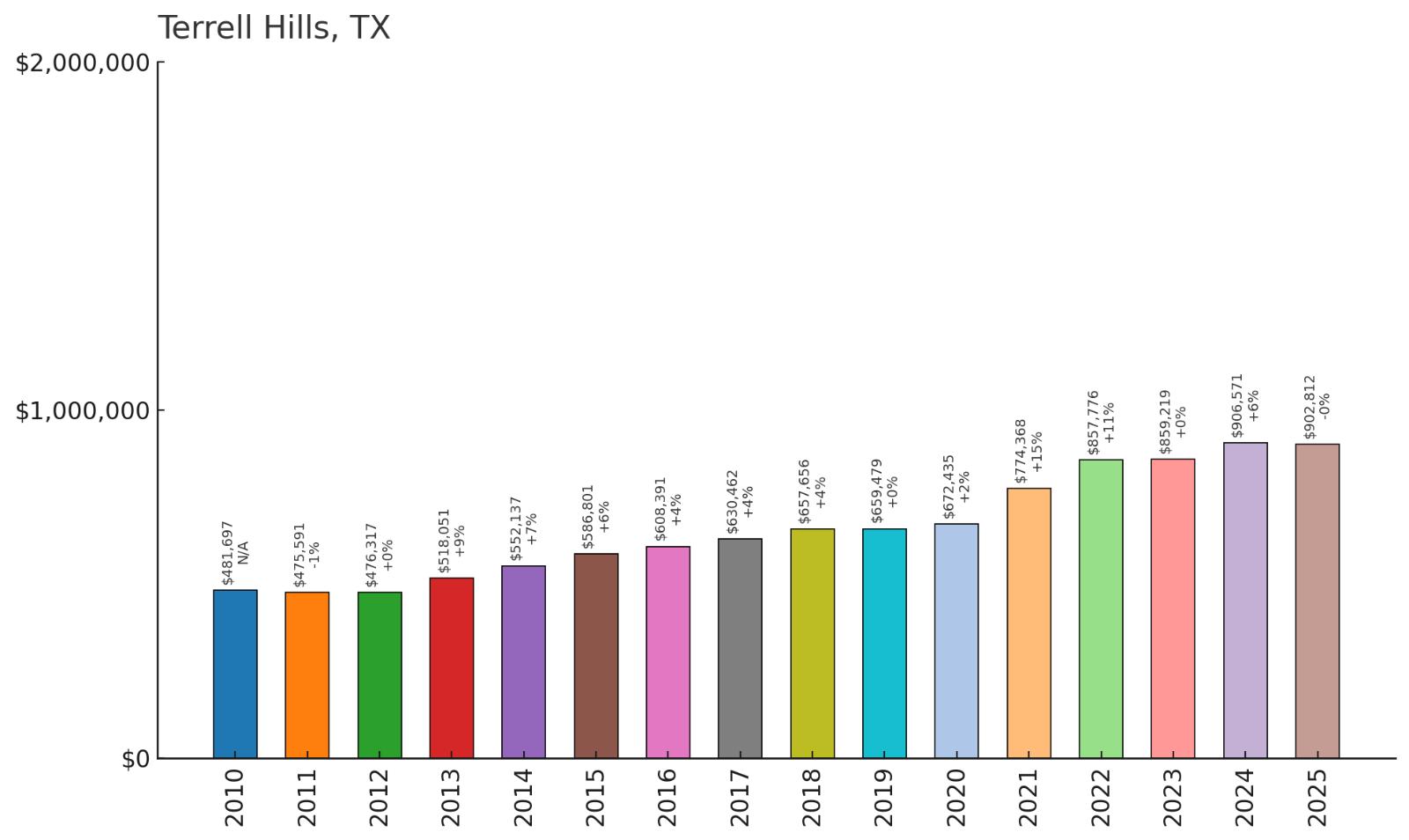
- 2010: $481,697
- 2011: $475,591
- 2012: $476,317
- 2013: $518,051
- 2014: $552,137
- 2015: $586,801
- 2016: $608,391
- 2017: $630,462
- 2018: $657,656
- 2019: $659,479
- 2020: $672,435
- 2021: $774,368
- 2022: $857,776
- 2023: $859,219
- 2024: $906,571
- 2025: $902,812
Terrell Hills shows steady appreciation of 87% since 2010, with consistent growth throughout the period. The community experienced gradual gains through most of the decade before accelerating in recent years. Current values around $903,000 reflect this established San Antonio enclave’s enduring appeal.
Why Terrell Hills?
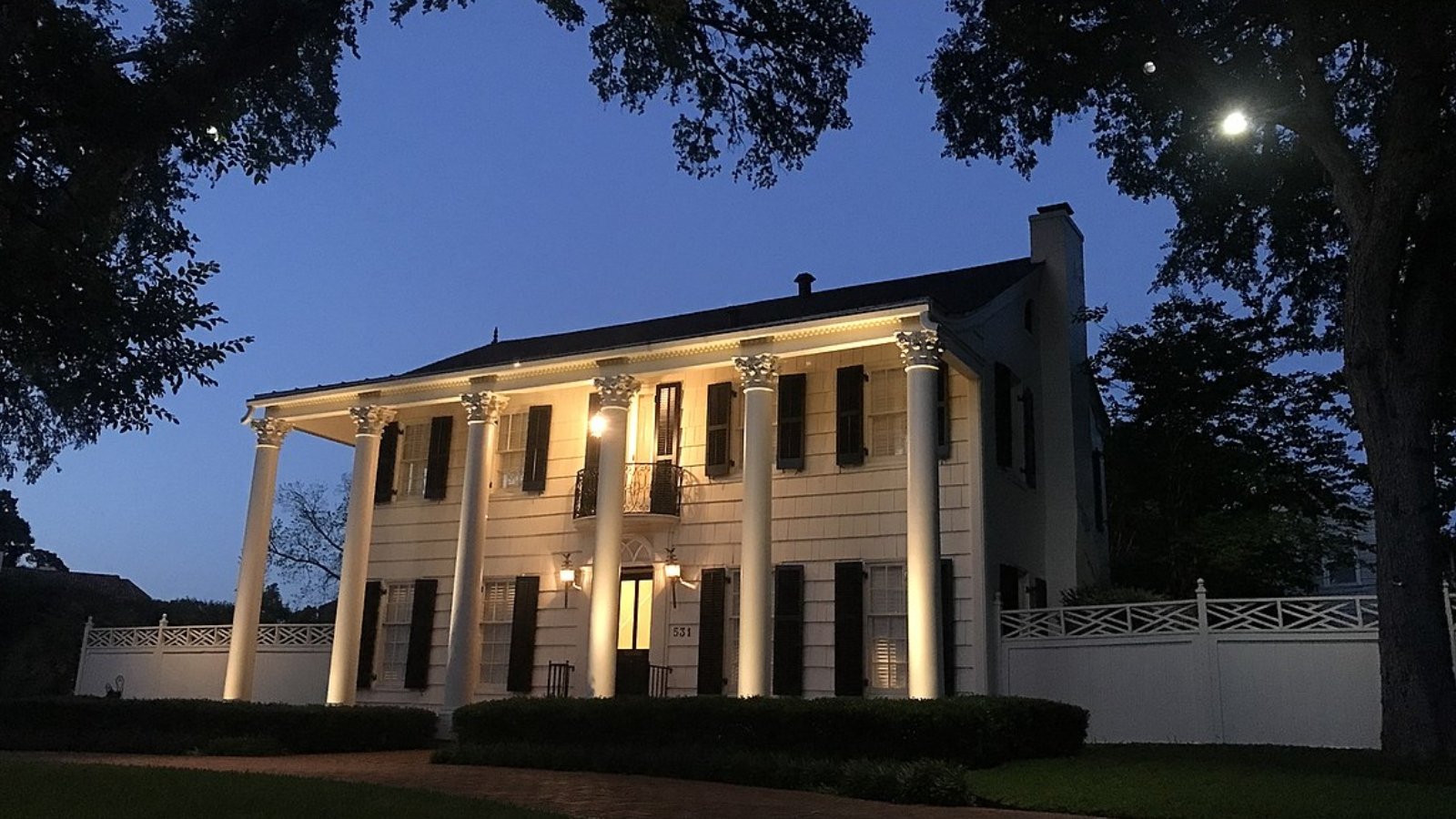
Why are people willing to pay so much to live here? What’s special about it?
Terrell Hills offers residents an exclusive address within San Antonio featuring tree-lined streets and historic architecture. The community provides urban convenience with suburban privacy, attracting professionals and established families. Many homes feature classic designs and mature landscaping on larger lots.
The area benefits from excellent schools and proximity to major employment centers while maintaining its distinct character. Low crime rates and strong property maintenance standards help preserve the community’s prestige. The neighborhood’s history and architectural significance add to its long-term appeal.
How Terrell Hills Rose to Prominence
Terrell Hills was developed in the 1920s as one of San Antonio’s first planned suburbs, designed to attract affluent families seeking quality housing outside the downtown core. The community was carefully planned with winding streets and architectural standards that preserved its upscale character.
The area’s proximity to downtown San Antonio and major military installations made it attractive to business leaders and military officers. Over the decades, Terrell Hills maintained its exclusivity through careful zoning and development controls. The community’s reputation for quality and stability attracted successive generations of affluent residents.
3 Interesting Tidbits
1. Historic Planning – One of San Antonio’s first planned suburbs, designed with architectural standards that persist today.
2. Tree Canopy – Mature oak trees create a distinctive canopy that adds to the neighborhood’s character and appeal.
3. Central Location – Convenient access to downtown San Antonio, the Medical Center, and major cultural attractions.
20. Driftwood – 147% Home Price Increase Since 2010
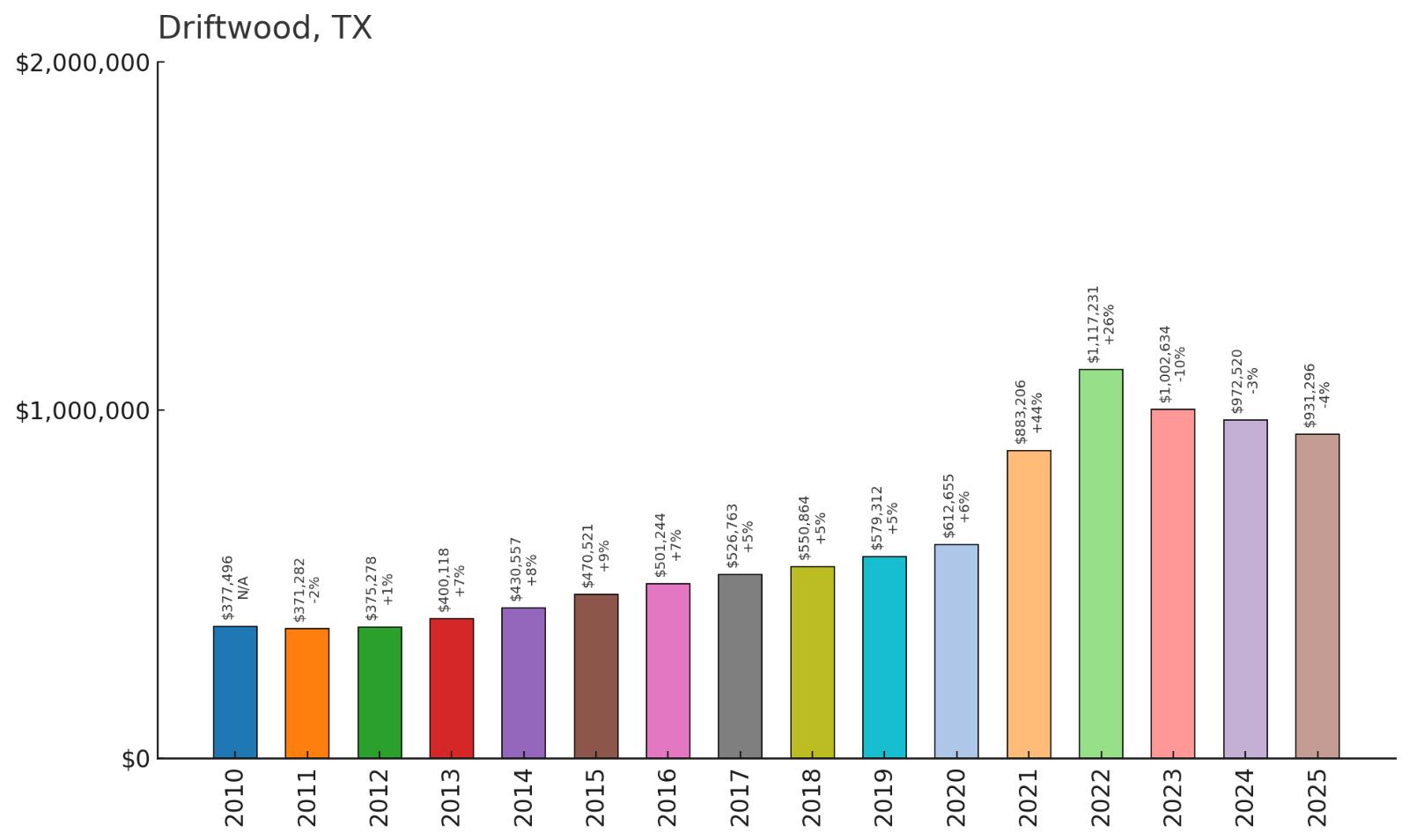
- 2010: $377,496
- 2011: $371,282
- 2012: $375,278
- 2013: $400,118
- 2014: $430,557
- 2015: $470,521
- 2016: $501,244
- 2017: $526,763
- 2018: $550,864
- 2019: $579,312
- 2020: $612,655
- 2021: $883,206
- 2022: $1,117,231
- 2023: $1,002,634
- 2024: $972,520
- 2025: $931,296
Driftwood has achieved remarkable growth of 147% since 2010, with explosive increases during 2021-2022 that pushed values above $1.1 million. The community has cooled from its peak but remains near $931,000 in 2025. This Hays County location benefits from Austin’s expansion while maintaining Hill Country charm.
Why Driftwood?
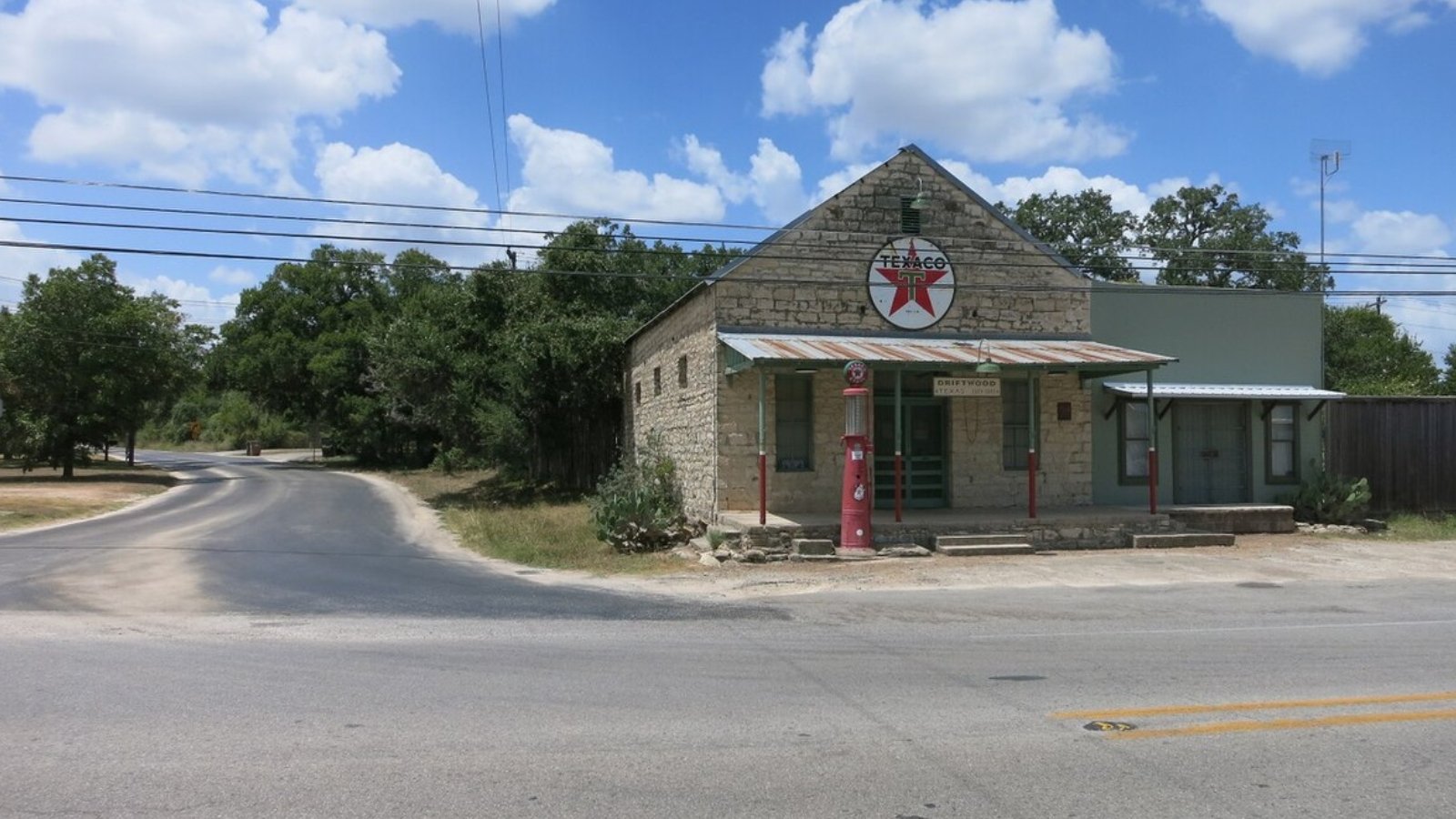
Why are people willing to pay so much to live here? What’s special about it?
Driftwood offers residents a perfect blend of Hill Country beauty and proximity to Austin’s job market. The community features rolling hills, oak trees, and custom homes on large lots that appeal to buyers seeking natural settings. Many properties offer scenic views and outdoor recreation opportunities.
The area attracts professionals who value space and privacy while maintaining reasonable commutes to Austin. Limited commercial development preserves the rural character and natural beauty. Access to outdoor activities like hiking and lake recreation adds to the lifestyle appeal.
How Driftwood Rose to Prominence
Driftwood began as a small rural community in the Texas Hill Country, maintaining its agricultural character for over a century. The area gained attention in the 1990s as Austin’s rapid growth pushed development into previously rural areas. The community’s natural beauty and proximity to Austin made it attractive to affluent buyers.
The opening of the Salt Traders Coastal Cooking restaurant put Driftwood on the culinary map, attracting visitors from Austin and beyond. This exposure helped drive demand for residential properties in the area. The community’s commitment to preserving its rural character while accommodating growth has sustained its appeal.
3 Interesting Tidbits
1. Culinary Destination – Home to several acclaimed restaurants that draw visitors from Austin and across Texas.
2. Hill Country Setting – Offers some of the most scenic rural properties within commuting distance of Austin.
3. Creative Community – Attracts artists, musicians, and other creative professionals seeking inspiration in natural settings.
19. Olmos Park – 81% Home Price Increase Since 2010
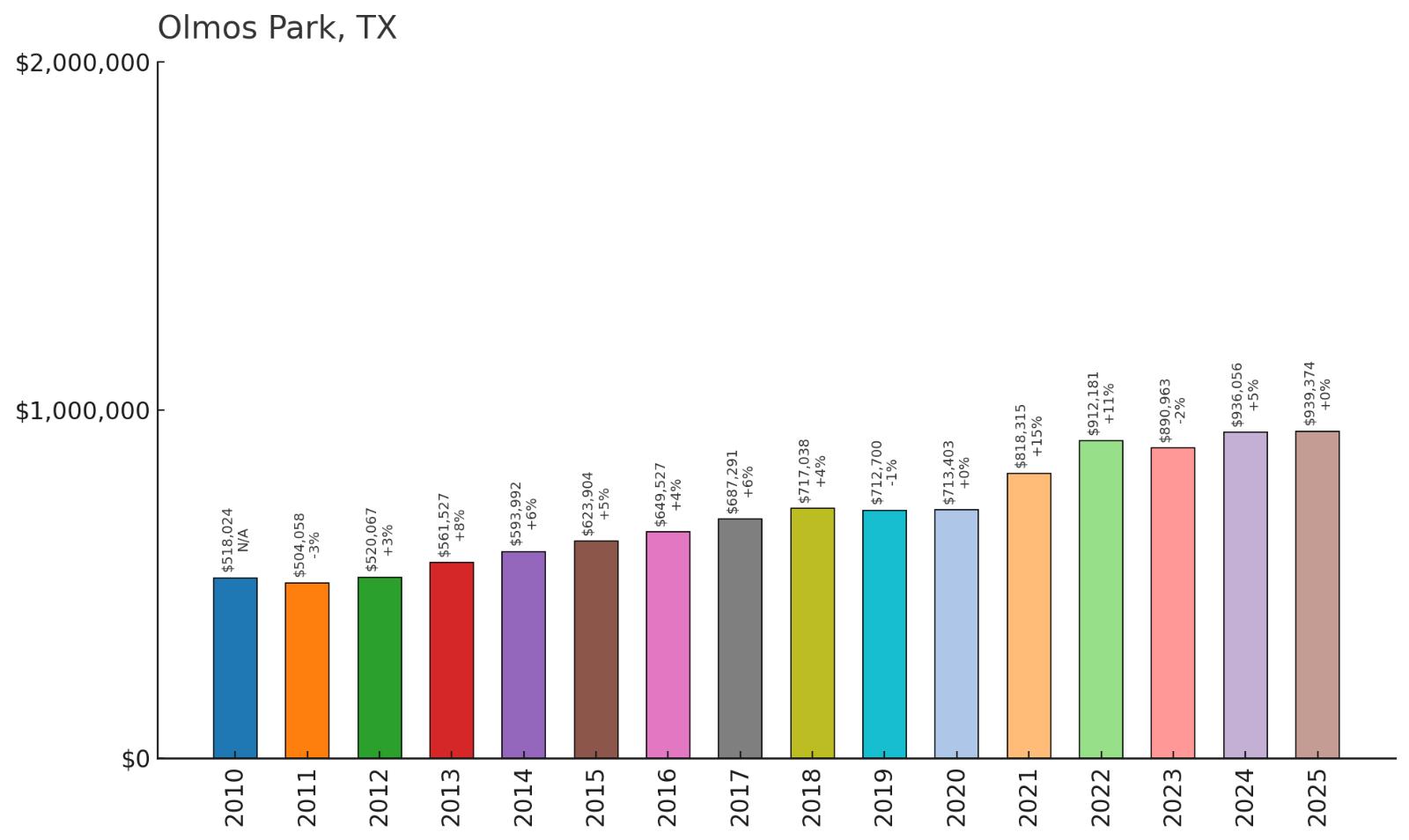
- 2010: $518,024
- 2011: $504,058
- 2012: $520,067
- 2013: $561,527
- 2014: $593,992
- 2015: $623,904
- 2016: $649,527
- 2017: $687,291
- 2018: $717,038
- 2019: $712,700
- 2020: $713,403
- 2021: $818,315
- 2022: $912,181
- 2023: $890,963
- 2024: $936,056
- 2025: $939,374
Olmos Park shows steady appreciation of 81% since 2010, with consistent growth throughout the period. The community experienced acceleration in recent years, reaching current values near $939,000. This tiny San Antonio enclave maintains its exclusivity through limited size and careful development controls.
Why Olmos Park?

Why are people willing to pay so much to live here? What’s special about it?
Olmos Park provides residents with an exclusive address in the heart of San Antonio featuring historic homes and tree-lined streets. The community offers privacy and prestige while maintaining easy access to downtown and major employment centers. Many homes feature distinctive architecture and mature landscaping.
The area’s small size creates an intimate community atmosphere where neighbors know each other. Excellent municipal services and low crime rates add to the appeal. The community’s history and architectural character provide long-term stability and value.
How Olmos Park Rose to Prominence
Olmos Park was incorporated in 1927 as an exclusive residential enclave designed to attract San Antonio’s business and social elite. The community was carefully planned with architectural standards and deed restrictions that preserved its upscale character. Early residents included prominent business leaders and professionals.
The area’s strategic location near downtown San Antonio and the development of nearby cultural institutions helped maintain its prestige. Over the decades, Olmos Park’s commitment to maintaining high standards through strict zoning and architectural controls preserved its exclusivity and property values.
3 Interesting Tidbits
1. Tiny Size – At just 0.6 square miles, Olmos Park is one of the smallest incorporated cities in Texas.
2. Architectural Heritage – The community features a collection of historic homes representing various architectural styles from the early 20th century.
3. Cultural Proximity – Close to the San Antonio Museum of Art, Pearl District, and other cultural attractions.
18. Shavano Park – 77% Home Price Increase Since 2010
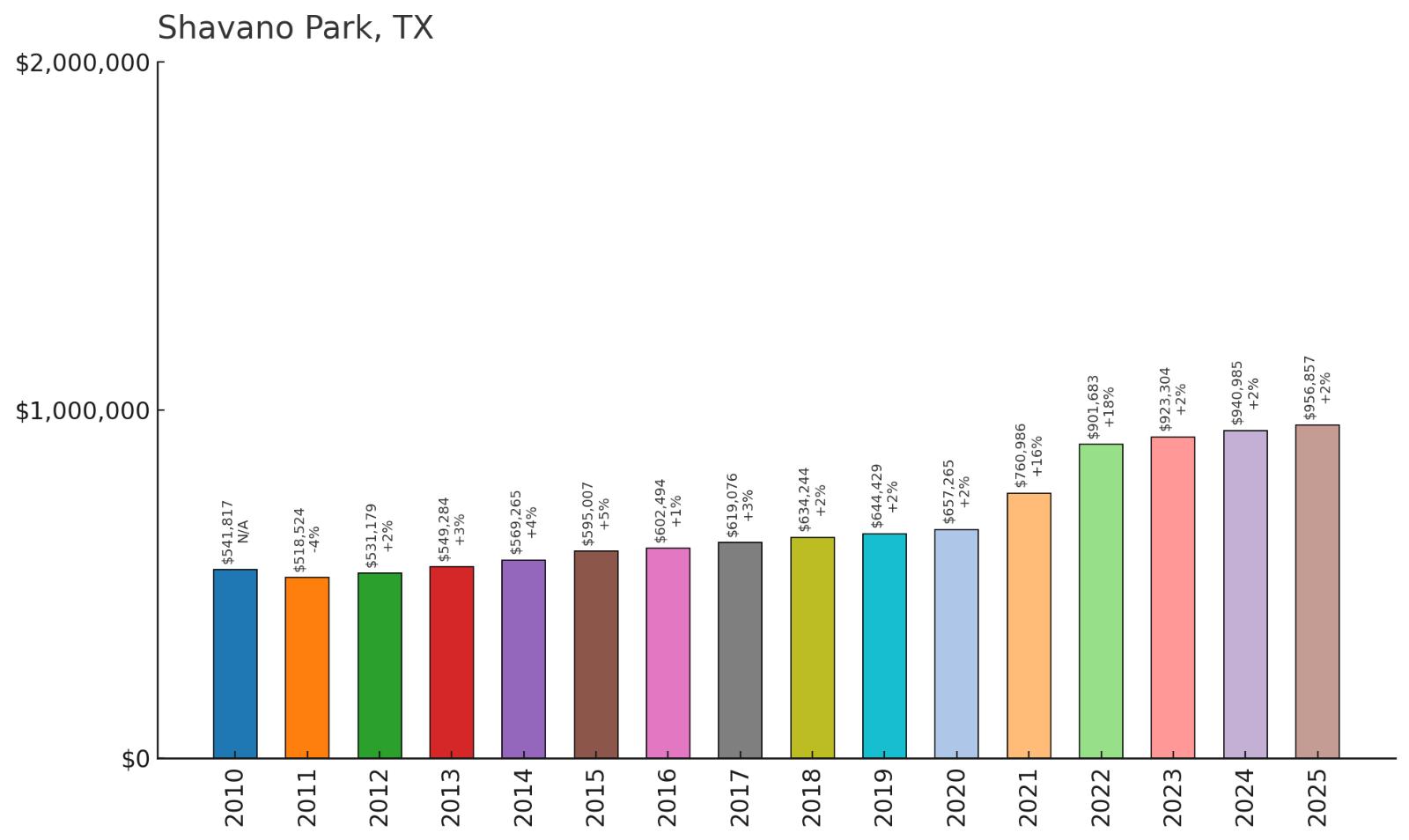
- 2010: $541,817
- 2011: $518,524
- 2012: $531,179
- 2013: $549,284
- 2014: $569,265
- 2015: $595,007
- 2016: $602,494
- 2017: $619,076
- 2018: $634,244
- 2019: $644,429
- 2020: $657,265
- 2021: $760,986
- 2022: $901,683
- 2023: $923,304
- 2024: $940,985
- 2025: $956,857
Shavano Park demonstrates solid growth of 77% since 2010, with steady appreciation throughout most of the period. The community accelerated significantly after 2020, adding nearly $300,000 in value over five years. Current prices near $957,000 reflect this established San Antonio suburb’s continued appeal.
Why Shavano Park?

Why are people willing to pay so much to live here? What’s special about it?
Shavano Park offers residents large lots and estate-style homes in one of San Antonio’s most prestigious addresses. The community features excellent schools, low crime rates, and easy access to major employment centers. Many properties include extensive landscaping and custom architectural features.
The area attracts executives and professionals who value privacy and space while maintaining urban convenience. Strong municipal services and community involvement help preserve property values. The neighborhood’s reputation for quality and stability drives continued demand.
How Shavano Park Rose to Prominence
Shavano Park was incorporated in 1956 as San Antonio began expanding northward into previously rural areas. The community was developed with larger lots and higher standards than typical suburban developments. Early residents included business leaders and professionals seeking quality housing outside the urban core.
The area’s proximity to major highways and employment centers, combined with excellent schools and low crime rates, attracted affluent families. The community’s commitment to maintaining large lots and architectural standards helped preserve its exclusivity and property values over time.
3 Interesting Tidbits
1. Large Lots – Many properties feature lots of half an acre or more, providing privacy and space rare in urban areas.
2. School Quality – Served by highly-rated North East Independent School District schools.
3. Strategic Location – Easy access to downtown San Antonio, the Medical Center, and Loop 1604 corridor.
17. Sunset Valley – 149% Home Price Increase Since 2010

- 2010: $397,023
- 2011: $405,166
- 2012: $445,694
- 2013: $486,999
- 2014: $521,276
- 2015: $561,400
- 2016: $584,943
- 2017: $592,243
- 2018: $626,456
- 2019: $685,086
- 2020: $704,005
- 2021: $995,168
- 2022: $1,207,664
- 2023: $1,081,873
- 2024: $1,043,012
- 2025: $990,306
Sunset Valley has achieved exceptional growth of 149% since 2010, with explosive gains during 2021-2022 that pushed values above $1.2 million. The community has moderated from its peak but remains near $990,000 in 2025. This Travis County location benefits from Austin’s tech boom while maintaining small-town character.
Why Sunset Valley?
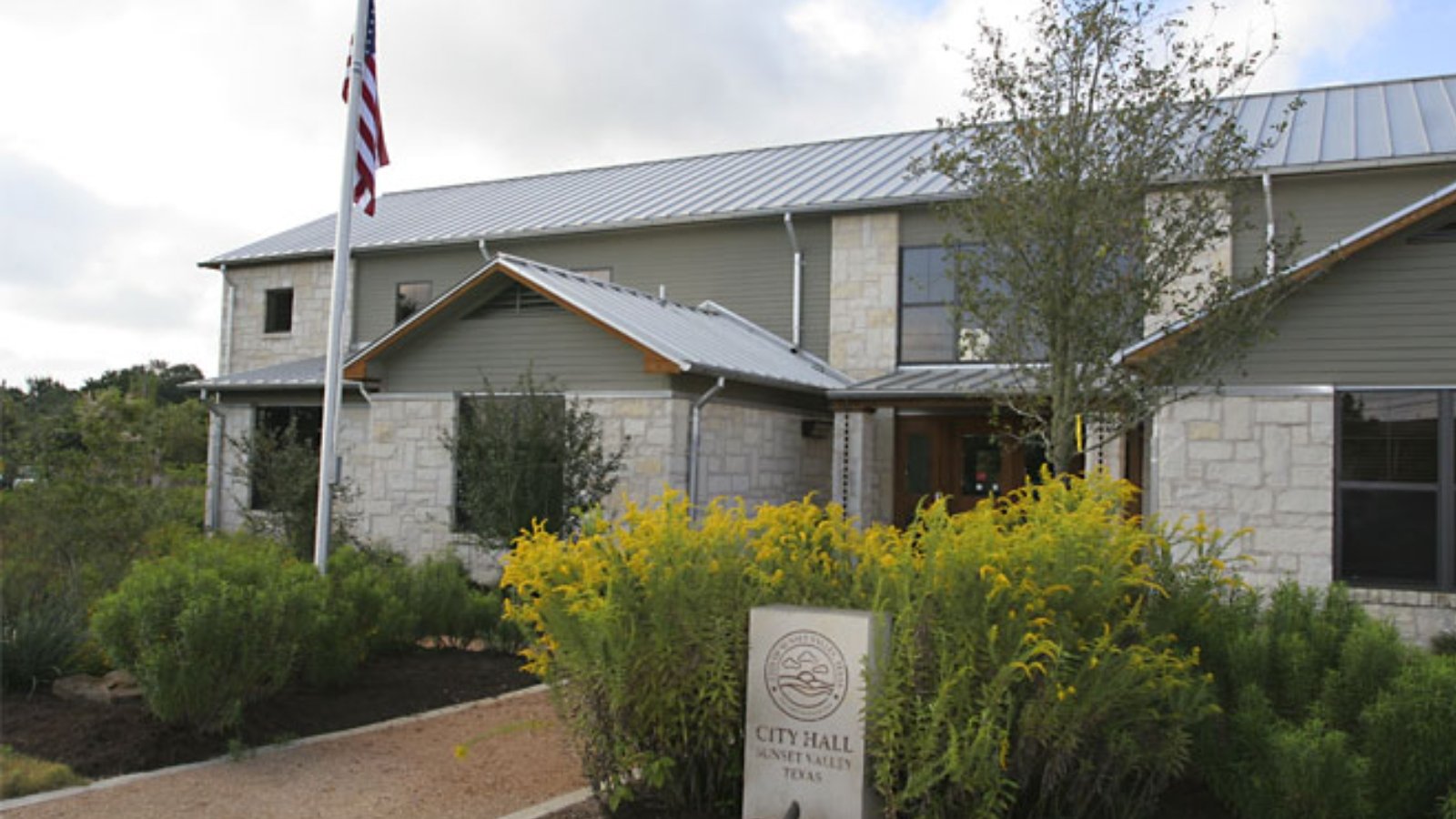
Why are people willing to pay so much to live here? What’s special about it?
Sunset Valley provides residents with a unique combination of small-town governance and big-city convenience in the heart of Austin. The community features diverse housing options from condos to custom homes, appealing to various demographics. Proximity to downtown Austin and South Lamar’s entertainment district adds significant value.
The area attracts young professionals and families who want urban amenities without sacrificing community character. Excellent restaurants, entertainment venues, and cultural attractions are within walking distance. The community’s commitment to preserving its identity while accommodating growth creates long-term appeal.
How Sunset Valley Rose to Prominence
Sunset Valley was incorporated in 1954 as a small residential community seeking to maintain local control while surrounded by Austin’s growth. The community remained relatively modest until Austin’s tech boom accelerated demand for housing in central locations.
The area’s proximity to downtown Austin and the development of the South Lamar corridor transformed it into a highly desirable location. Mixed-use development and urban amenities attracted affluent buyers seeking convenience and lifestyle. The community’s small size and central location created scarcity that drove property values.
3 Interesting Tidbits
1. Central Austin – One of the few remaining small municipalities completely surrounded by the City of Austin.
2. Mixed Development – Features a blend of residential, commercial, and entertainment options within a compact area.
3. Food Scene – Home to several acclaimed restaurants and close to Austin’s famous South Lamar food corridor.
16. Volente – 137% Home Price Increase Since 2010
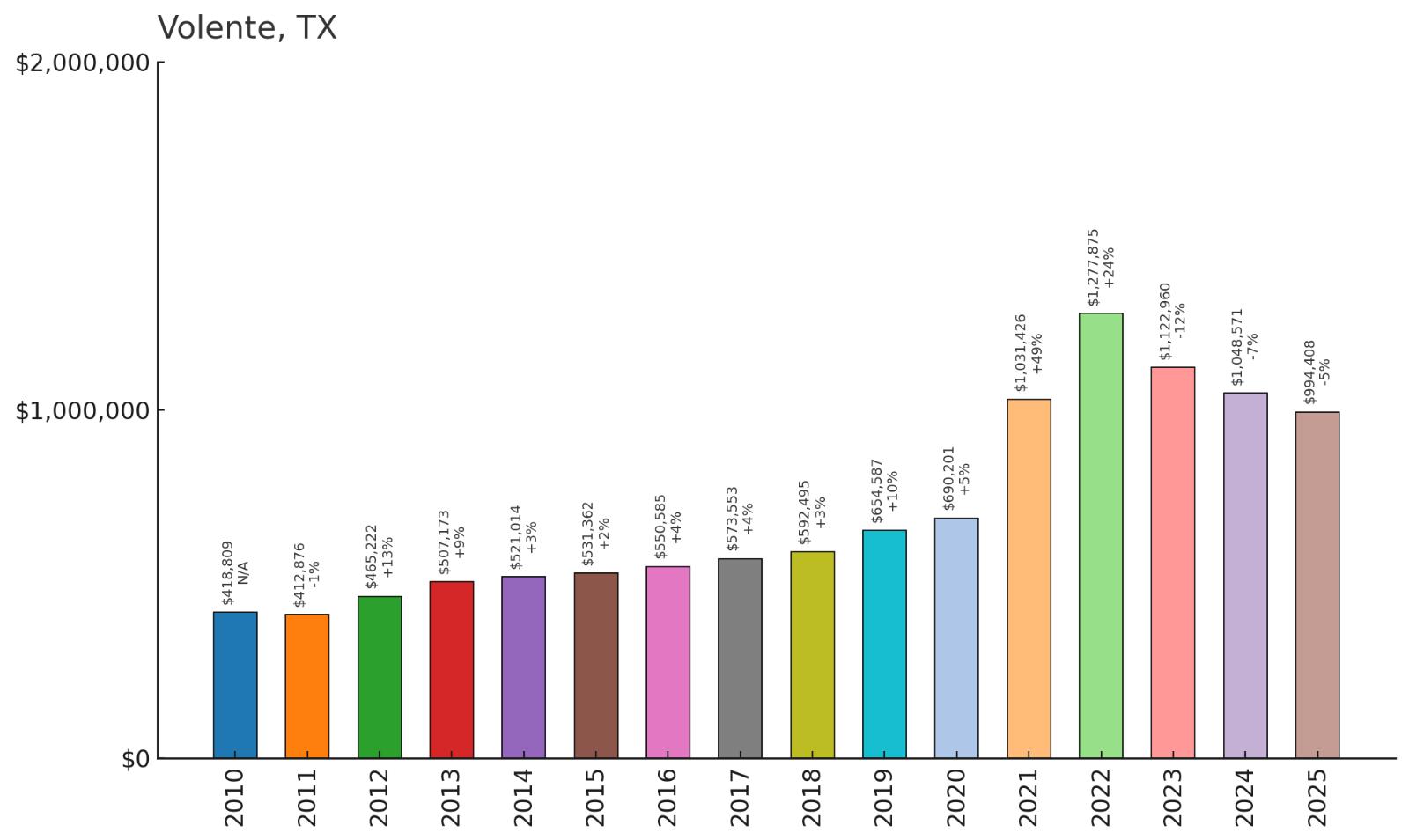
- 2010: $418,809
- 2011: $412,876
- 2012: $465,222
- 2013: $507,173
- 2014: $521,014
- 2015: $531,362
- 2016: $550,585
- 2017: $573,553
- 2018: $592,495
- 2019: $654,587
- 2020: $690,201
- 2021: $1,031,426
- 2022: $1,277,875
- 2023: $1,122,960
- 2024: $1,048,571
- 2025: $994,408
Volente has achieved impressive growth of 137% since 2010, with explosive gains during 2021-2022 that pushed values above $1.2 million. The community has cooled from its peak but remains near $994,000 in 2025. This Travis County lakefront location benefits from Lake Travis access and Austin proximity.
Why Volente?
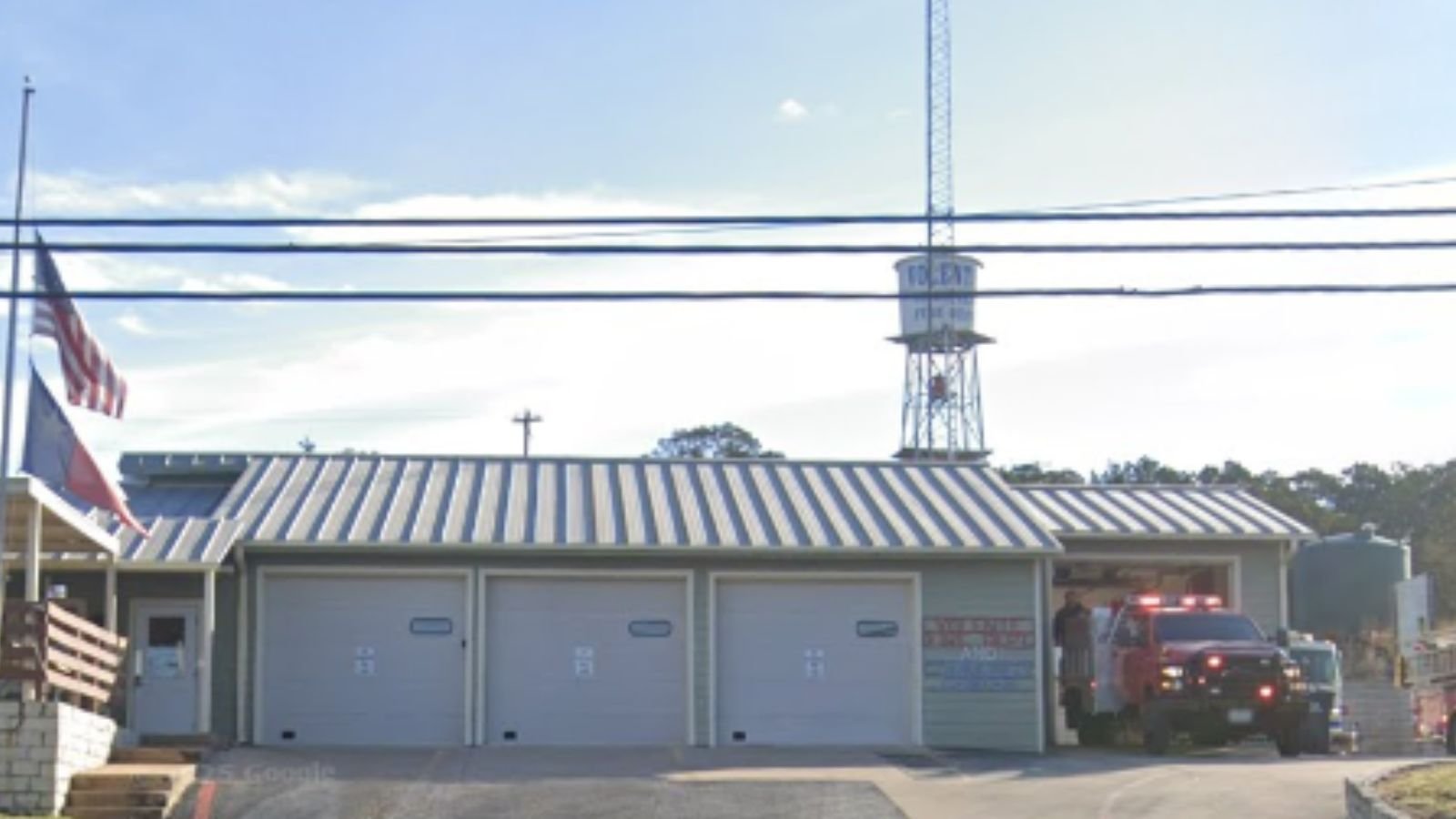
Why are people willing to pay so much to live here? What’s special about it?
Volente offers residents direct access to Lake Travis with many properties featuring private docks and waterfront views. The community attracts buyers seeking vacation homes, retirement properties, and primary residences with water recreation opportunities. Scenic beauty and outdoor activities drive much of the appeal.
The area provides a resort-like atmosphere while maintaining reasonable access to Austin’s job market. Many homes feature custom designs that maximize lake views and outdoor living spaces. The community’s focus on waterfront living creates a unique lifestyle proposition in the Austin area.
How Volente Rose to Prominence
Volente was incorporated in 1990 as Lake Travis area development accelerated. The community was designed to take advantage of lakefront locations while providing residential amenities. Early development focused on vacation homes and weekend retreats for Austin-area residents.
As Austin’s economy grew and remote work became more common, many vacation properties transitioned to primary residences. The area’s appeal to retirees and professionals seeking waterfront living drove demand and property values. Limited developable waterfront land helped sustain price appreciation.
3 Interesting Tidbits
1. Lake Travis – One of the premier lakefront communities with extensive boating and water recreation opportunities.
2. Beach Club – The Volente Beach Club provides residents with private waterfront access and recreational facilities.
3. Hill Country Views – Many properties offer scenic views of both the lake and surrounding Texas Hill Country.
15. Copper Canyon – 173% Home Price Increase Since 2010

- 2010: $399,263
- 2011: $393,572
- 2012: $398,212
- 2013: $431,237
- 2014: $456,507
- 2015: $501,280
- 2016: $529,405
- 2017: $563,060
- 2018: $604,484
- 2019: $618,010
- 2020: $644,766
- 2021: $800,548
- 2022: $993,869
- 2023: $966,160
- 2024: $1,053,063
- 2025: $1,088,750
Copper Canyon has delivered exceptional growth of 173% since 2010, with steady appreciation throughout the period and significant acceleration after 2020. The community reached current levels above $1.08 million, representing one of the strongest appreciation rates in North Texas. This Denton County location benefits from Dallas-Fort Worth proximity and luxury amenities.
Why Copper Canyon?
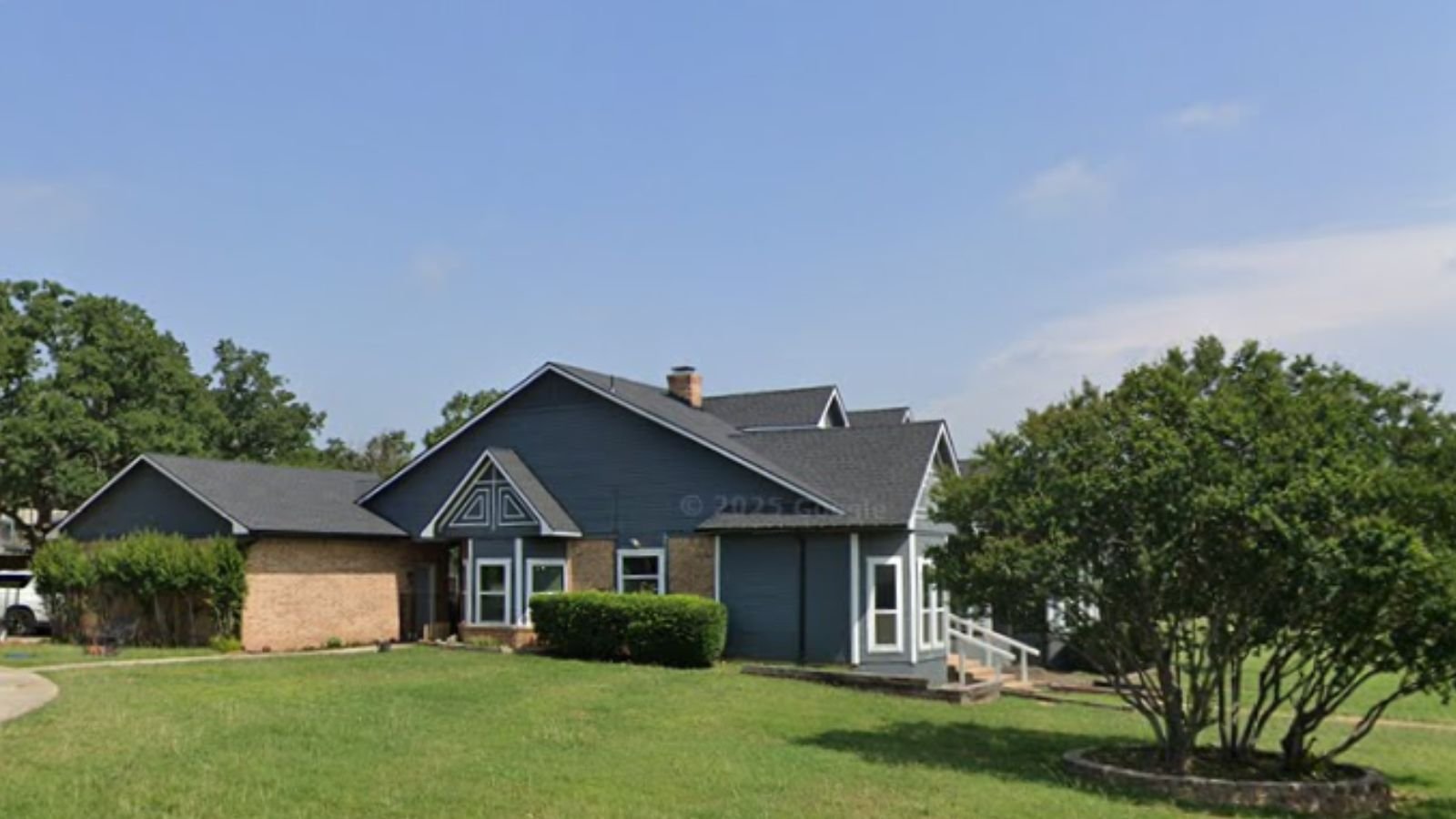
Why are people willing to pay so much to live here? What’s special about it?
Copper Canyon offers residents large estate lots and custom homes in a gated community setting with resort-style amenities. The community features golf courses, equestrian facilities, and extensive green space that appeals to affluent buyers. Families value the excellent schools and safe environment with luxury amenities.
The area attracts executives and professionals who want space and privacy while maintaining access to Dallas-Fort Worth employment centers. High-end amenities including golf and spa facilities create a resort-like lifestyle. The community’s exclusivity and amenities help sustain premium property values.
How Copper Canyon Rose to Prominence
Copper Canyon was developed in the 1980s as a master-planned luxury community designed to attract affluent families to the northern Dallas suburbs. The development featured large lots, golf courses, and upscale amenities that set it apart from typical suburban developments.
The community’s strategic location between Dallas and Fort Worth, combined with excellent schools and luxury amenities, attracted business executives and professionals. The area’s commitment to maintaining high standards through architectural controls and community amenities helped establish its reputation for exclusivity.
3 Interesting Tidbits
1. Equestrian Community – Features extensive horse trails and facilities, reflecting North Texas’s equestrian heritage.
2. Golf Resort – The Old American Golf Club provides residents with a championship golf course and club facilities.
3. Gated Security – Multiple gated sections provide varying levels of privacy and exclusivity within the broader community.
14. Lucas – 174% Home Price Increase Since 2010

- 2010: $398,160
- 2011: $395,599
- 2012: $409,362
- 2013: $451,876
- 2014: $491,493
- 2015: $542,026
- 2016: $578,641
- 2017: $611,482
- 2018: $646,376
- 2019: $649,708
- 2020: $675,495
- 2021: $850,381
- 2022: $1,132,731
- 2023: $1,074,588
- 2024: $1,099,873
- 2025: $1,089,815
Lucas has achieved outstanding growth of 174% since 2010, with steady appreciation throughout the period and explosive gains during 2021-2022. The community peaked above $1.1 million and remains near $1.09 million in 2025. This Collin County location benefits from excellent schools and Dallas-area proximity.
Why Lucas?
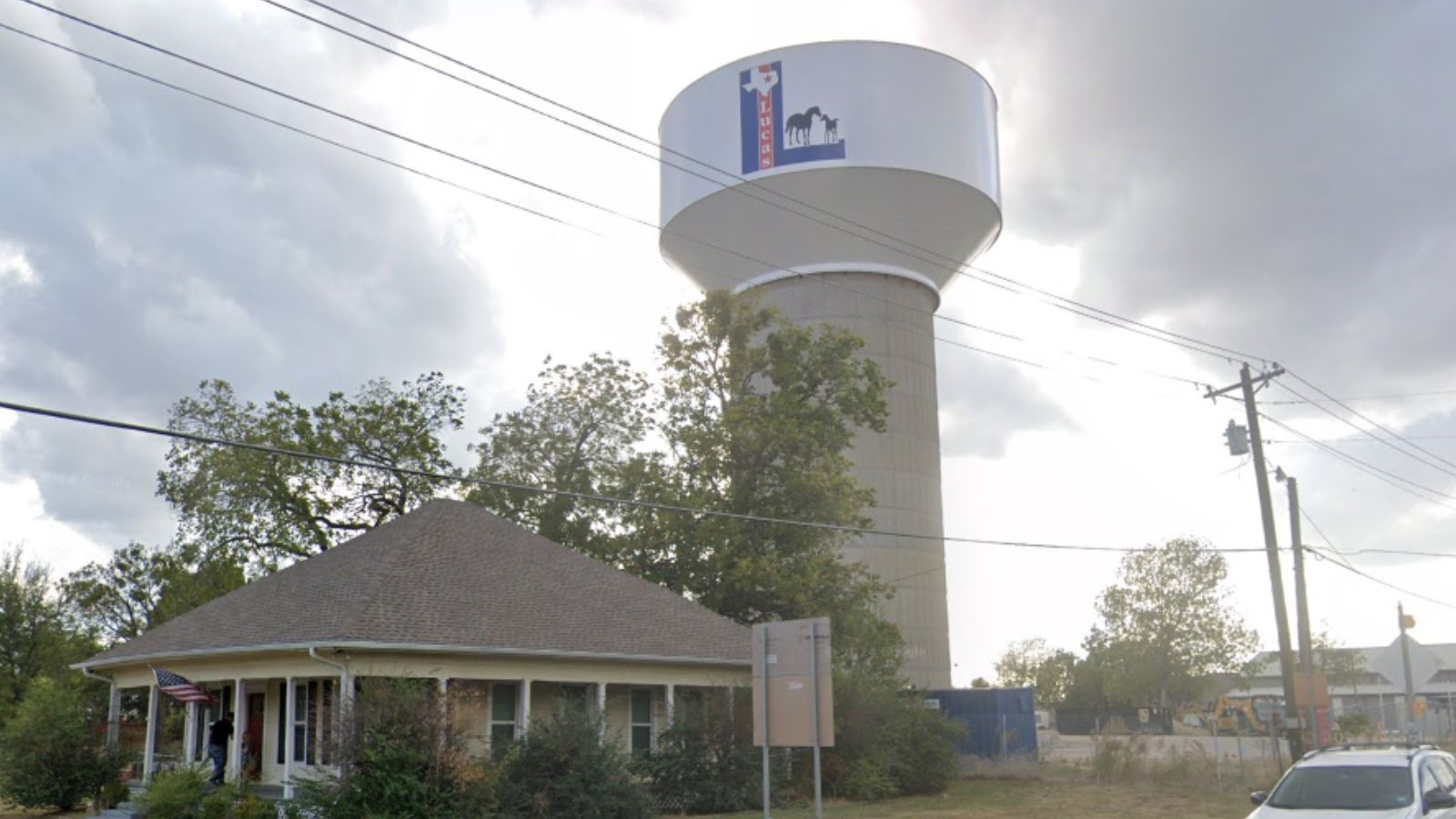
Why are people willing to pay so much to live here? What’s special about it?
Lucas provides residents with large lots and custom homes in a rural setting while maintaining excellent school access and Dallas-area connectivity. The community features extensive green space, horse properties, and minimal commercial development. Families value the combination of space, safety, and educational quality.
The area attracts professionals seeking privacy and rural amenities without sacrificing urban access. Many properties include equestrian facilities and agricultural exemptions. Strong local governance and community involvement help maintain high standards and property values.
How Lucas Rose to Prominence
Lucas was incorporated in 1960 as a small farming community seeking to maintain rural character while accommodating growth pressure from the expanding Dallas metroplex. The community’s founders wanted to preserve large lots and agricultural uses while providing quality municipal services.
The area’s excellent schools and strategic location attracted affluent families seeking space and privacy. The community’s commitment to maintaining large lots and limiting commercial development helped preserve its rural character while property values appreciated. Corporate relocations to nearby Plano and Richardson increased demand.
3 Interesting Tidbits
1. Lovejoy Schools – Served by the highly-rated Lovejoy Independent School District, attracting families from across North Texas.
2. Horse Community – Many properties feature equestrian facilities, maintaining the area’s agricultural heritage.
3. Rural Character – Large minimum lot sizes and agricultural zoning preserve the community’s rural atmosphere.
13. Parker – 151% Home Price Increase Since 2010
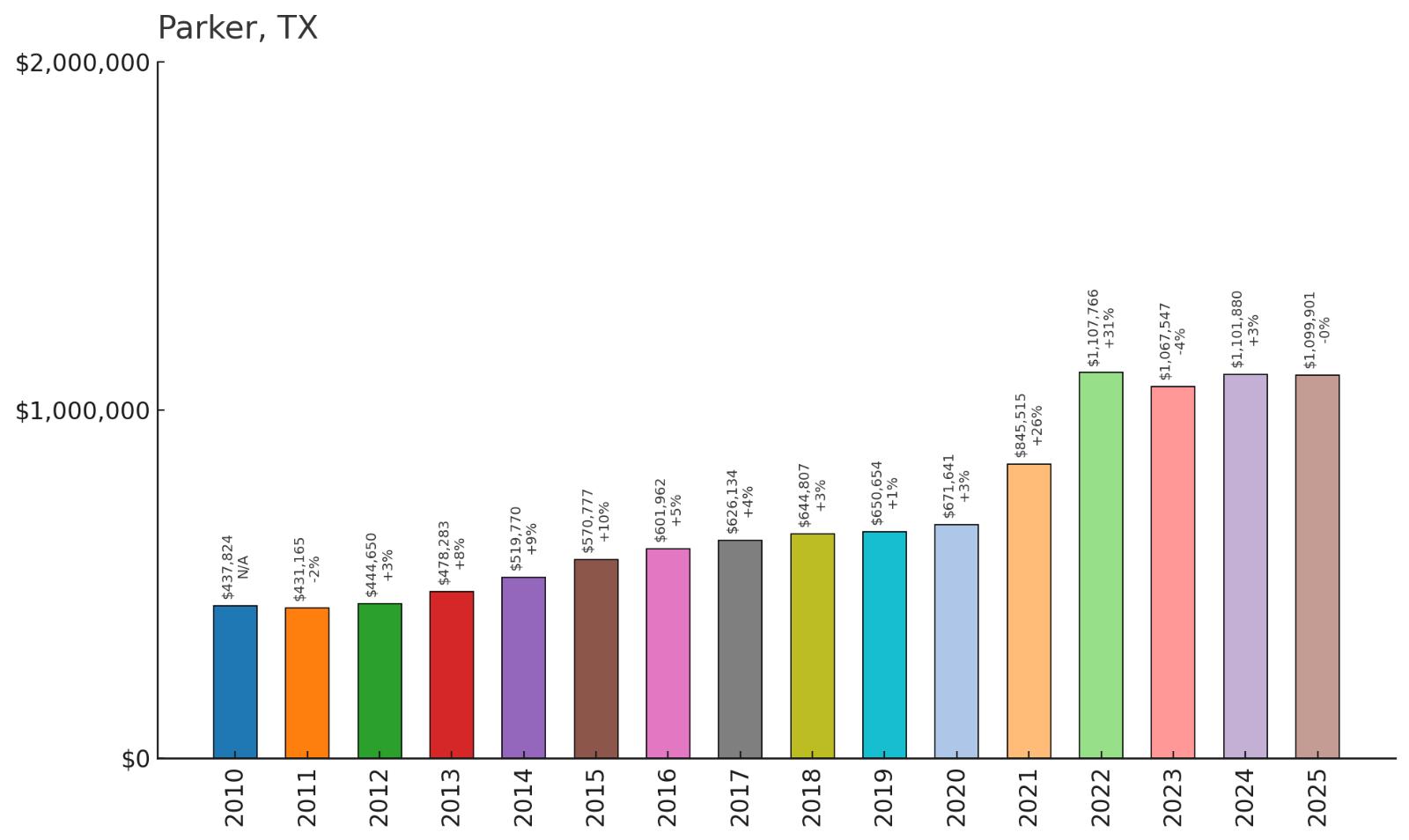
- 2010: $437,824
- 2011: $431,165
- 2012: $444,650
- 2013: $478,283
- 2014: $519,770
- 2015: $570,777
- 2016: $601,962
- 2017: $626,134
- 2018: $644,807
- 2019: $650,654
- 2020: $671,641
- 2021: $845,515
- 2022: $1,107,766
- 2023: $1,067,547
- 2024: $1,101,880
- 2025: $1,099,901
Parker has delivered excellent growth of 151% since 2010, with consistent appreciation and significant acceleration during 2021-2022. The community reached above $1.1 million and maintains those levels in 2025. This Collin County location benefits from its connection to the famous Southfork Ranch and excellent North Texas schools.
Why Parker?
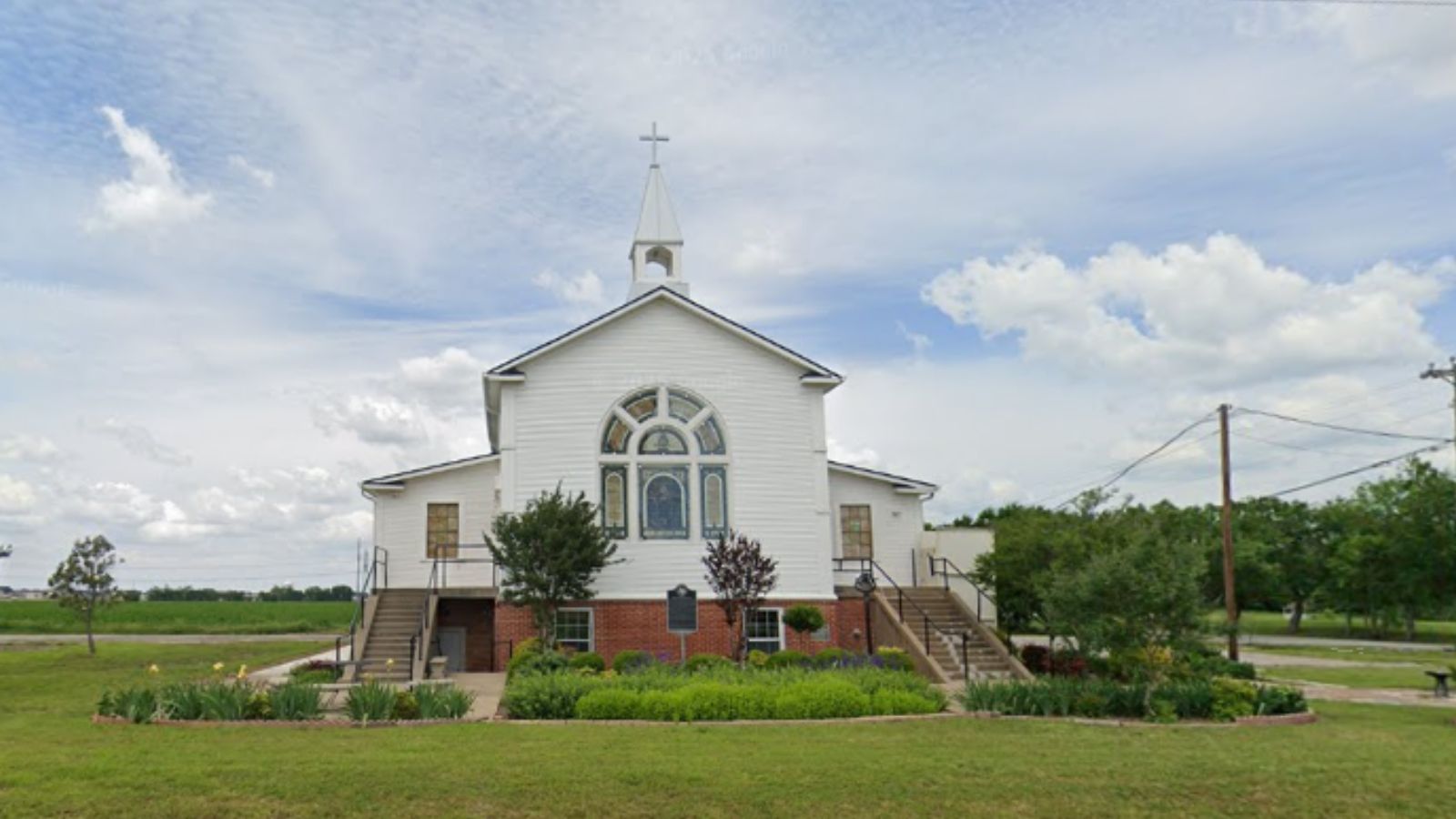
Why are people willing to pay so much to live here? What’s special about it?
Parker offers residents estate-sized lots and luxury homes in a rural setting with excellent connectivity to Dallas-area employment. The community features the famous Southfork Ranch and maintains its agricultural character while providing upscale amenities. Families value the combination of space, prestige, and educational excellence.
The area attracts affluent buyers seeking privacy and rural luxury without sacrificing access to urban amenities. Many properties feature custom homes, equestrian facilities, and extensive landscaping. The community’s reputation and limited development help sustain premium property values.
How Parker Rose to Prominence
Parker gained fame as the home of Southfork Ranch, the fictional Ewing family estate from the television series “Dallas.” This exposure put the community on the map as a symbol of Texas luxury and oil wealth. The area’s association with the show helped establish its reputation for upscale living.
Beyond its television fame, Parker developed as an exclusive enclave for Dallas-area executives and entrepreneurs seeking large estates and privacy. The community’s excellent schools, low crime rates, and strategic location attracted affluent families. The area’s commitment to preserving its rural character while accommodating luxury development sustained its appeal.
3 Interesting Tidbits
1. Southfork Ranch – Home to the famous ranch featured in the television series “Dallas,” now a popular tourist destination and event venue.
2. Plano Schools – Many residents benefit from access to Plano Independent School District, consistently ranked among Texas’s best.
3. Estate Living – Large lots and custom homes provide residents with privacy and luxury in a rural setting.
12. Bellaire – 69% Home Price Increase Since 2010
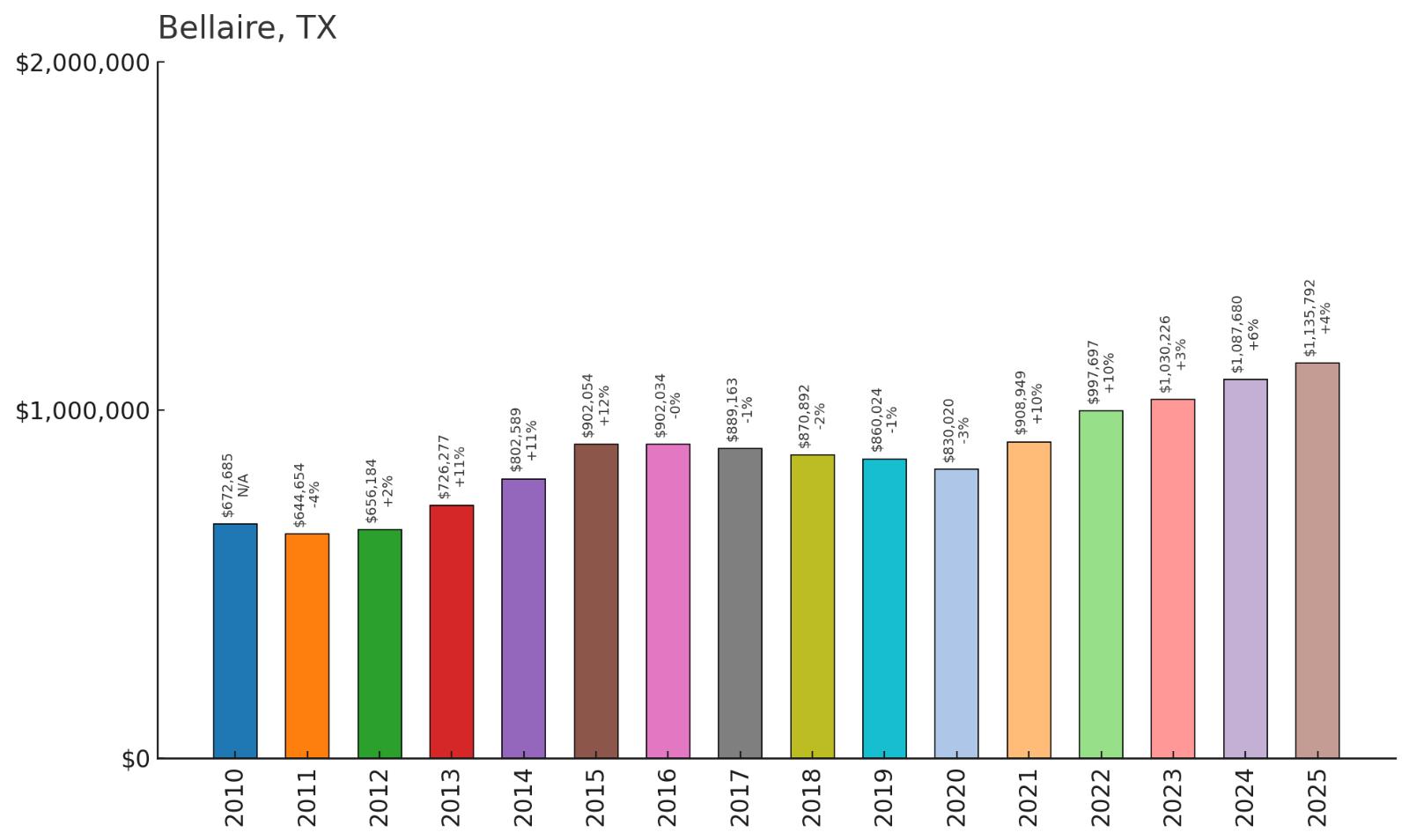
- 2010: $672,685
- 2011: $644,654
- 2012: $656,184
- 2013: $726,277
- 2014: $802,589
- 2015: $902,054
- 2016: $902,034
- 2017: $889,163
- 2018: $870,892
- 2019: $860,024
- 2020: $830,020
- 2021: $908,949
- 2022: $997,697
- 2023: $1,030,226
- 2024: $1,087,680
- 2025: $1,135,792
Bellaire shows steady growth of 69% since 2010, with values starting high and continuing to appreciate consistently. The community experienced some volatility in the mid-2010s before resuming strong growth after 2020. Current values above $1.13 million reflect this Houston enclave’s established prestige and desirability.
Why Bellaire?
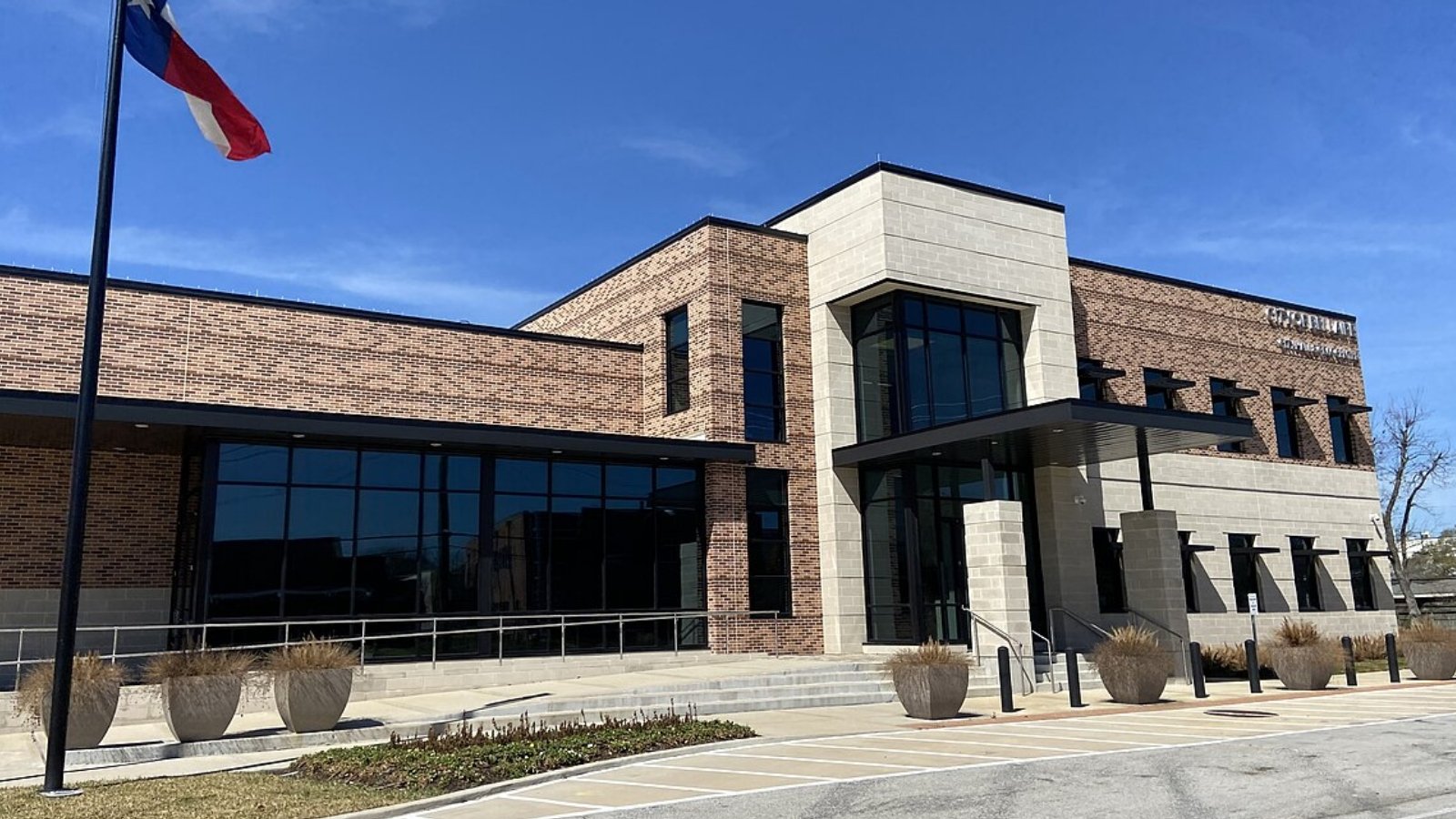
Why are people willing to pay so much to live here? What’s special about it?
Bellaire provides residents with an exclusive address within the Houston metro area featuring tree-lined streets and historic neighborhoods. The community offers excellent schools, easy access to downtown Houston, and the prestigious Galleria area. Many homes feature classic architecture and mature landscaping on well-maintained lots.
The area attracts business executives, medical professionals, and energy industry leaders who value proximity to major employment centers. Strong municipal services and community involvement help maintain high property standards. The neighborhood’s reputation for quality and stability drives continued demand among affluent buyers.
How Bellaire Rose to Prominence
Bellaire was incorporated in 1918 as one of Houston’s first planned suburbs, designed to attract middle and upper-class families seeking quality housing outside the urban core. The community was developed with wide streets, parks, and architectural standards that established its upscale character.
The area’s proximity to downtown Houston and later the Galleria business district made it attractive to business leaders and professionals. The community’s excellent schools and stable neighborhoods attracted successive generations of affluent families. Bellaire’s strategic location and commitment to maintaining high standards helped sustain its prestige over time.
3 Interesting Tidbits
1. Historic Planning – One of Houston’s first planned suburbs, designed with parks and wide boulevards that remain today.
2. Central Location – Strategic position provides easy access to downtown Houston, the Galleria, and the Medical Center.
3. Municipal Services – Operates its own police and fire departments, providing personalized public safety services.
11. Round Top – 286% Home Price Increase Since 2010
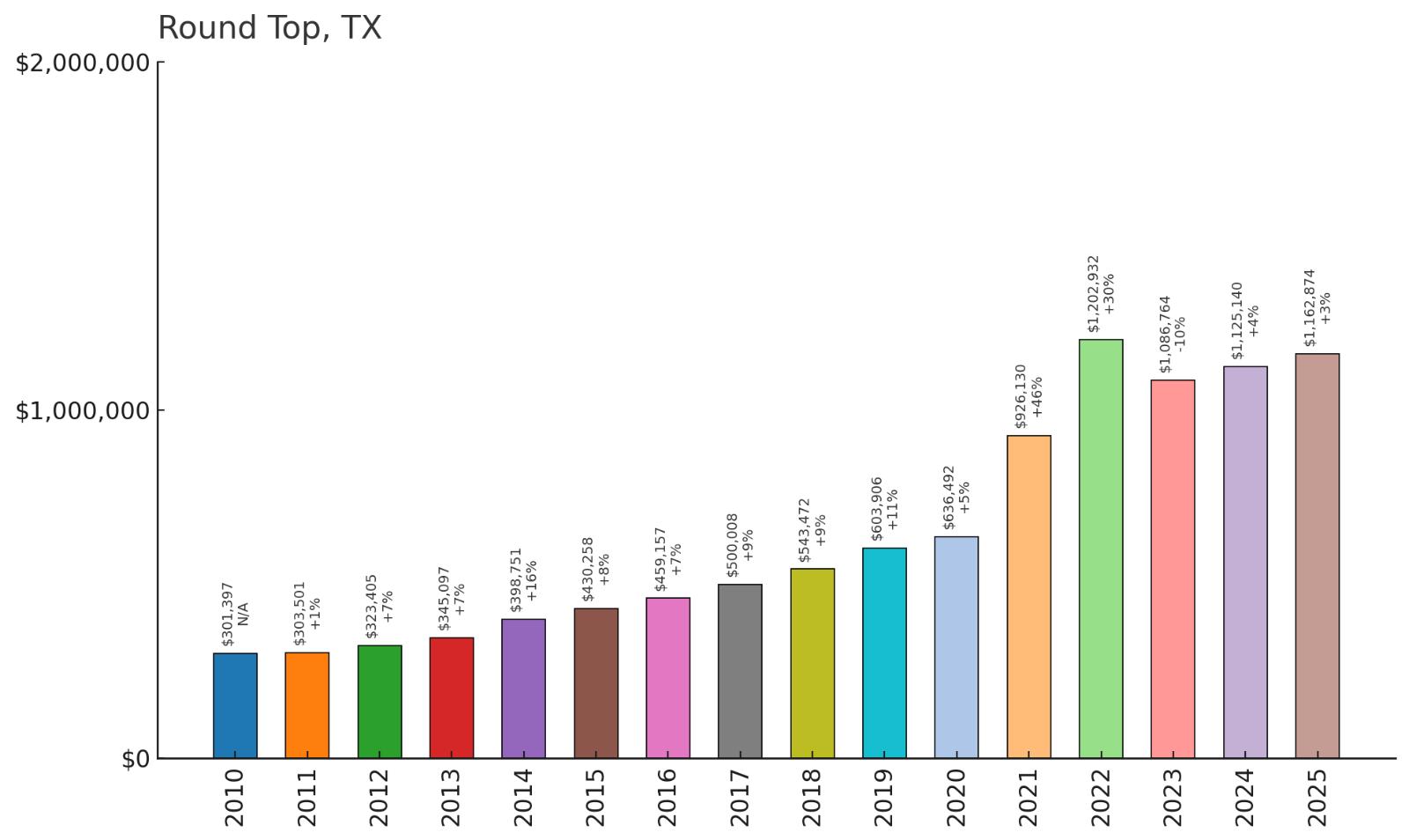
- 2010: $301,397
- 2011: $303,501
- 2012: $323,405
- 2013: $345,097
- 2014: $398,751
- 2015: $430,258
- 2016: $459,157
- 2017: $500,008
- 2018: $543,472
- 2019: $603,906
- 2020: $636,492
- 2021: $926,130
- 2022: $1,202,932
- 2023: $1,086,764
- 2024: $1,125,140
- 2025: $1,162,874
Round Top has achieved the highest appreciation rate on our list at 286% since 2010, with explosive growth during 2021-2022 that pushed values above $1.2 million. The community has stabilized near $1.16 million in 2025. This tiny Fayette County town has become an unlikely luxury destination through its famous antiques scene.
Why Round Top?
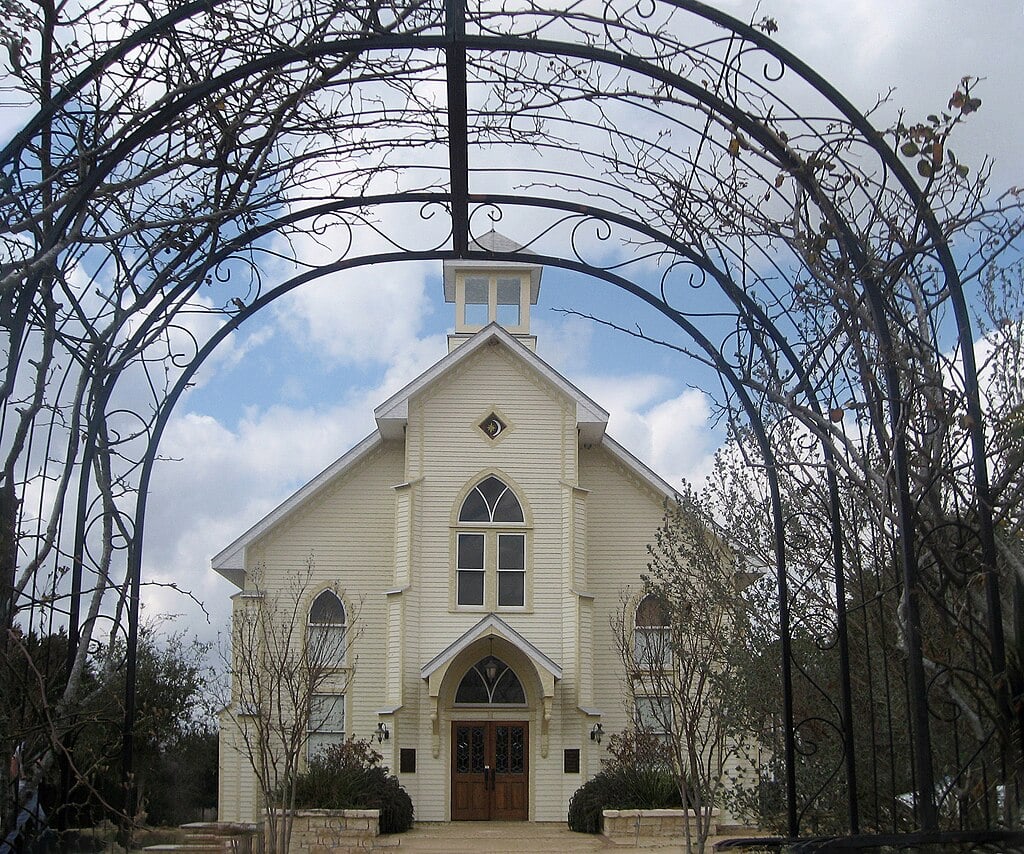
Why are people willing to pay so much to live here? What’s special about it?
Round Top offers residents a unique combination of small-town charm and international cultural significance through its famous antiques shows and arts scene. The community attracts buyers seeking second homes, retreat properties, and creative spaces. The town’s cultural cache and limited inventory create strong demand among affluent collectors and art enthusiasts.
The area provides a peaceful retreat atmosphere while hosting world-renowned cultural events that draw visitors from across the globe. Many properties feature historic architecture and artistic details that reflect the community’s creative character. The town’s intimate size and cultural reputation create exclusivity that drives premium values.
How Round Top Rose to Prominence
Round Top was founded in the 1840s as a small German settlement in rural Texas. The town remained largely agricultural for over a century until Emma Lee Turney began organizing antiques shows in the 1960s. These events gradually grew into internationally recognized antiques fairs that attract collectors from around the world.
The success of the antiques shows put Round Top on the cultural map and attracted artists, designers, and collectors who began purchasing properties in the area. The town’s association with high-end antiques and design helped establish its reputation for luxury and exclusivity. Limited housing inventory and cultural significance drove rapid property value appreciation.
3 Interesting Tidbits
1. Antiques Capital – Hosts internationally famous antiques shows twice yearly that attract collectors and dealers from around the world.
2. Population Under 100 – One of the smallest communities in Texas to command such high property values.
3. Cultural Destination – Features galleries, performance venues, and artist studios that have created a thriving arts community.
10. Hill Country Village – 85% Home Price Increase Since 2010
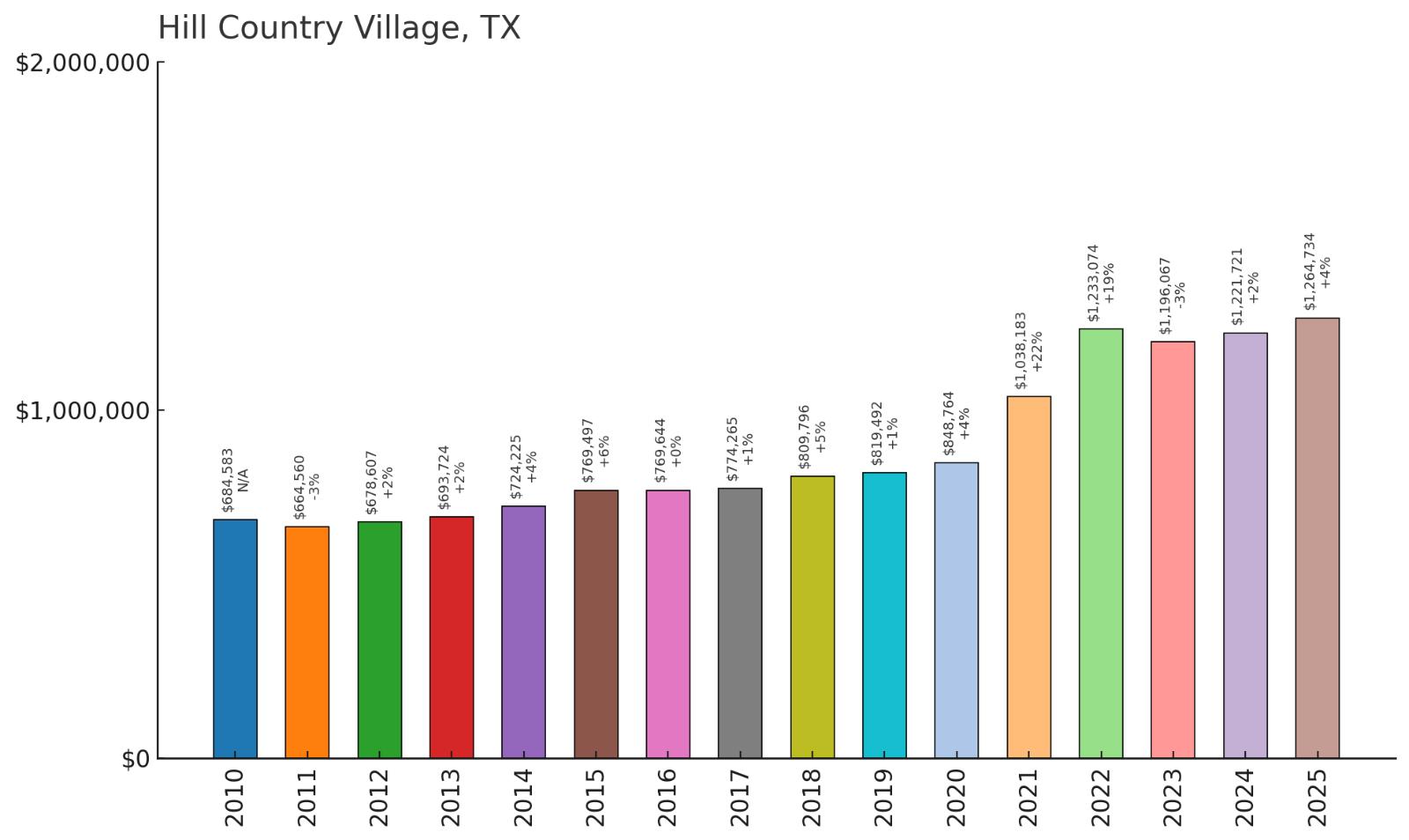
- 2010: $684,583
- 2011: $664,560
- 2012: $678,607
- 2013: $693,724
- 2014: $724,225
- 2015: $769,497
- 2016: $769,644
- 2017: $774,265
- 2018: $809,796
- 2019: $819,492
- 2020: $848,764
- 2021: $1,038,183
- 2022: $1,233,074
- 2023: $1,196,067
- 2024: $1,221,721
- 2025: $1,264,734
Hill Country Village demonstrates solid growth of 85% since 2010, with steady appreciation throughout most of the period and significant acceleration after 2020. The community reached above $1.26 million in 2025, reflecting its position as one of San Antonio’s most exclusive addresses. This Bexar County enclave benefits from large lots and estate-style living.
Why Hill Country Village?
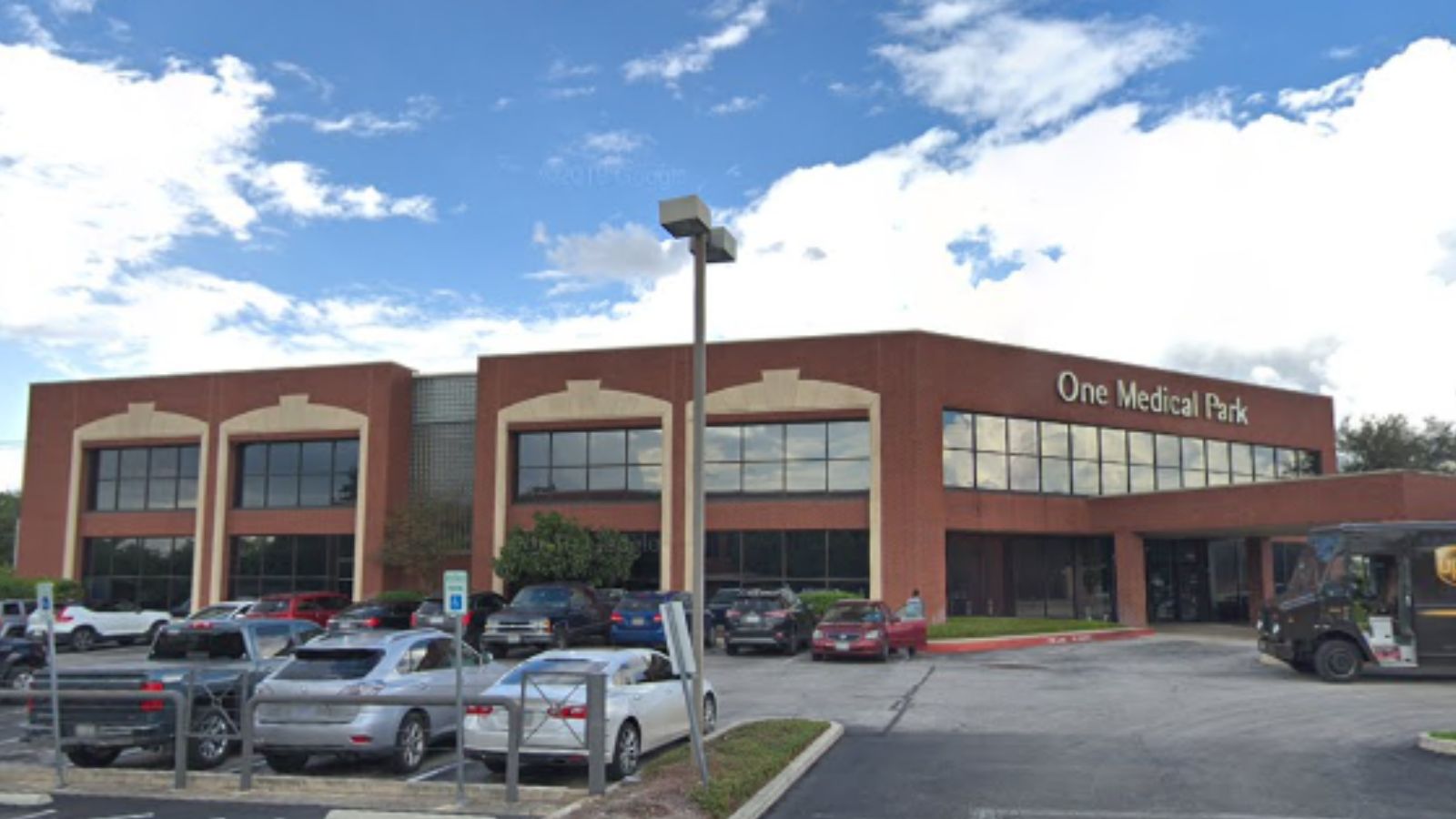
Why are people willing to pay so much to live here? What’s special about it?
Hill Country Village provides residents with estate-style homes on large lots in a gated community setting north of San Antonio. The community features extensive green space, privacy, and luxury amenities that appeal to business executives and affluent families. Many properties include custom homes with extensive landscaping and recreational facilities.
The area attracts successful professionals who value privacy and space while maintaining access to San Antonio’s employment centers. Excellent security and community services add to the appeal. The neighborhood’s reputation for exclusivity and quality helps sustain premium property values.
How Hill Country Village Rose to Prominence
Hill Country Village was developed in the 1970s as an exclusive enclave designed to attract San Antonio’s business and social elite. The community was planned with large lots, gated security, and architectural standards that established its upscale character from the beginning.
The area’s strategic location north of San Antonio, combined with excellent amenities and security, attracted successful business leaders and professionals. The community’s commitment to maintaining exclusivity through large lot requirements and architectural controls helped preserve its prestige and property values over time.
3 Interesting Tidbits
1. Gated Community – One of San Antonio’s first gated communities, providing security and exclusivity for residents.
2. Large Lots – Minimum lot sizes of 0.7 acres ensure privacy and space for estate-style homes.
3. Natural Setting – Preserves native Texas Hill Country vegetation and terrain within the development.
9. Southlake – 148% Home Price Increase Since 2010
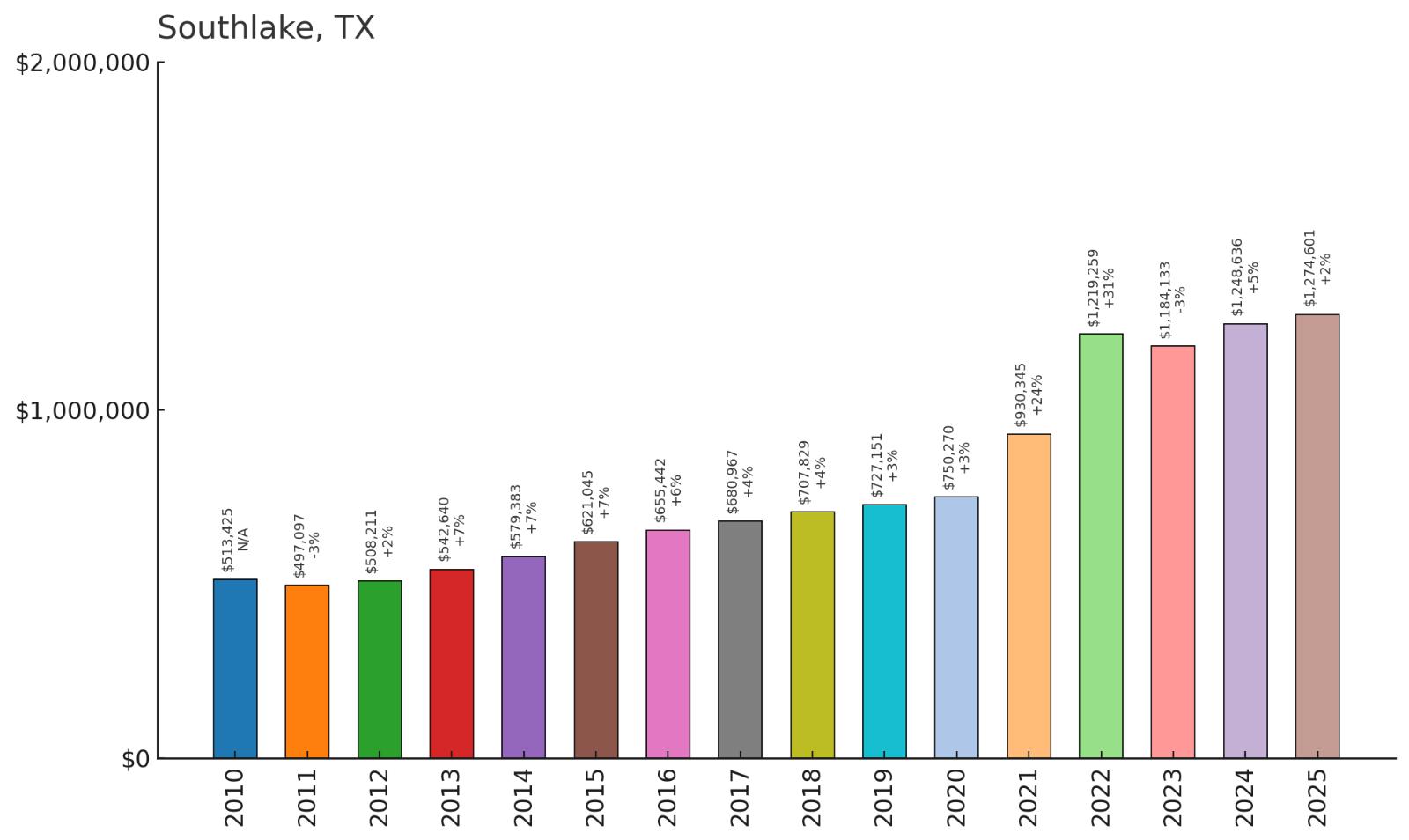
- 2010: $513,425
- 2011: $497,097
- 2012: $508,211
- 2013: $542,640
- 2014: $579,383
- 2015: $621,045
- 2016: $655,442
- 2017: $680,967
- 2018: $707,829
- 2019: $727,151
- 2020: $750,270
- 2021: $930,345
- 2022: $1,219,259
- 2023: $1,184,133
- 2024: $1,248,636
- 2025: $1,274,601
Southlake has achieved excellent growth of 148% since 2010, with steady appreciation throughout the period and explosive gains during 2021-2022. The community reached above $1.27 million in 2025, cementing its position as one of the Dallas-Fort Worth area’s premier addresses. This Tarrant County location benefits from excellent schools and upscale amenities.
Why Southlake?
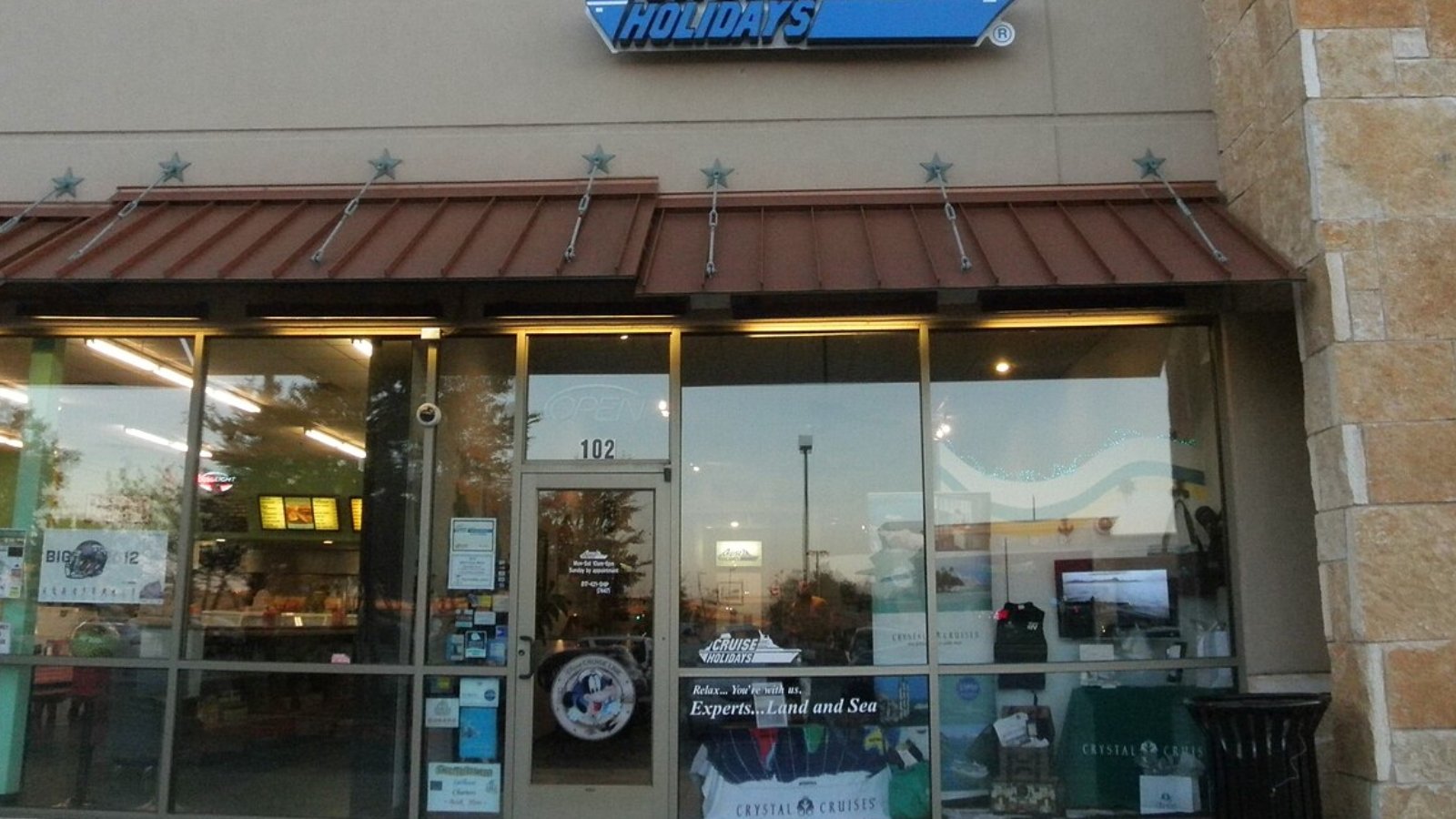
Why are people willing to pay so much to live here? What’s special about it?
Southlake provides residents with a premier Dallas-Fort Worth address featuring excellent schools, upscale shopping, and luxury amenities. The community offers beautiful neighborhoods, top-rated Carroll Independent School District schools, and the renowned Southlake Town Square. Families value the combination of educational excellence, safety, and convenience.
The area attracts corporate executives, professional athletes, and successful entrepreneurs who want the best in suburban living. Proximity to DFW Airport and major employment centers adds significant value. The community’s reputation for excellence in education and quality of life drives continued demand among affluent buyers.
How Southlake Rose to Prominence
Southlake was incorporated in 1956 and developed as an upscale suburb designed to attract affluent families to the growing Dallas-Fort Worth metroplex. The community’s strategic location between Dallas and Fort Worth, combined with excellent planning and amenities, established its reputation for quality.
The opening of DFW Airport nearby and the arrival of major corporations in the area drove demand for high-quality housing. Southlake’s commitment to excellent schools, beautiful neighborhoods, and upscale amenities attracted successful families. The development of Southlake Town Square as a premier shopping and entertainment destination further enhanced the community’s appeal.
3 Interesting Tidbits
1. Carroll ISD – Home to one of Texas’s most acclaimed school districts, consistently ranking at the top statewide.
2. Town Square – The upscale Southlake Town Square serves as a model for mixed-use development and community gathering.
3. Corporate Headquarters – Attracts business leaders from nearby corporate campuses including Sabre and Charles Schwab.
8. Lost Creek – 196% Home Price Increase Since 2010
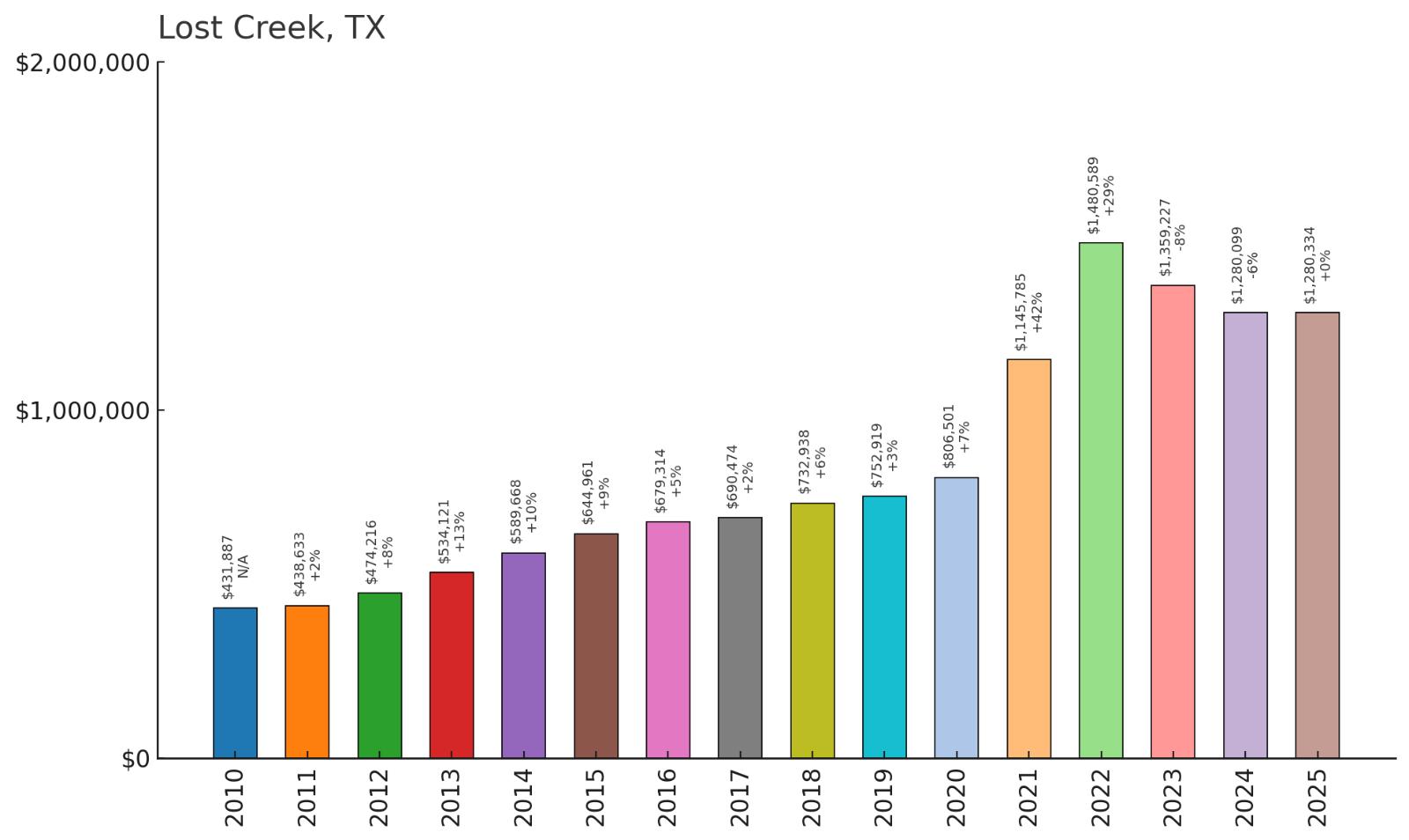
- 2010: $431,887
- 2011: $438,633
- 2012: $474,216
- 2013: $534,121
- 2014: $589,668
- 2015: $644,961
- 2016: $679,314
- 2017: $690,474
- 2018: $732,938
- 2019: $752,919
- 2020: $806,501
- 2021: $1,145,785
- 2022: $1,480,589
- 2023: $1,359,227
- 2024: $1,280,099
- 2025: $1,280,334
Lost Creek has delivered exceptional growth of 196% since 2010, with steady appreciation throughout the period and dramatic acceleration during 2021-2022. The community peaked near $1.48 million in 2022 before moderating to current levels around $1.28 million. This Travis County location benefits from Austin’s tech boom and Hill Country appeal.
Why Lost Creek?
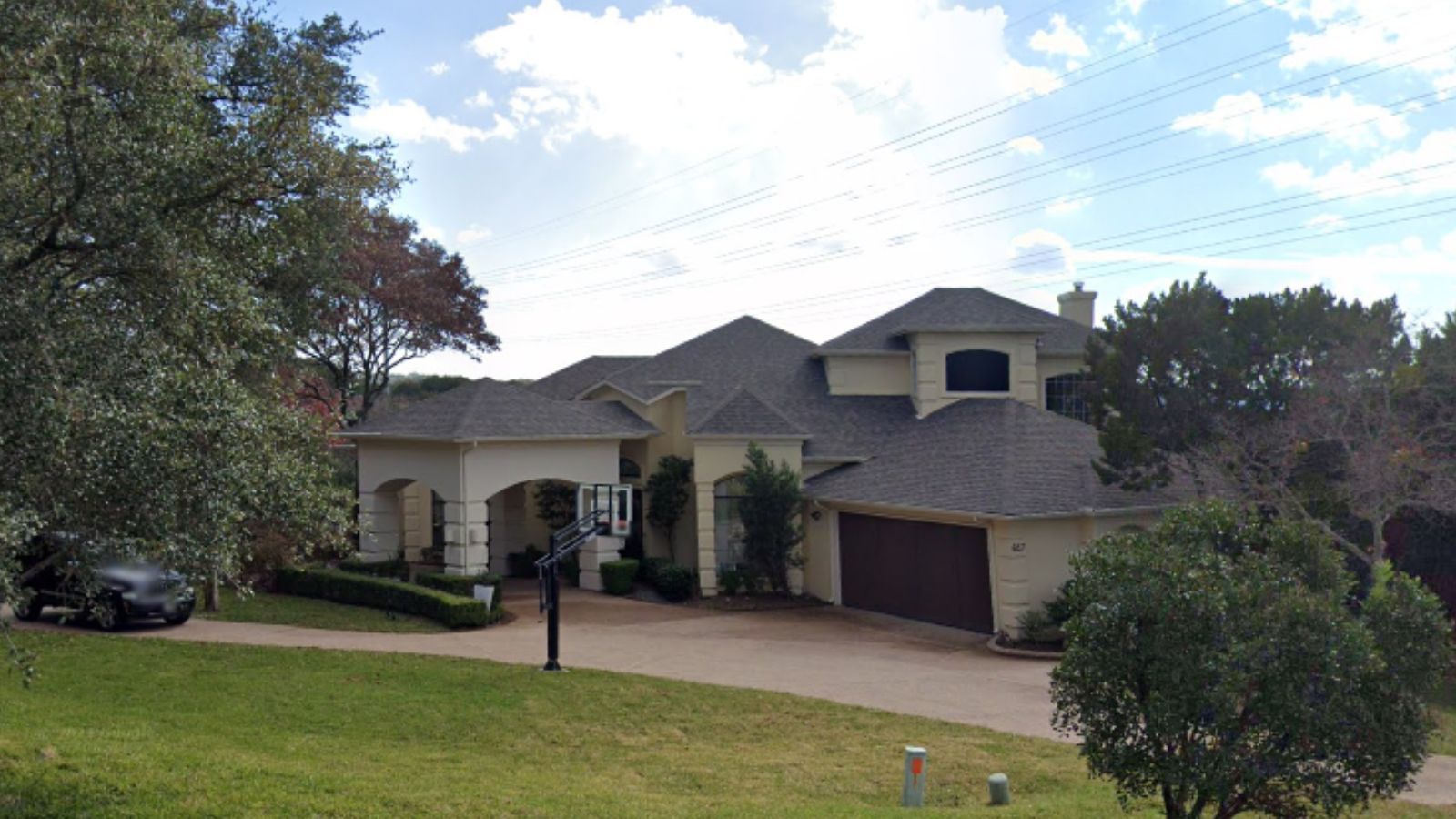
Why are people willing to pay so much to live here? What’s special about it?
Lost Creek offers residents luxury homes in a gated community setting with golf course and Hill Country views. The community features upscale amenities, custom homes, and proximity to Austin’s tech corridors. Families value the combination of luxury amenities, excellent schools, and convenient access to downtown Austin.
The area attracts technology executives and successful professionals who want resort-style living with urban accessibility. The golf course and club facilities provide recreational opportunities and social connections. The community’s reputation for luxury and exclusivity helps sustain premium property values.
How Lost Creek Rose to Prominence
Lost Creek was developed in the 1980s as a luxury golf course community designed to attract affluent families to Austin’s growing western suburbs. The development featured a championship golf course, upscale amenities, and custom homes that established its reputation for exclusivity.
Austin’s emergence as a technology hub drove demand for high-quality housing among well-compensated professionals. The community’s golf course and club amenities, combined with its proximity to major employers, made it attractive to executives and entrepreneurs. The area’s commitment to maintaining luxury standards helped preserve its prestigious reputation.
3 Interesting Tidbits
1. Golf Community – Built around a championship golf course that serves as the community’s centerpiece and primary amenity.
2. Tech Executive Haven – Popular among Austin’s technology industry leaders and successful entrepreneurs.
3. Hill Country Setting – Takes advantage of Austin’s western hills to provide scenic views and natural beauty.
7. Bartonville – 182% Home Price Increase Since 2010
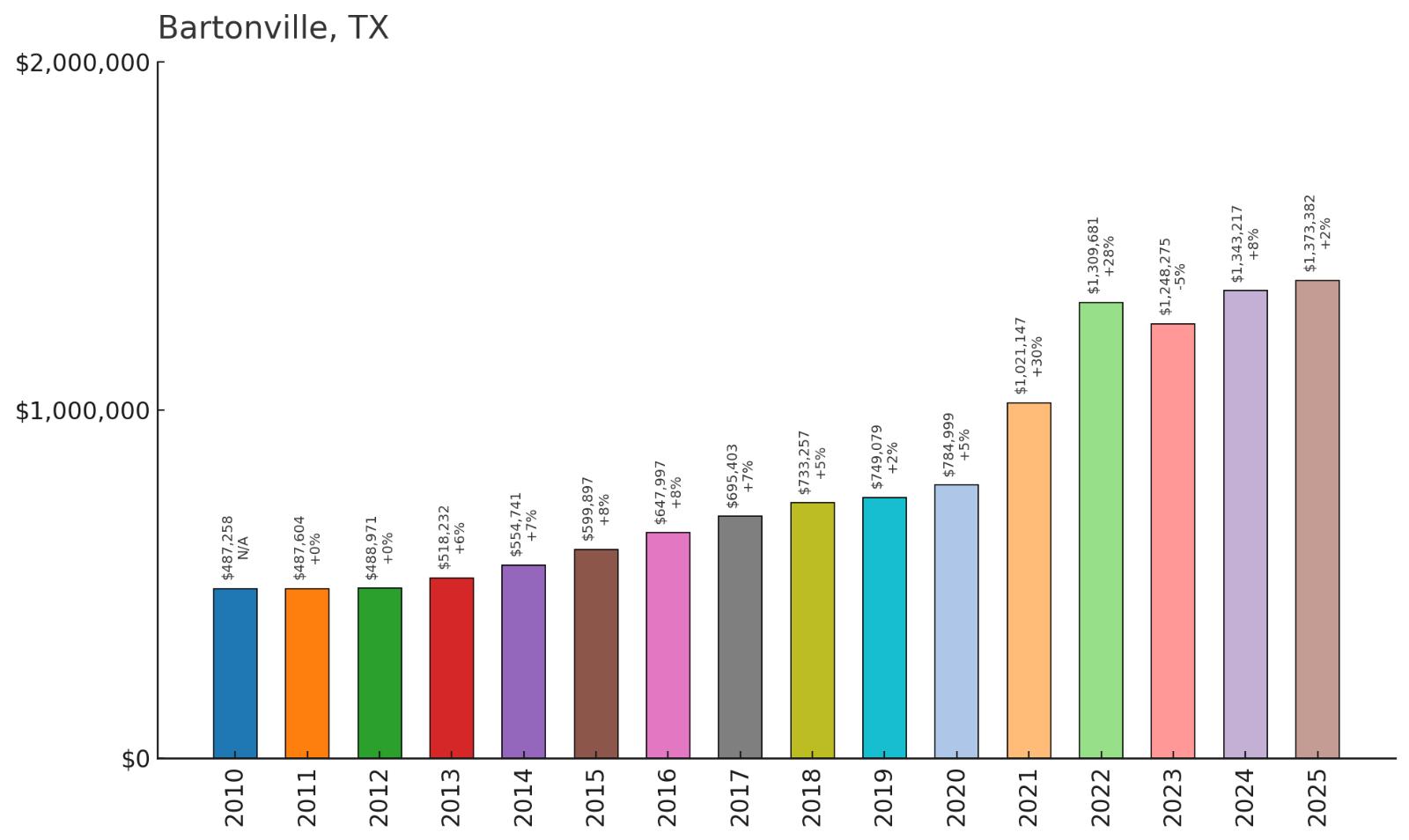
- 2010: $487,258
- 2011: $487,604
- 2012: $488,971
- 2013: $518,232
- 2014: $554,741
- 2015: $599,897
- 2016: $647,997
- 2017: $695,403
- 2018: $733,257
- 2019: $749,079
- 2020: $784,999
- 2021: $1,021,147
- 2022: $1,309,681
- 2023: $1,248,275
- 2024: $1,343,217
- 2025: $1,373,382
Bartonville has achieved impressive growth of 182% since 2010, with consistent appreciation throughout the period and explosive gains during 2021-2022. The community reached above $1.37 million in 2025, reflecting its position as a premier Dallas-Fort Worth suburb. This Denton County location benefits from rural character and urban proximity.
Why Bartonville?
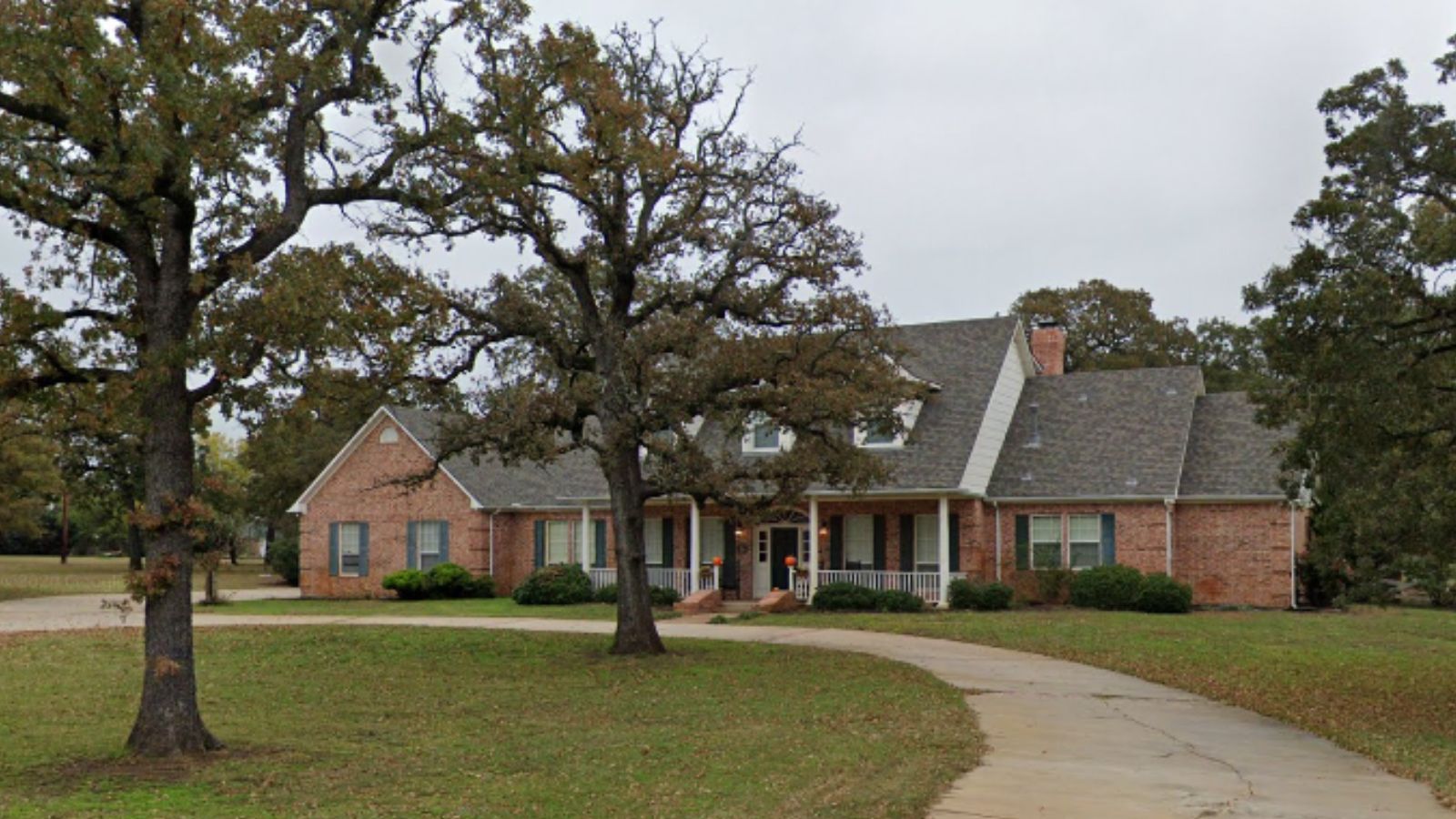
Why are people willing to pay so much to live here? What’s special about it?
Bartonville provides residents with large estate lots and rural luxury while maintaining excellent access to Dallas-Fort Worth employment centers. The community features horse properties, custom homes, and minimal commercial development that preserves its countryside character. Families value the combination of space, privacy, and convenient connectivity.
The area attracts affluent professionals who want equestrian facilities and rural amenities without sacrificing urban access. Many properties include horse facilities, extensive landscaping, and custom architectural features. The community’s commitment to preserving its rural character helps sustain premium property values.
How Bartonville Rose to Prominence
Bartonville was incorporated in 1973 as residents sought to maintain local control over development while accommodating growth pressure from the expanding Dallas-Fort Worth metroplex. The community was designed to preserve its rural character while providing luxury housing for affluent families.
The area’s strategic location between Dallas and Fort Worth, combined with large lots and excellent schools, attracted business executives and professionals. The community’s commitment to maintaining rural character through large lot requirements and limited commercial development helped establish its reputation for exclusivity and country living.
3 Interesting Tidbits
1. Equestrian Heritage – Many properties feature horse facilities and trails, maintaining the area’s agricultural traditions.
2. Rural Zoning – Large minimum lot sizes and agricultural zoning preserve the community’s countryside character.
3. Country Club – The Cowboys Golf Club provides residents with recreational facilities and social amenities.
6. West Lake Hills – 193% Home Price Increase Since 2010
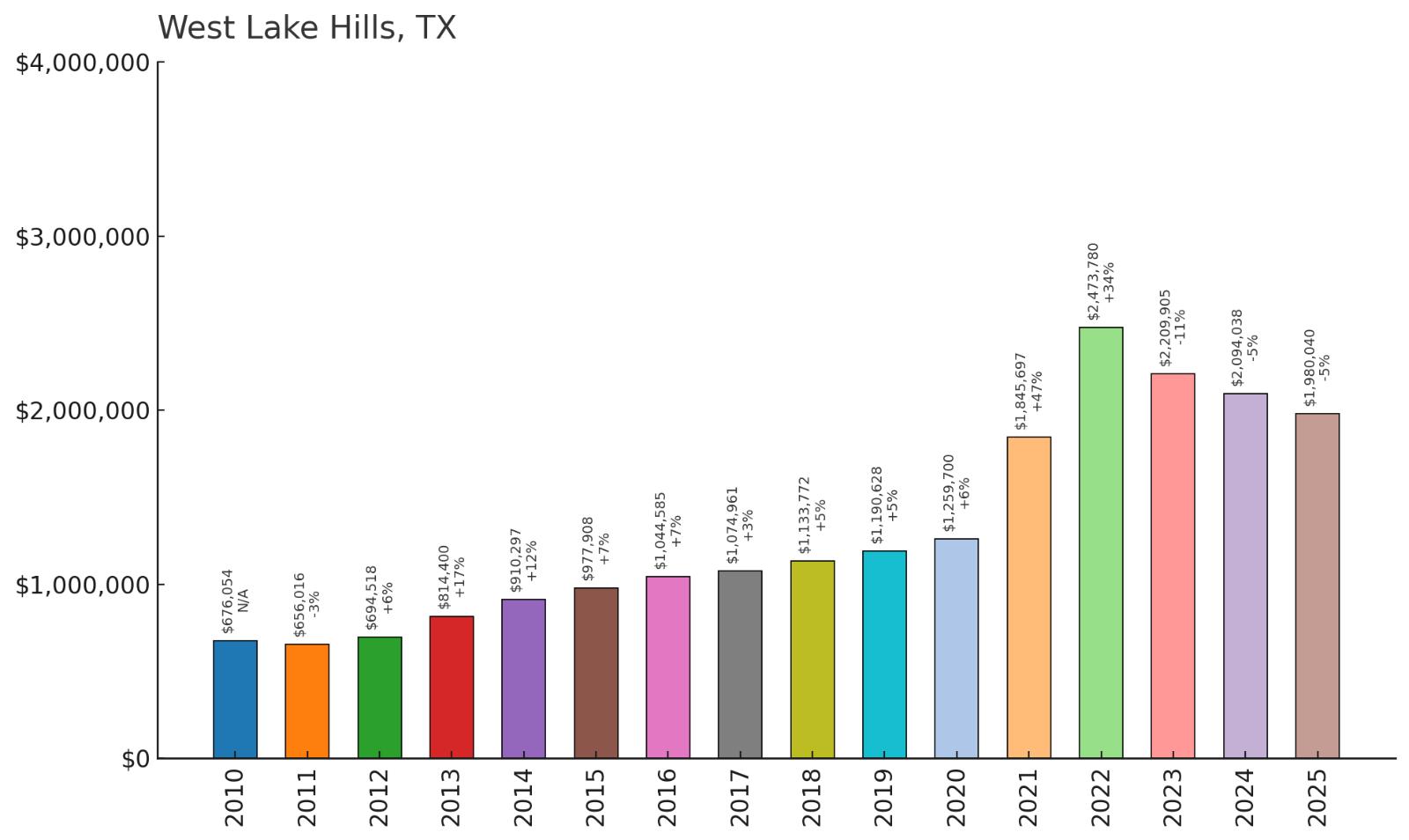
- 2010: $676,054
- 2011: $656,016
- 2012: $694,518
- 2013: $814,400
- 2014: $910,297
- 2015: $977,908
- 2016: $1,044,585
- 2017: $1,074,961
- 2018: $1,133,772
- 2019: $1,190,628
- 2020: $1,259,700
- 2021: $1,845,697
- 2022: $2,473,780
- 2023: $2,209,905
- 2024: $2,094,038
- 2025: $1,980,040
West Lake Hills has delivered outstanding growth of 193% since 2010, with explosive gains during 2021-2022 that pushed values above $2.47 million. The community has cooled from its peak but remains near $1.98 million in 2025. This Travis County location represents one of Austin’s most prestigious addresses with Hill Country views and lakefront access.
Why West Lake Hills?
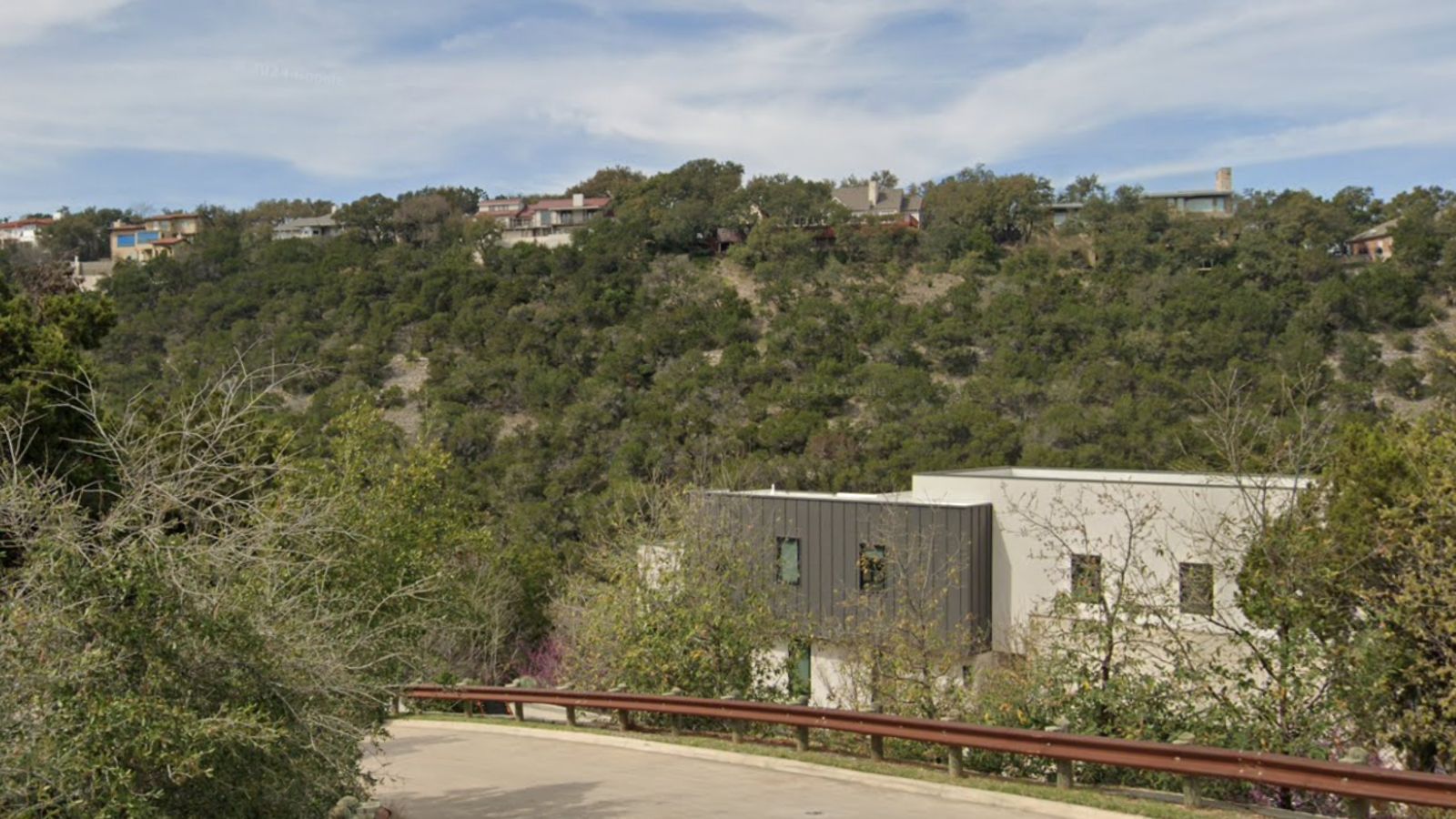
Why are people willing to pay so much to live here? What’s special about it?
West Lake Hills offers residents some of Austin’s most prestigious addresses with scenic Hill Country views and proximity to Lake Austin. The community features luxury homes, excellent schools, and convenient access to downtown Austin and major employment centers. Many properties offer stunning views and custom architectural designs.
The area attracts technology executives, entrepreneurs, and established professionals who want luxury living with natural beauty. The combination of scenic views, excellent schools, and urban convenience creates strong demand. The community’s reputation for exclusivity and natural beauty helps sustain premium property values.
How West Lake Hills Rose to Prominence
West Lake Hills was incorporated in 1953 as Austin began expanding westward into the Hill Country. The community was developed to take advantage of scenic views and natural beauty while providing upscale housing for Austin’s growing professional class.
Austin’s emergence as a technology hub and the growth of major employers drove demand for luxury housing in desirable locations like West Lake Hills. The area’s scenic beauty, excellent schools, and proximity to downtown Austin made it attractive to successful professionals and entrepreneurs. The community’s commitment to preserving its natural character while accommodating luxury development sustained its appeal.
3 Interesting Tidbits
1. Hill Country Views – Many properties offer stunning views of the Texas Hill Country and downtown Austin skyline.
2. Lake Austin Access – Proximity to Lake Austin provides recreational opportunities and adds to property values.
3. Eanes ISD – Served by the highly-rated Eanes Independent School District, attracting families focused on education.
5. Rollingwood – 243% Home Price Increase Since 2010
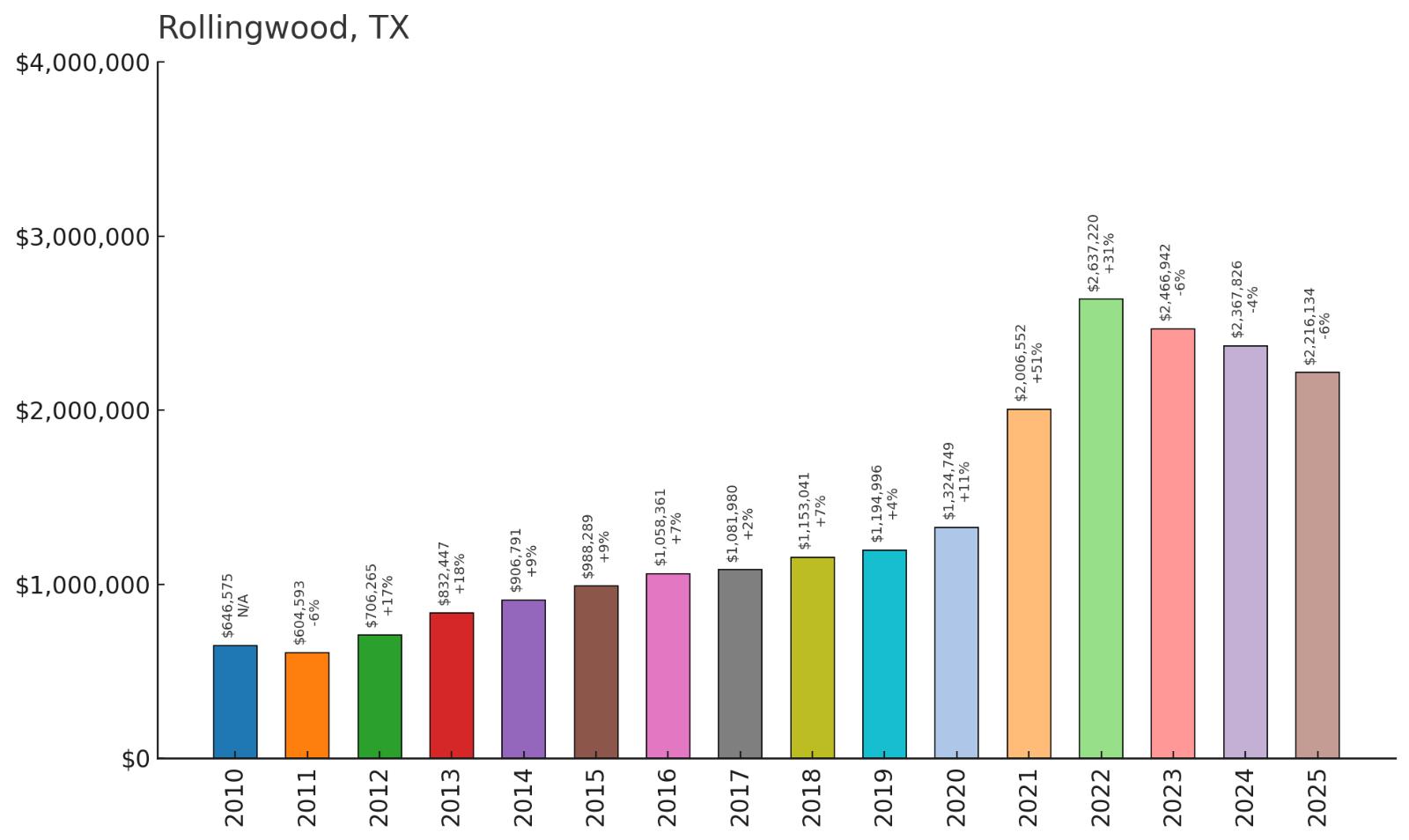
- 2010: $646,575
- 2011: $604,593
- 2012: $706,265
- 2013: $832,447
- 2014: $906,791
- 2015: $988,289
- 2016: $1,058,361
- 2017: $1,081,980
- 2018: $1,153,041
- 2019: $1,194,996
- 2020: $1,324,749
- 2021: $2,006,552
- 2022: $2,637,220
- 2023: $2,466,942
- 2024: $2,367,826
- 2025: $2,216,134
Rollingwood has achieved exceptional growth of 243% since 2010, with explosive gains during 2021-2022 that pushed values above $2.63 million. The community has moderated from its peak but remains above $2.2 million in 2025. This tiny Travis County enclave represents one of Austin’s most exclusive addresses.
Why Rollingwood?
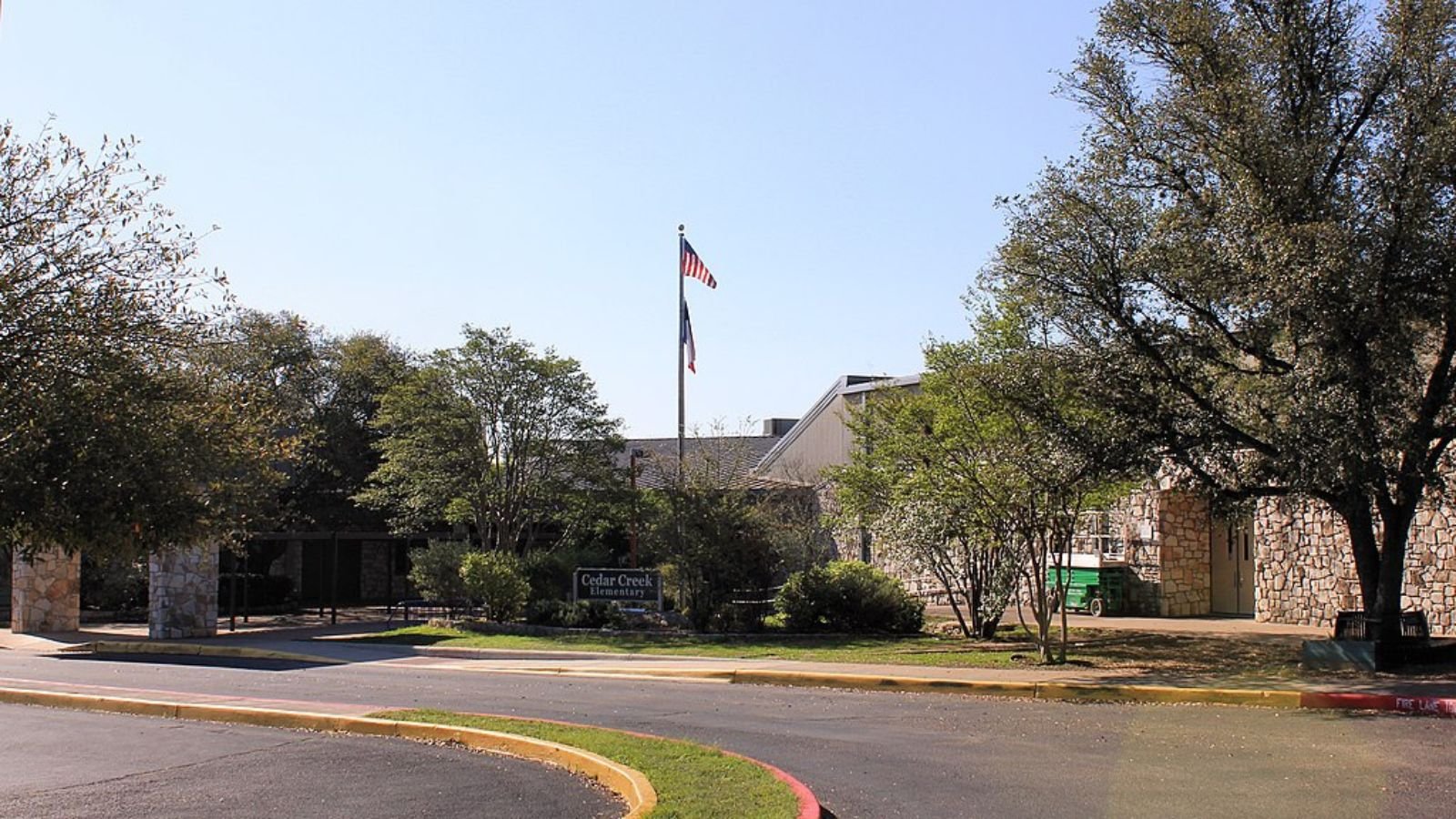
Why are people willing to pay so much to live here? What’s special about it?
Rollingwood provides residents with an exclusive address in a tiny city completely surrounded by Austin, offering privacy and prestige with urban convenience. The community features tree-lined streets, custom homes, and excellent schools. The small size creates an intimate neighborhood atmosphere while maintaining access to Austin’s amenities.
The area attracts technology executives and successful professionals who value exclusivity and privacy. Limited housing inventory and strict development controls help maintain the community’s character. The neighborhood’s reputation for luxury and its strategic location drive premium property values.
How Rollingwood Rose to Prominence
Rollingwood was incorporated in 1955 as a small residential enclave seeking to maintain local control while surrounded by Austin’s growth. The community was designed with high standards and architectural controls that established its upscale character from the beginning.
Austin’s growth as a technology center and the influx of high-income professionals drove demand for exclusive housing in prime locations. Rollingwood’s small size, excellent schools, and central location made it attractive to affluent buyers. The community’s commitment to maintaining exclusivity through strict controls helped preserve its prestigious reputation.
3 Interesting Tidbits
1. Tiny City – At just 0.3 square miles, Rollingwood is one of the smallest incorporated cities in Texas.
2. Surrounded by Austin – Completely encircled by the City of Austin, providing urban amenities with small-town governance.
3. Zilker Proximity – Close to Zilker Park and downtown Austin, offering recreation and cultural access.
4. University Park – 159% Home Price Increase Since 2010

- 2010: $893,539
- 2011: $843,539
- 2012: $880,525
- 2013: $970,066
- 2014: $1,071,620
- 2015: $1,165,085
- 2016: $1,225,416
- 2017: $1,247,671
- 2018: $1,275,405
- 2019: $1,285,415
- 2020: $1,285,698
- 2021: $1,557,144
- 2022: $2,007,769
- 2023: $2,003,615
- 2024: $2,225,817
- 2025: $2,311,886
University Park has achieved excellent growth of 159% since 2010, with steady appreciation throughout most of the period and significant acceleration after 2020. The community reached above $2.3 million in 2025, reflecting its position as one of Dallas’s most prestigious addresses. This Dallas County location benefits from proximity to SMU and Highland Park Village.
Why University Park?
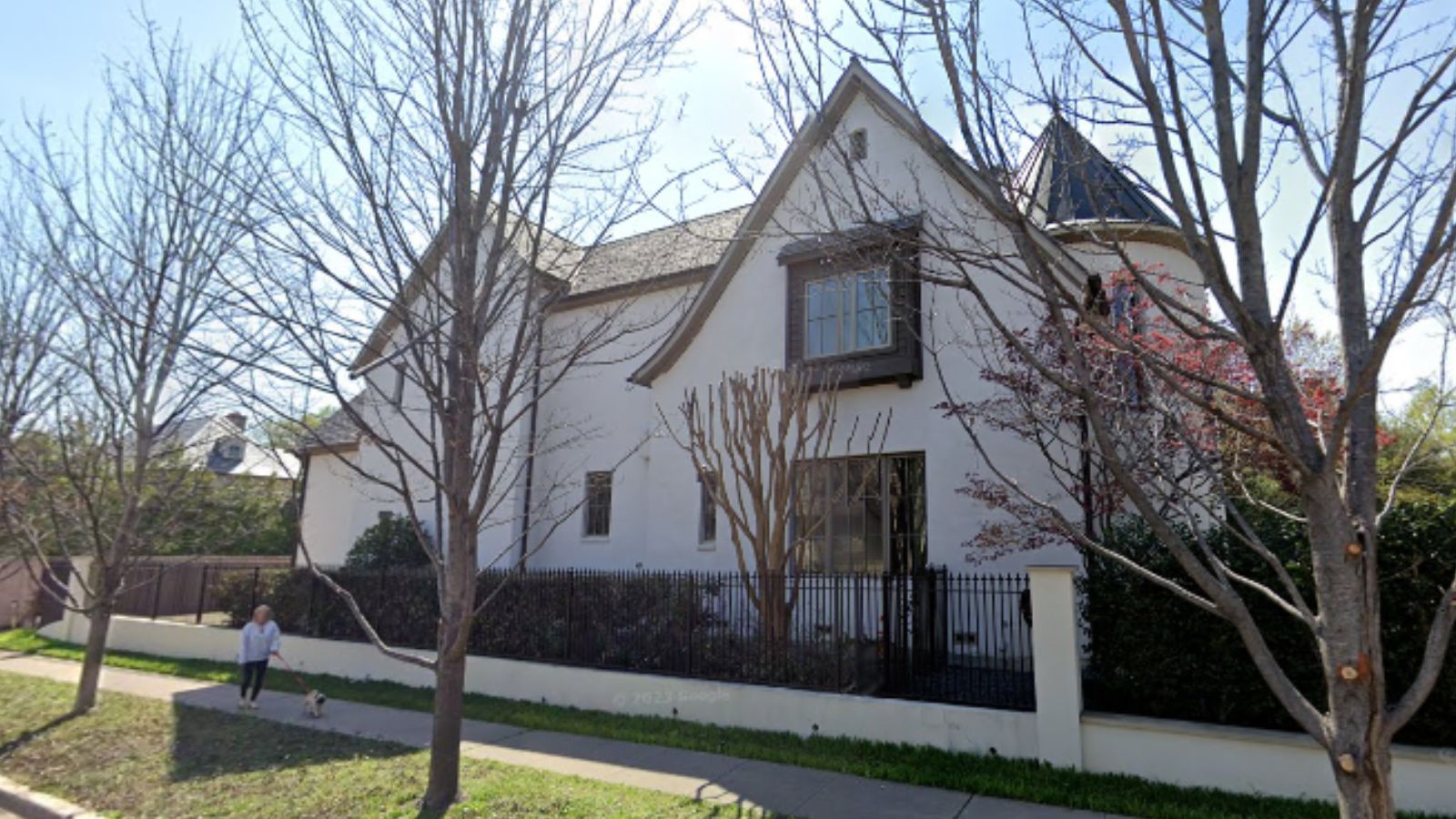
Why are people willing to pay so much to live here? What’s special about it?
University Park offers residents one of Dallas’s most prestigious addresses with tree-lined streets, historic architecture, and proximity to Southern Methodist University. The community features excellent Highland Park ISD schools, upscale shopping at Highland Park Village, and easy access to downtown Dallas. Many homes showcase classic architecture and mature landscaping.
The area attracts business executives, professionals, and families who value educational excellence and cultural amenities. The combination of academic atmosphere, upscale shopping, and historic character creates strong appeal. The neighborhood’s reputation for quality and its central location help sustain premium property values.
How University Park Rose to Prominence
University Park was developed in the early 1900s around Southern Methodist University, which was established in 1911. The community was planned as an upscale residential area designed to attract faculty, professionals, and affluent families to the growing Dallas area. The presence of SMU provided cultural and educational amenities that enhanced the area’s appeal.
The development of Highland Park Village in the 1930s as one of America’s first shopping centers further established the area’s reputation for luxury and convenience. Over the decades, University Park maintained its prestigious character through careful planning and commitment to quality. The community’s excellent schools and central location continued to attract successive generations of affluent residents.
3 Interesting Tidbits
1. SMU Campus – Home to Southern Methodist University, providing cultural events, athletic programs, and academic atmosphere.
2. Highland Park Village – Adjacent to one of America’s first shopping centers, featuring luxury retailers and dining.
3. Park Cities – Part of the exclusive “Park Cities” area, consistently ranked among Dallas’s most desirable neighborhoods.
3. Westover Hills – 143% Home Price Increase Since 2010

- 2010: $1,039,607
- 2011: $1,085,001
- 2012: $1,252,663
- 2013: $1,369,040
- 2014: $1,388,103
- 2015: $1,439,985
- 2016: $1,385,999
- 2017: $1,479,825
- 2018: $1,505,931
- 2019: $1,482,736
- 2020: $1,416,428
- 2021: $1,769,174
- 2022: $2,124,962
- 2023: $2,031,393
- 2024: $2,395,362
- 2025: $2,529,997
Westover Hills has achieved strong growth of 143% since 2010, with values starting above $1 million and continuing to appreciate consistently. The community experienced significant acceleration in recent years, reaching above $2.5 million in 2025. This Tarrant County location represents one of Fort Worth’s most exclusive enclaves.
Why Westover Hills?
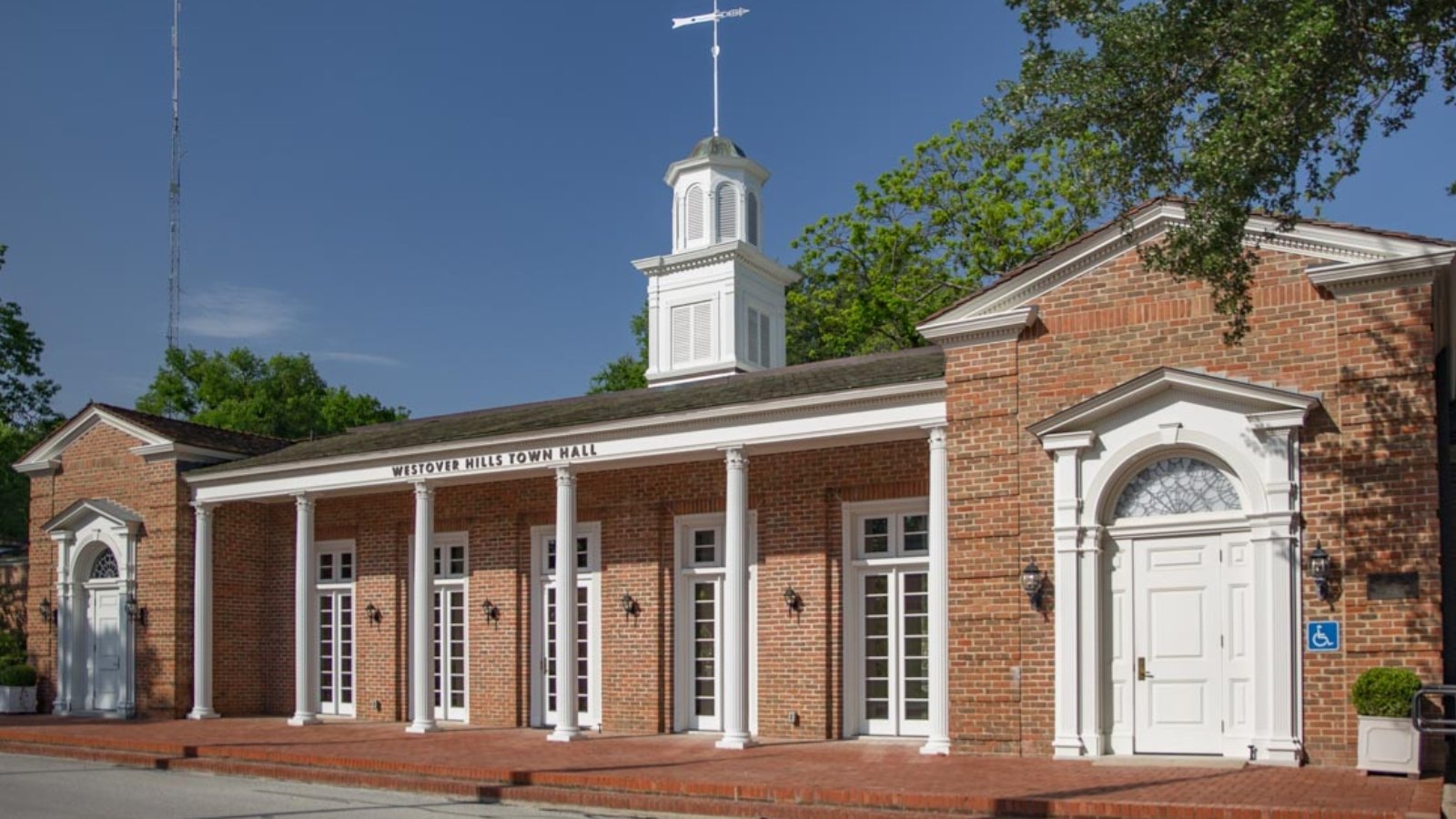
Why are people willing to pay so much to live here? What’s special about it?
Westover Hills provides residents with Fort Worth’s most prestigious address featuring sprawling estates on large wooded lots. The community offers privacy, luxury, and proximity to downtown Fort Worth’s cultural district and business centers. Many properties feature custom architecture, extensive landscaping, and recreational amenities like pools and tennis courts.
The area attracts oil executives, business leaders, and established Fort Worth families who value tradition and exclusivity. The neighborhood’s mature trees, winding streets, and large lots create a park-like atmosphere. Strong architectural standards and community involvement help maintain the area’s prestigious character and property values.
How Westover Hills Rose to Prominence
Westover Hills was developed in the 1920s as Fort Worth’s premier residential district, designed to attract the city’s oil barons and business elite. The community was carefully planned with large lots, architectural standards, and restrictions that established its exclusive character from the beginning.
The area’s proximity to downtown Fort Worth and the cultural district made it attractive to successful business leaders and professionals. Fort Worth’s growth as an oil and cattle center brought wealth that supported luxury housing development. The community’s commitment to maintaining high standards through deed restrictions and architectural controls helped preserve its exclusivity over time.
3 Interesting Tidbits
1. Oil Heritage – Originally developed to attract Fort Worth’s oil industry leaders and cattle barons in the 1920s.
2. River Crest Country Club – Home to one of Texas’s most exclusive country clubs, designed by A.W. Tillinghast.
3. Architectural Variety – Features a diverse collection of historic homes representing various architectural styles from the early 20th century.
2. Highland Park – 172% Home Price Increase Since 2010
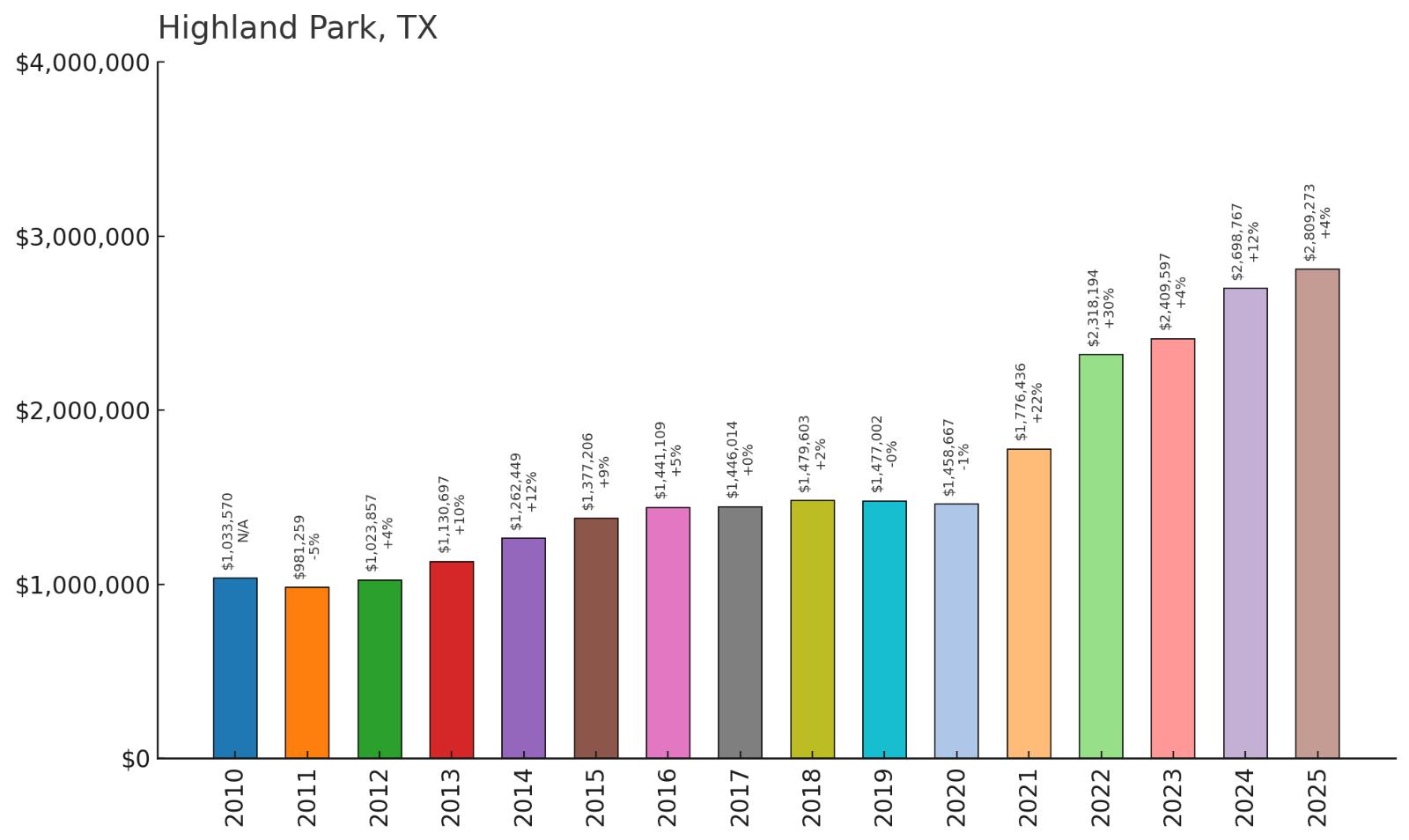
- 2010: $1,033,570
- 2011: $981,259
- 2012: $1,023,857
- 2013: $1,130,697
- 2014: $1,262,449
- 2015: $1,377,206
- 2016: $1,441,109
- 2017: $1,446,014
- 2018: $1,479,603
- 2019: $1,477,002
- 2020: $1,458,667
- 2021: $1,776,436
- 2022: $2,318,194
- 2023: $2,409,597
- 2024: $2,698,767
- 2025: $2,809,273
Highland Park has delivered outstanding growth of 172% since 2010, with steady appreciation throughout most of the period and explosive gains in recent years. The community reached above $2.8 million in 2025, representing the second-highest values in Texas. This Dallas enclave remains the ultimate symbol of Texas luxury and prestige.
Why Highland Park?
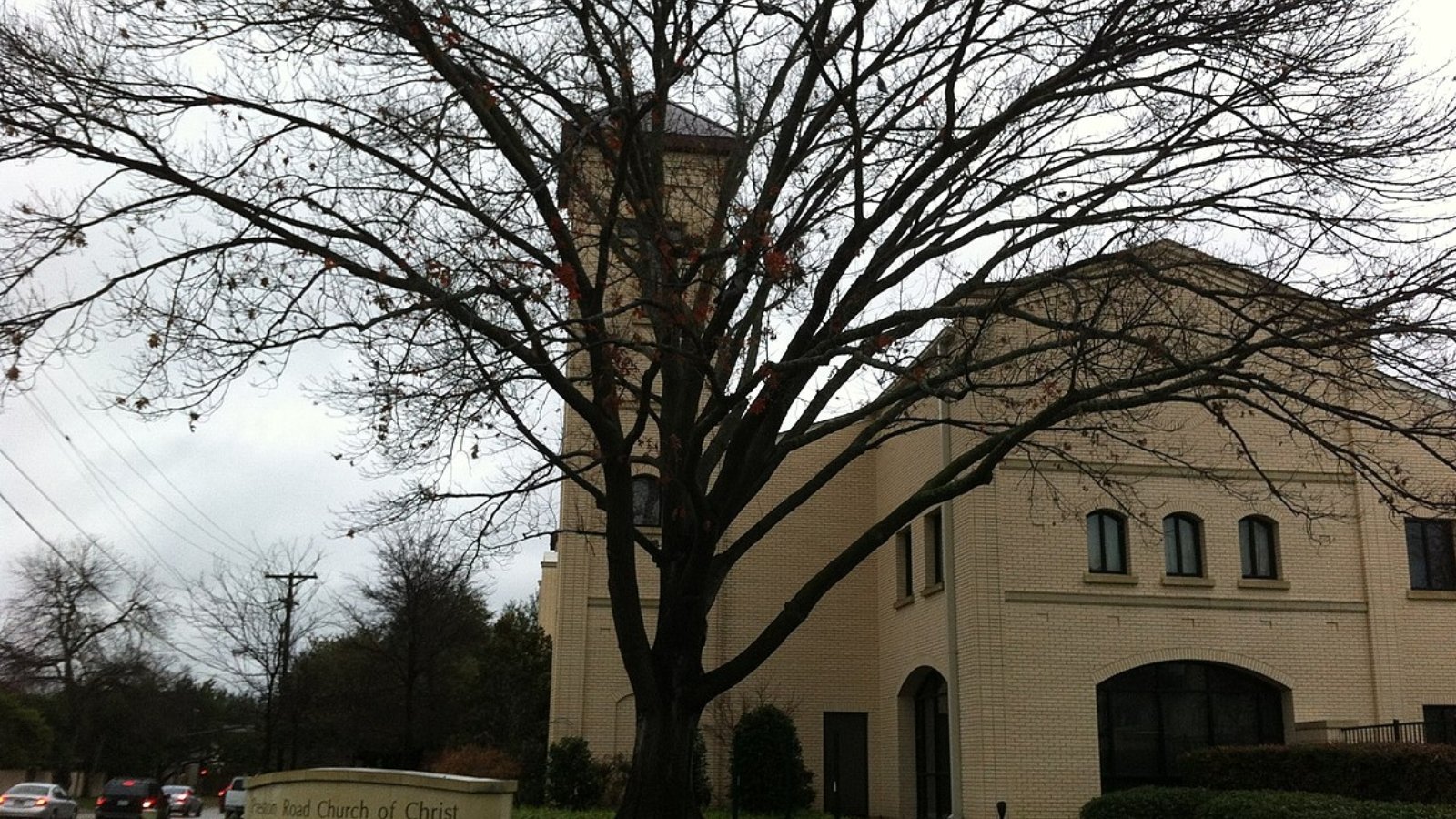
Why are people willing to pay so much to live here? What’s special about it?
Highland Park offers residents the most prestigious address in Dallas with tree-lined boulevards, magnificent estates, and world-class amenities. The community features Highland Park Village shopping, excellent Highland Park ISD schools, and proximity to downtown Dallas. Many properties showcase historic architecture, mature landscaping, and luxury amenities.
The area attracts Dallas’s business elite, including oil executives, real estate developers, and financial leaders who value tradition and exclusivity. The combination of educational excellence, cultural amenities, and historic character creates unmatched appeal. The neighborhood’s reputation as Dallas’s premier address helps sustain the highest property values in the region.
How Highland Park Rose to Prominence
Highland Park was developed in the early 1900s by real estate developers who envisioned an exclusive residential community north of downtown Dallas. The area was planned with wide boulevards, parks, and architectural standards that established its upscale character. Early marketing targeted wealthy Dallas families seeking quality housing outside the urban core.
The development of Highland Park Village in the 1930s and the establishment of excellent schools helped cement the area’s reputation for luxury and convenience. Dallas’s growth as a business and financial center brought wealth that supported continued investment in Highland Park properties. The community’s commitment to maintaining exclusivity through zoning and architectural controls preserved its prestigious status.
3 Interesting Tidbits
1. Beverly Hills Connection – Partially designed by Wilbur David Cook, who also planned much of Beverly Hills, California.
2. Highland Park Village – Home to the first shopping center in America, opened in 1931 and still operating today.
3. School District – Highland Park ISD consistently ranks as one of the top school districts in Texas and the nation.
1. Westlake – 136% Home Price Increase Since 2010
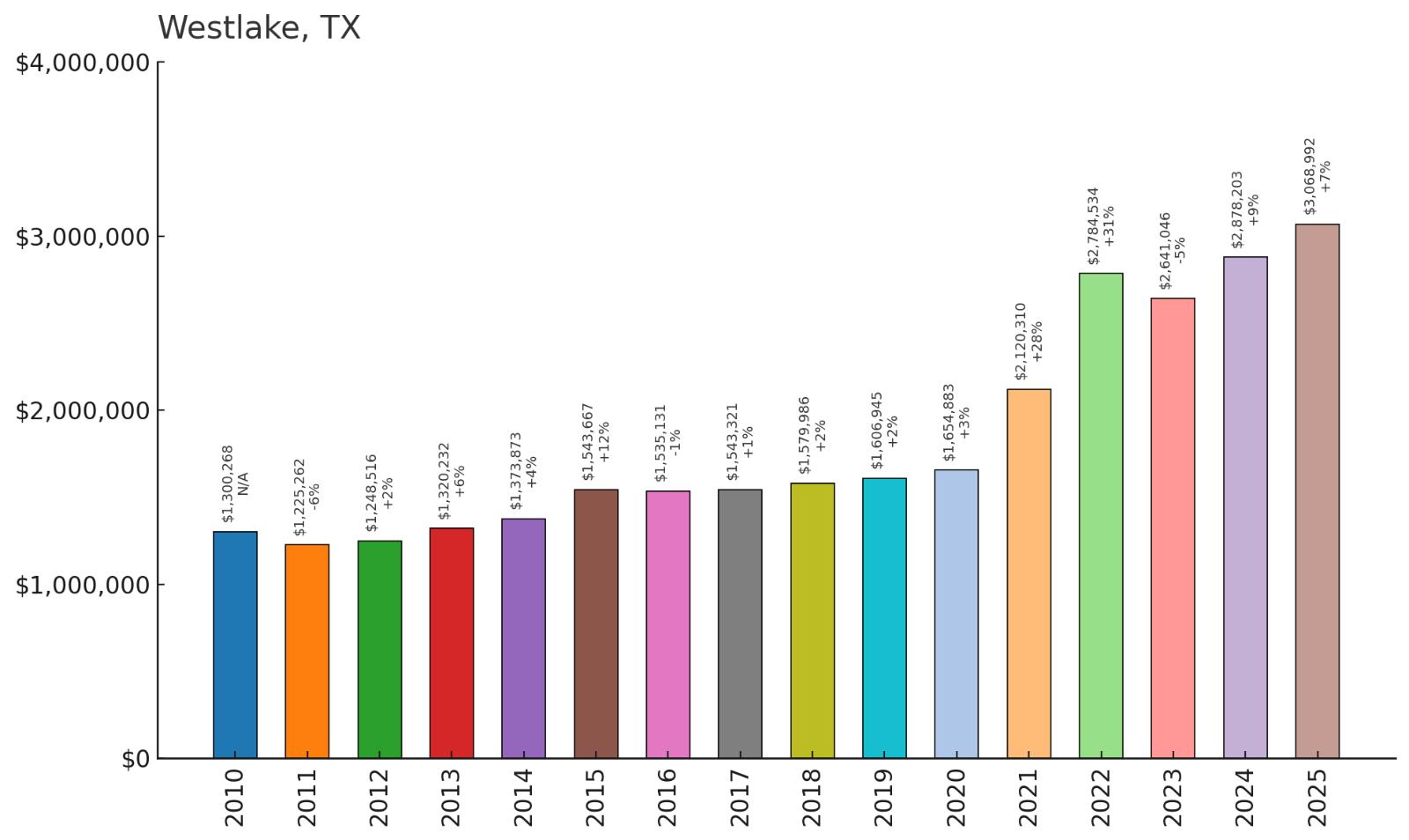
- 2010: $1,300,268
- 2011: $1,225,262
- 2012: $1,248,516
- 2013: $1,320,232
- 2014: $1,373,873
- 2015: $1,543,667
- 2016: $1,535,131
- 2017: $1,543,321
- 2018: $1,579,986
- 2019: $1,606,945
- 2020: $1,654,883
- 2021: $2,120,310
- 2022: $2,784,534
- 2023: $2,641,046
- 2024: $2,878,203
- 2025: $3,068,992
Westlake tops our list with exceptional growth of 136% since 2010, reaching above $3.06 million in 2025 to claim the title of Texas’s most expensive community. The town experienced dramatic acceleration during 2021-2022, adding over $1 million in median value across those two years. This Tarrant-Denton County location represents the pinnacle of Texas luxury living.
Why Westlake?
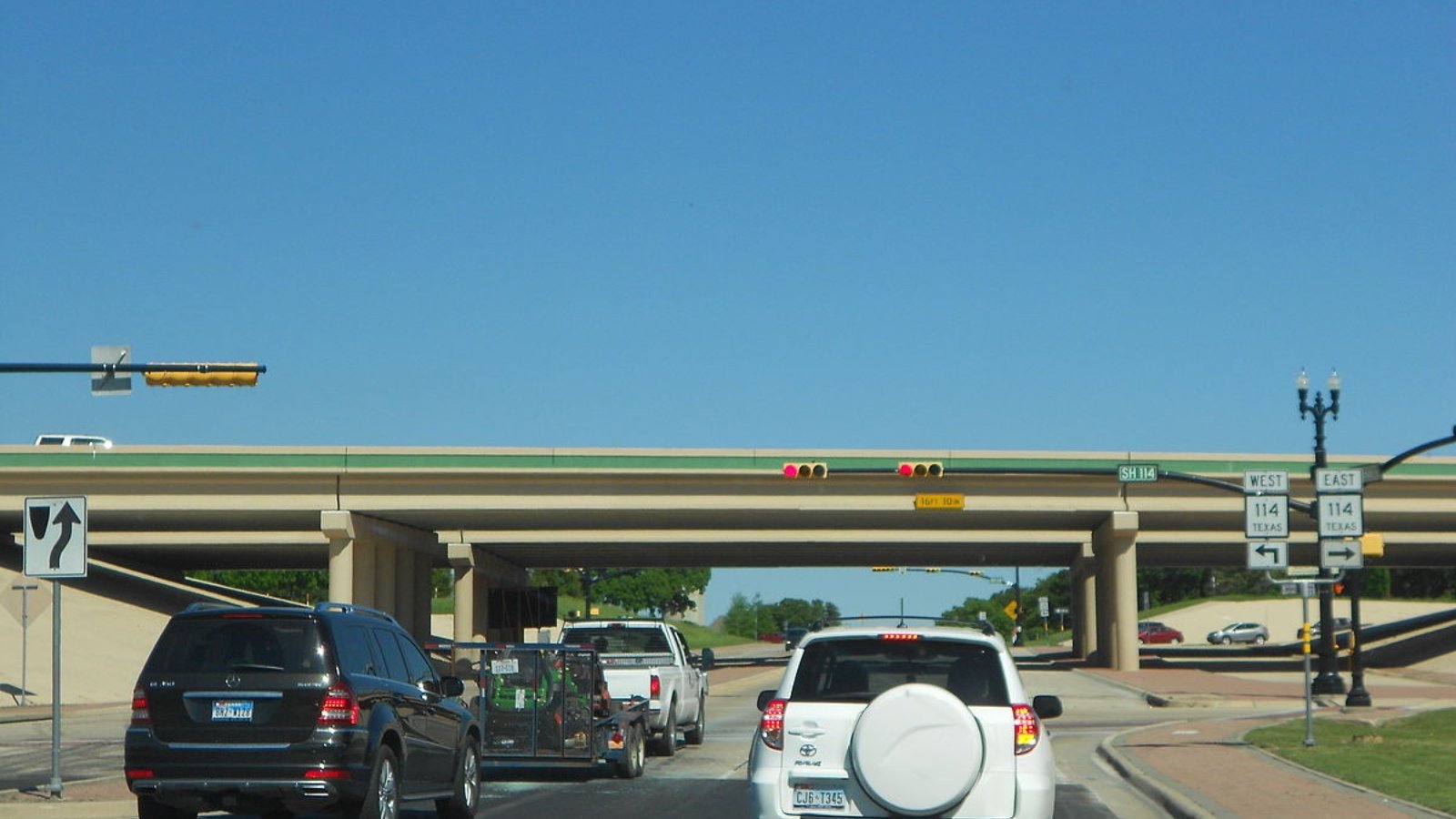
Why are people willing to pay so much to live here? What’s special about it?
Westlake provides residents with the ultimate in Texas luxury living, featuring gated estates, championship golf courses, and world-class amenities. The community attracts corporate executives, entrepreneurs, and affluent families seeking the finest in suburban living. Properties include custom mansions, resort-style amenities, and access to exclusive clubs like Vaquero.
The area benefits from proximity to DFW Airport, excellent Carroll ISD schools, and major corporate headquarters including Charles Schwab and Fidelity Investments. The community’s reputation for luxury and its limited inventory of ultra-premium properties help sustain the highest values in Texas. Strategic location between Dallas and Fort Worth provides access to both business centers.
How Westlake Rose to Prominence
Westlake began as the Circle T Ranch, owned by oil magnate H.L. Hunt’s family for decades. In the 1950s and 1960s, portions of the ranch were developed into an exclusive residential community designed to attract Dallas-Fort Worth’s business elite. The area’s natural beauty and strategic location made it attractive for luxury development.
The opening of DFW Airport nearby and the arrival of major corporations in the 1970s and 1980s drove demand for premium housing. Westlake’s development as a master-planned community with golf courses, gated neighborhoods, and luxury amenities attracted successful business leaders. The community’s commitment to maintaining the highest standards helped establish its reputation as Texas’s premier address.
3 Interesting Tidbits
1. Corporate Campus – Home to major corporate headquarters including Charles Schwab’s $100 million campus with 1,200+ employees.
2. Vaquero Club – Features one of Texas’s most exclusive golf and country clubs on 525 acres of former ranch land.
3. Master Planning – Developed as a comprehensive master-planned community with multiple gated neighborhoods and luxury amenities.


